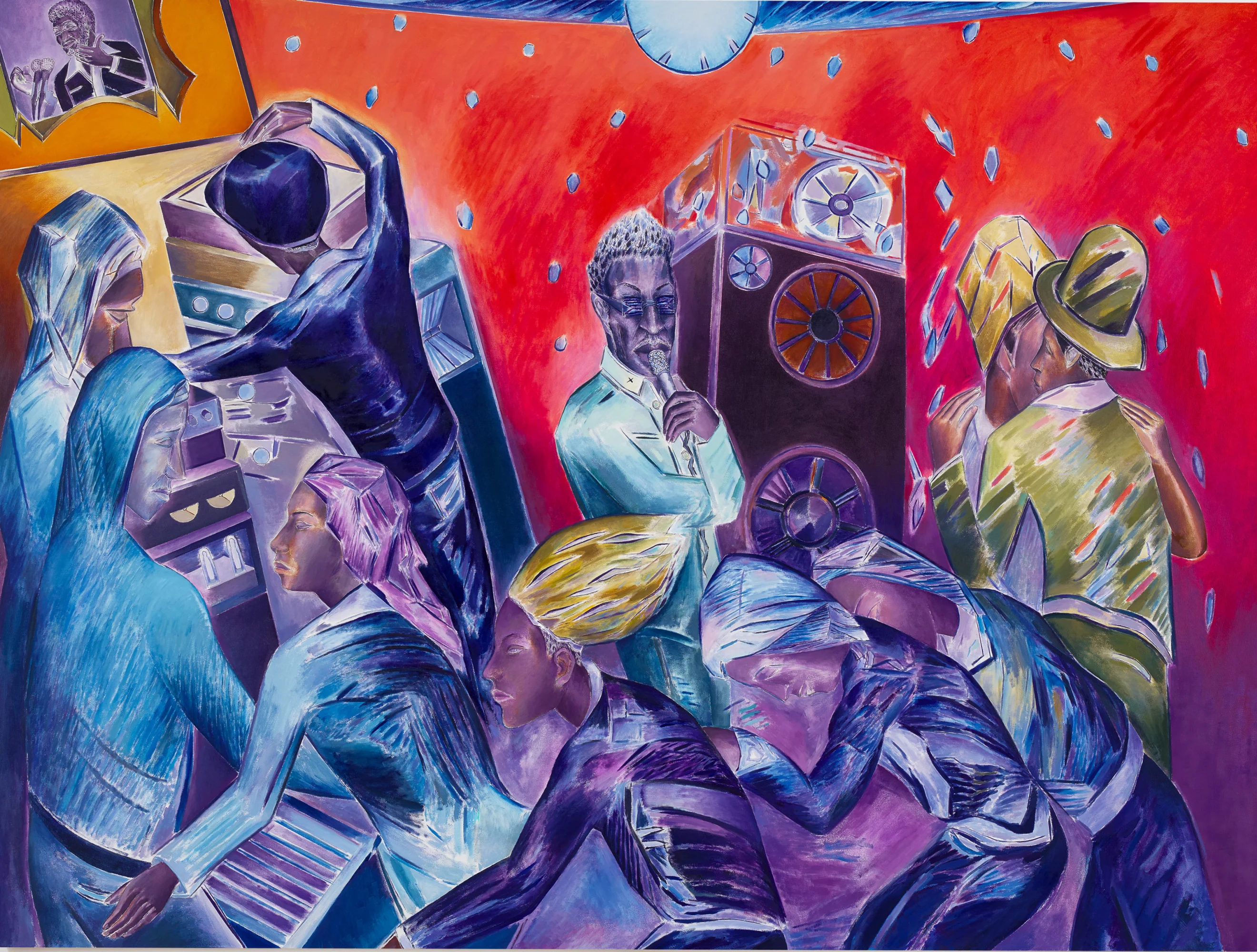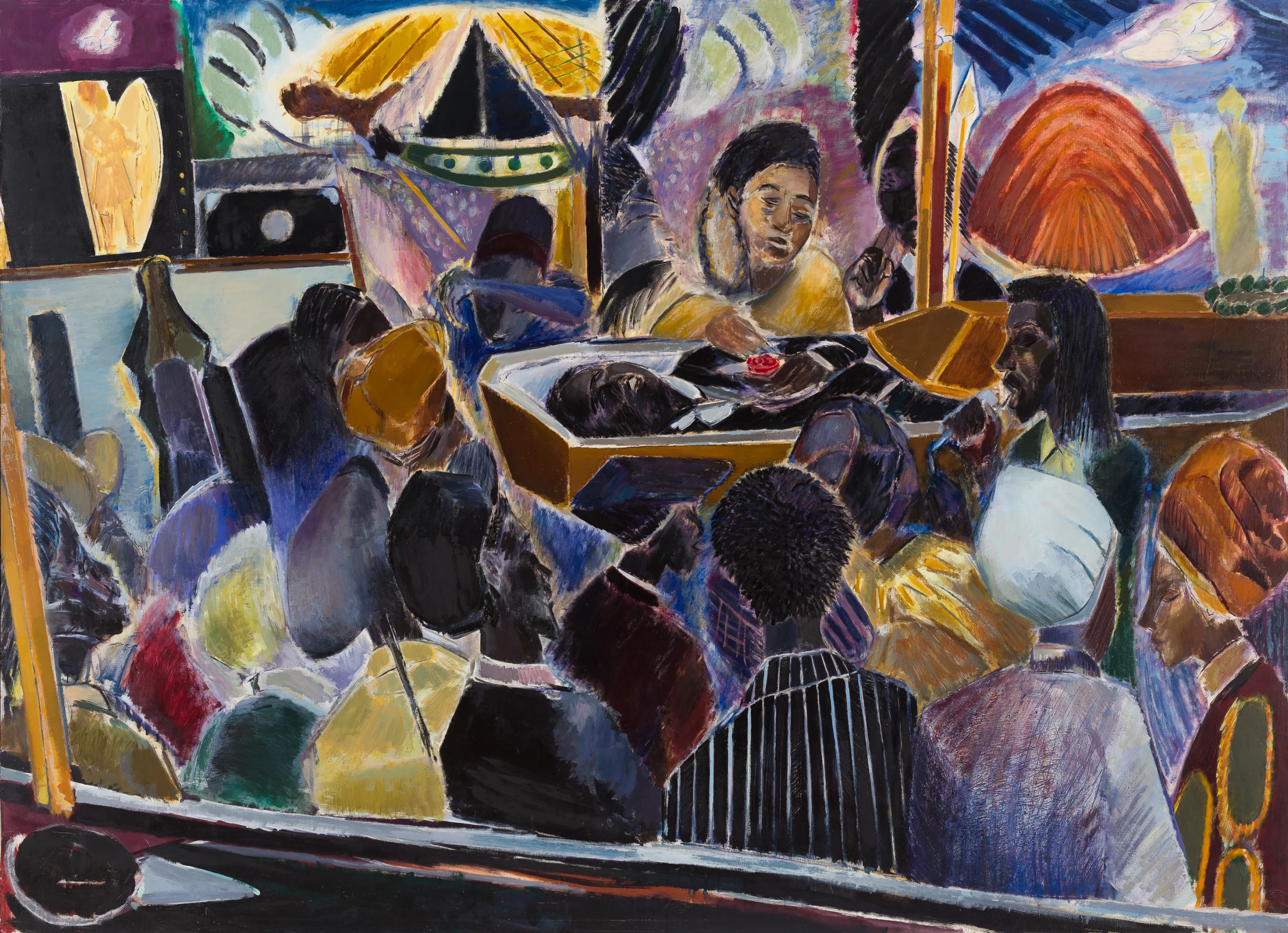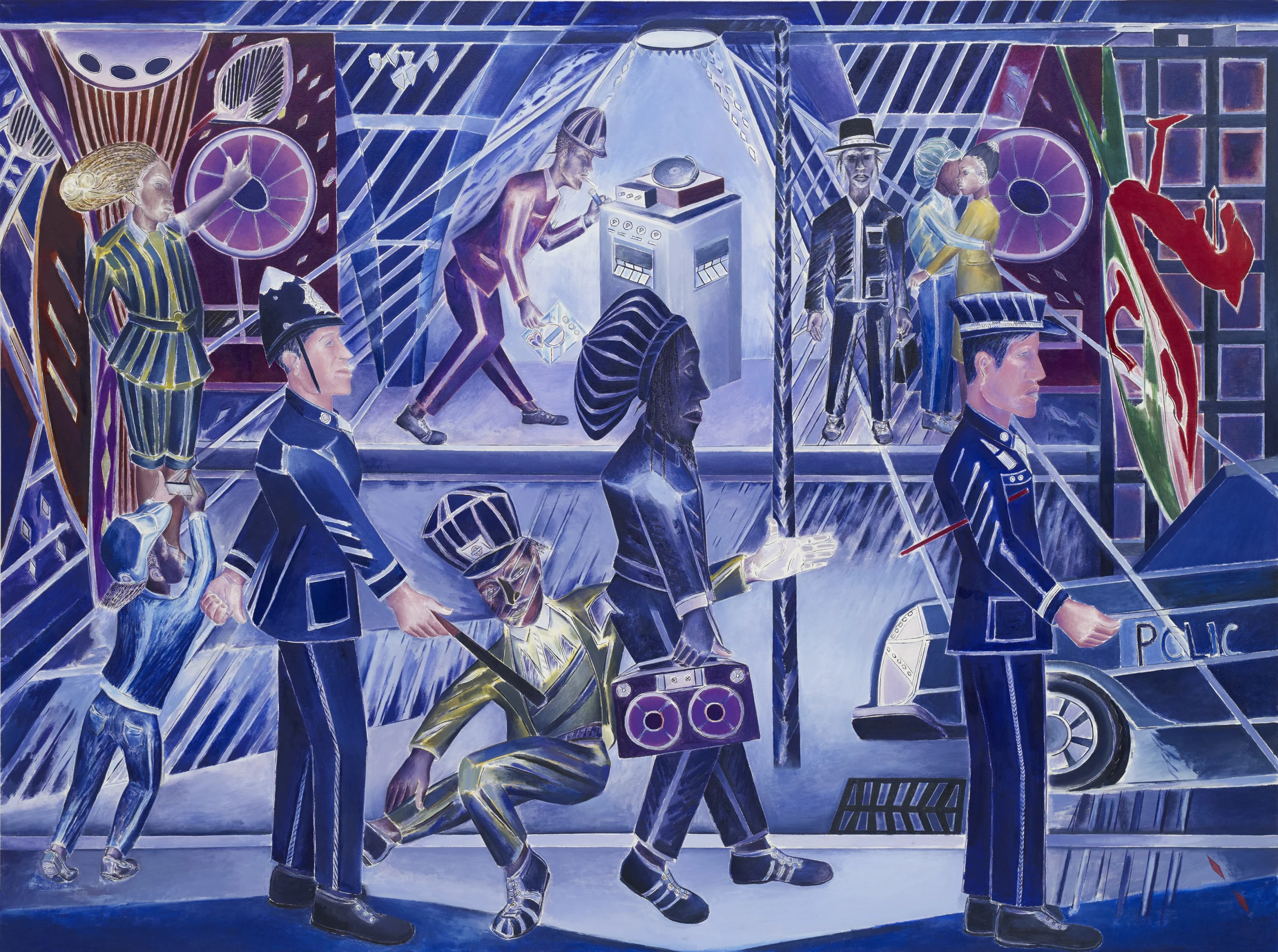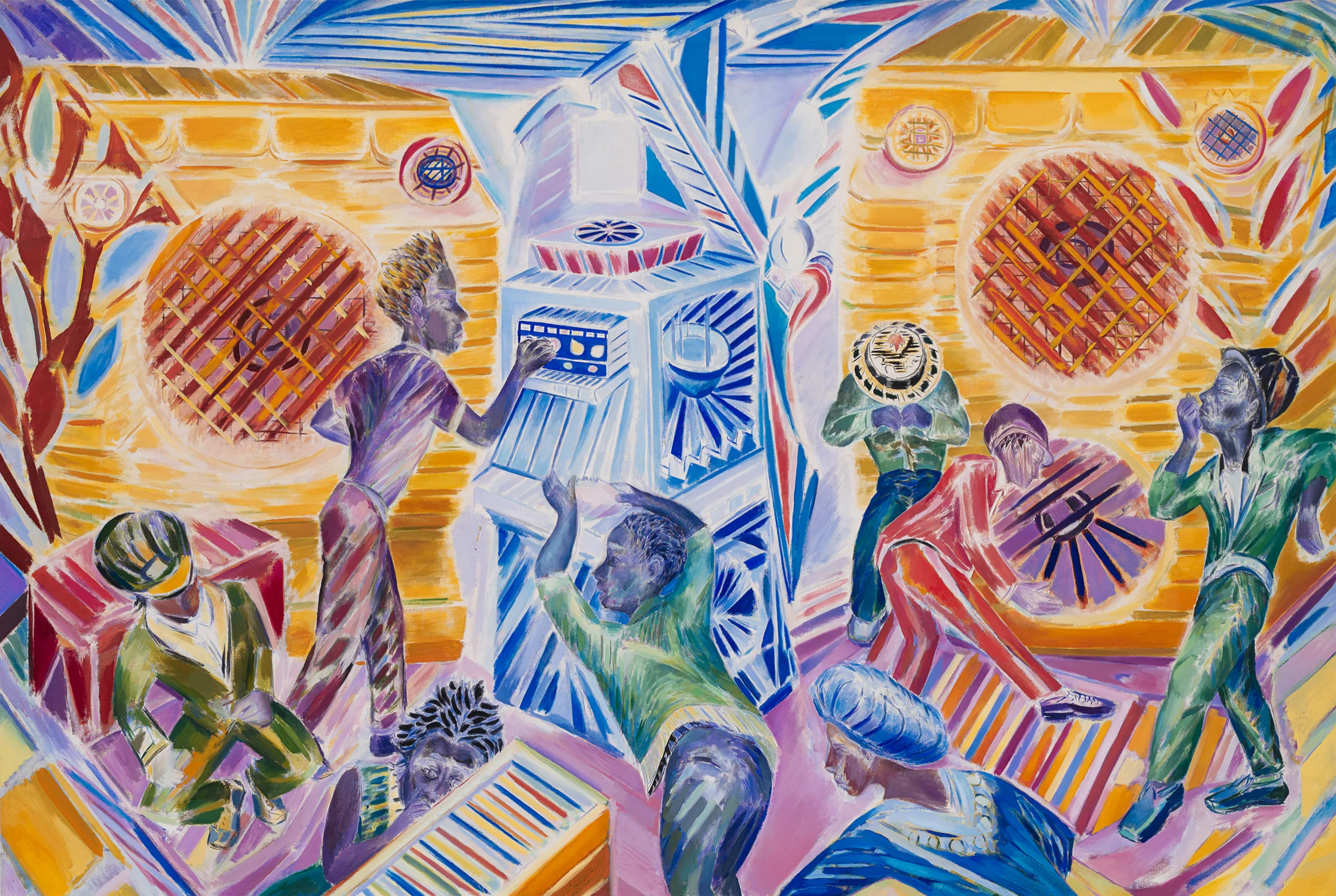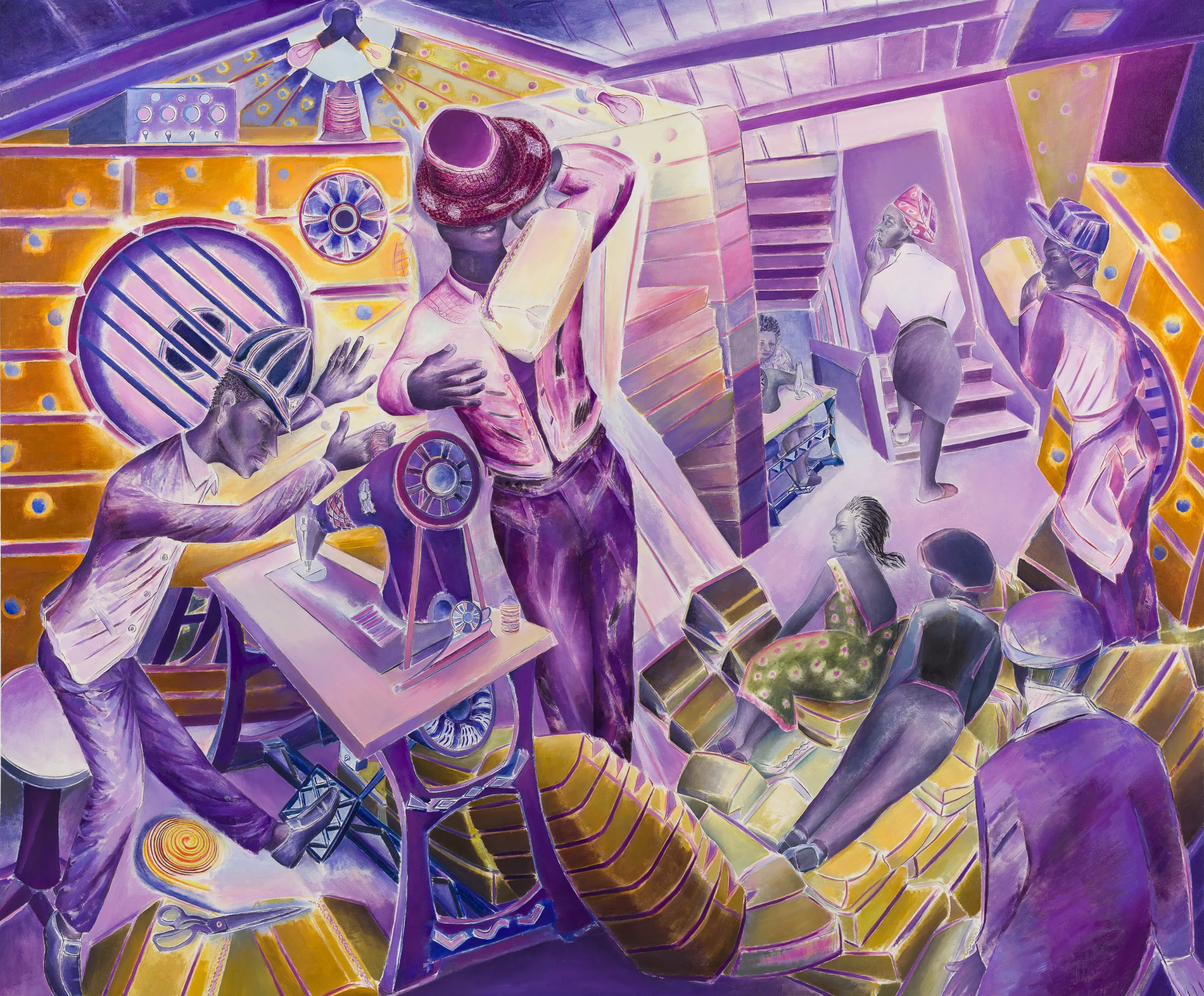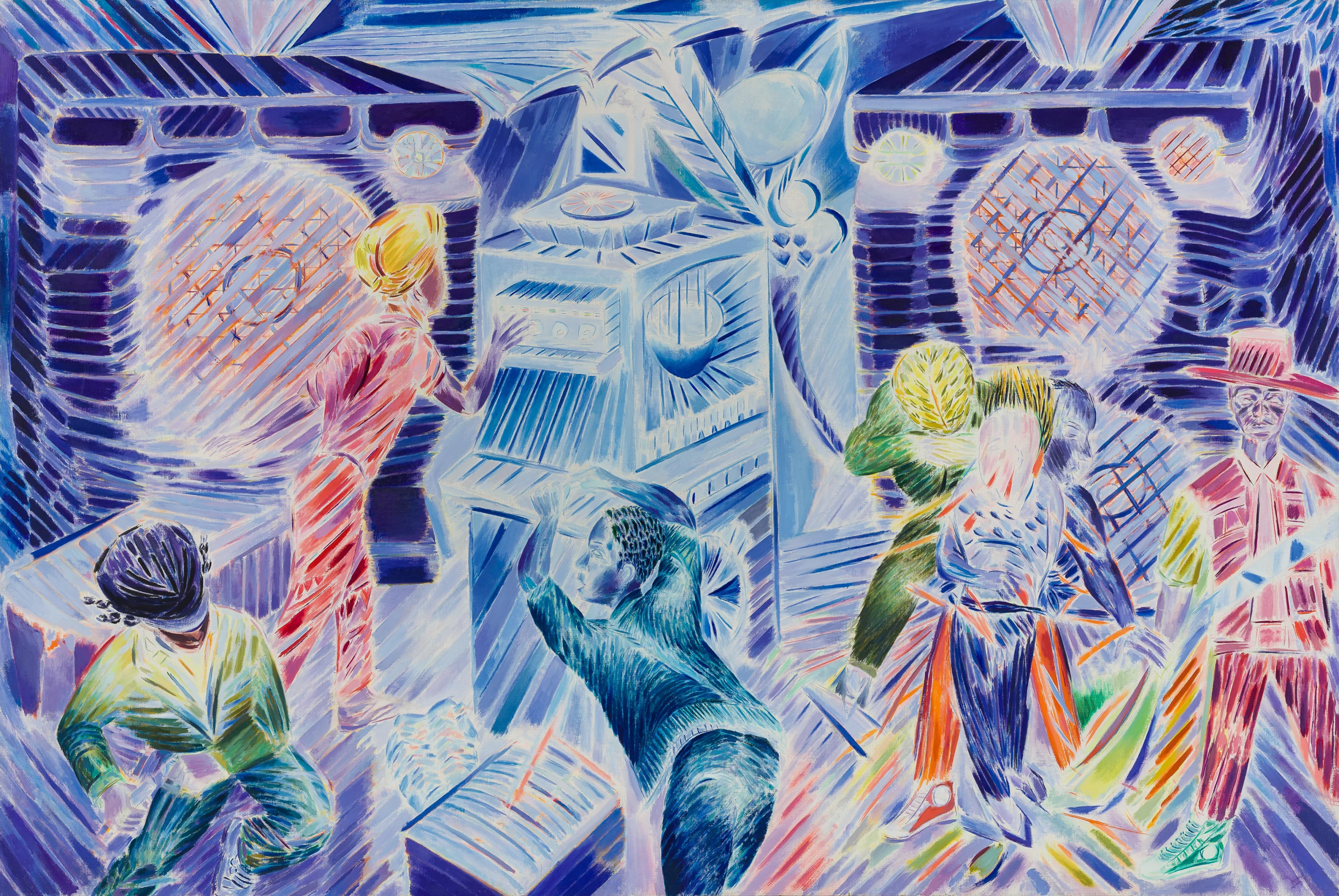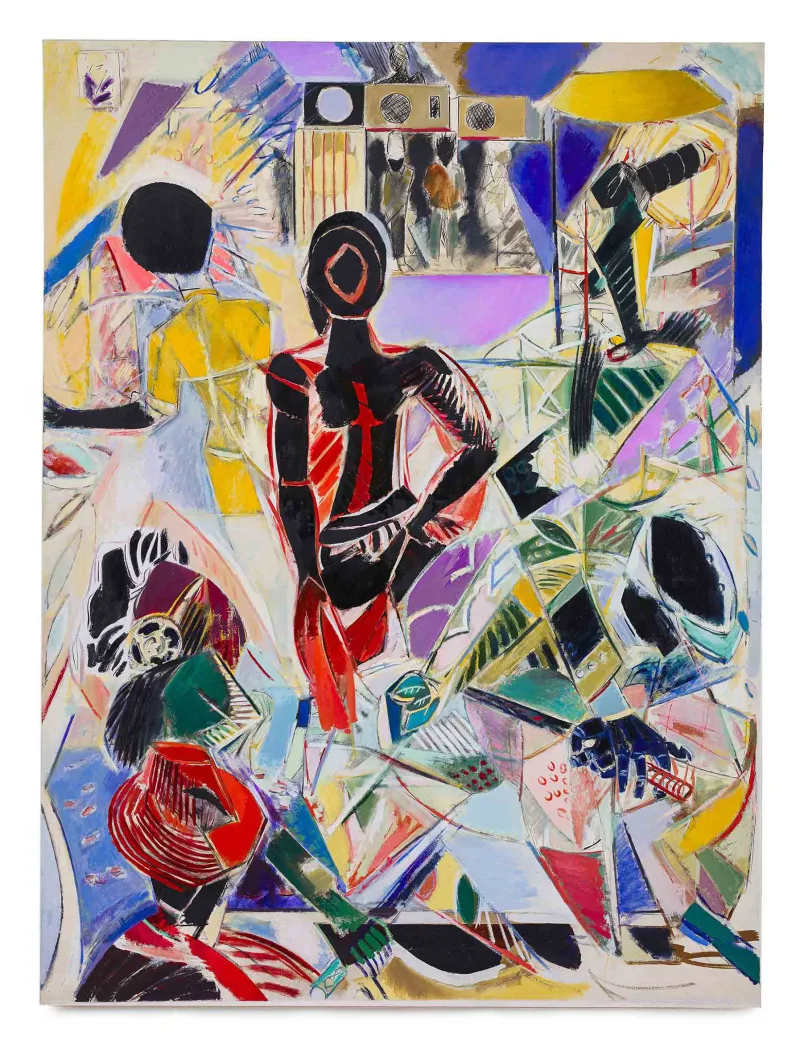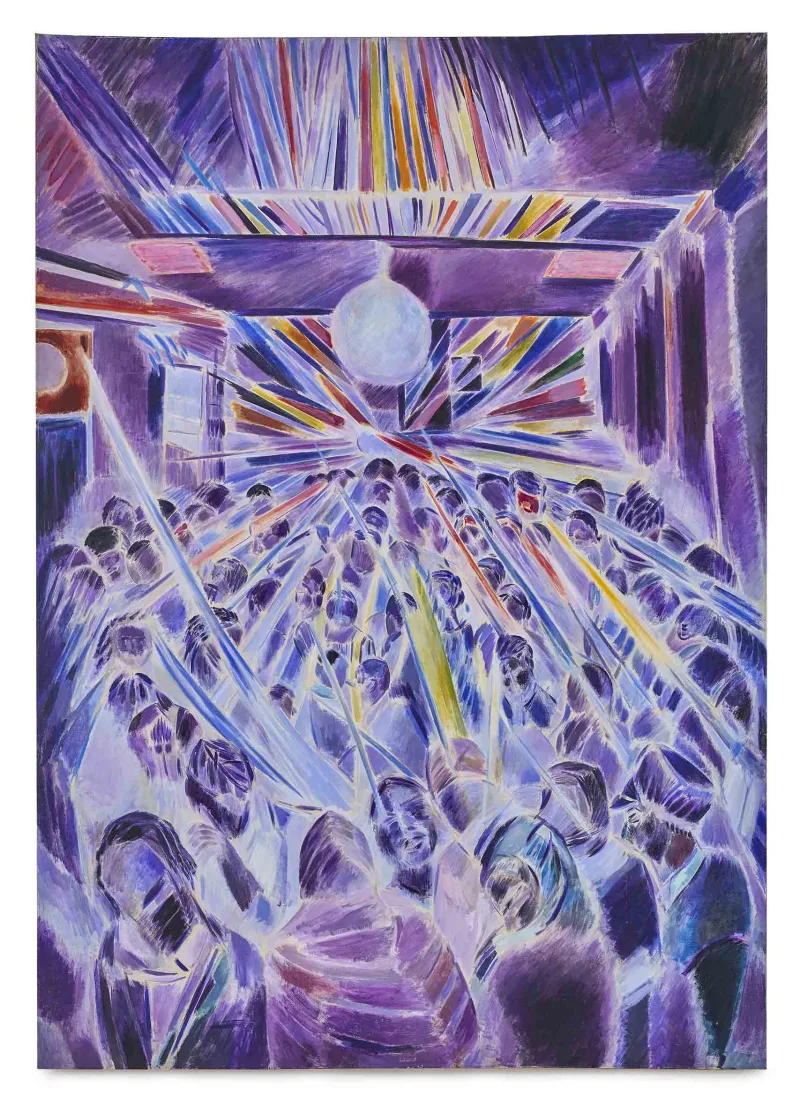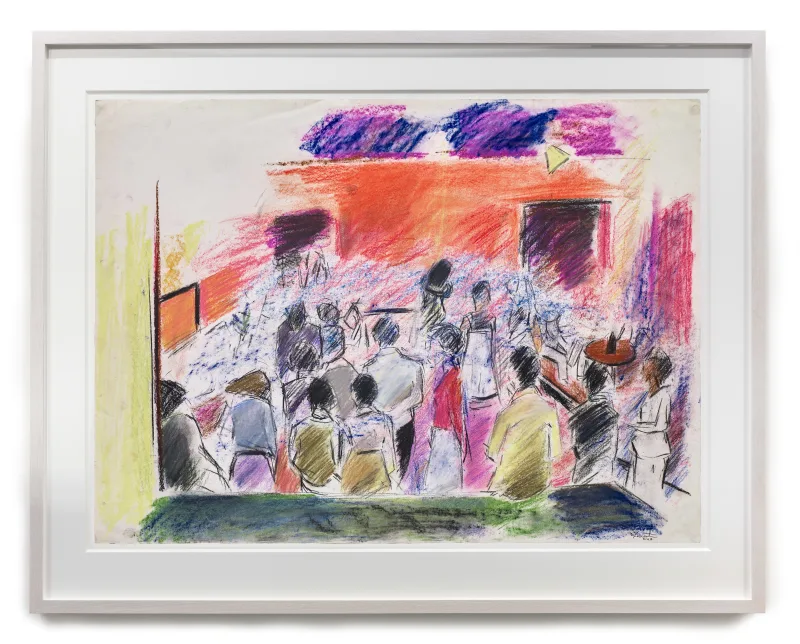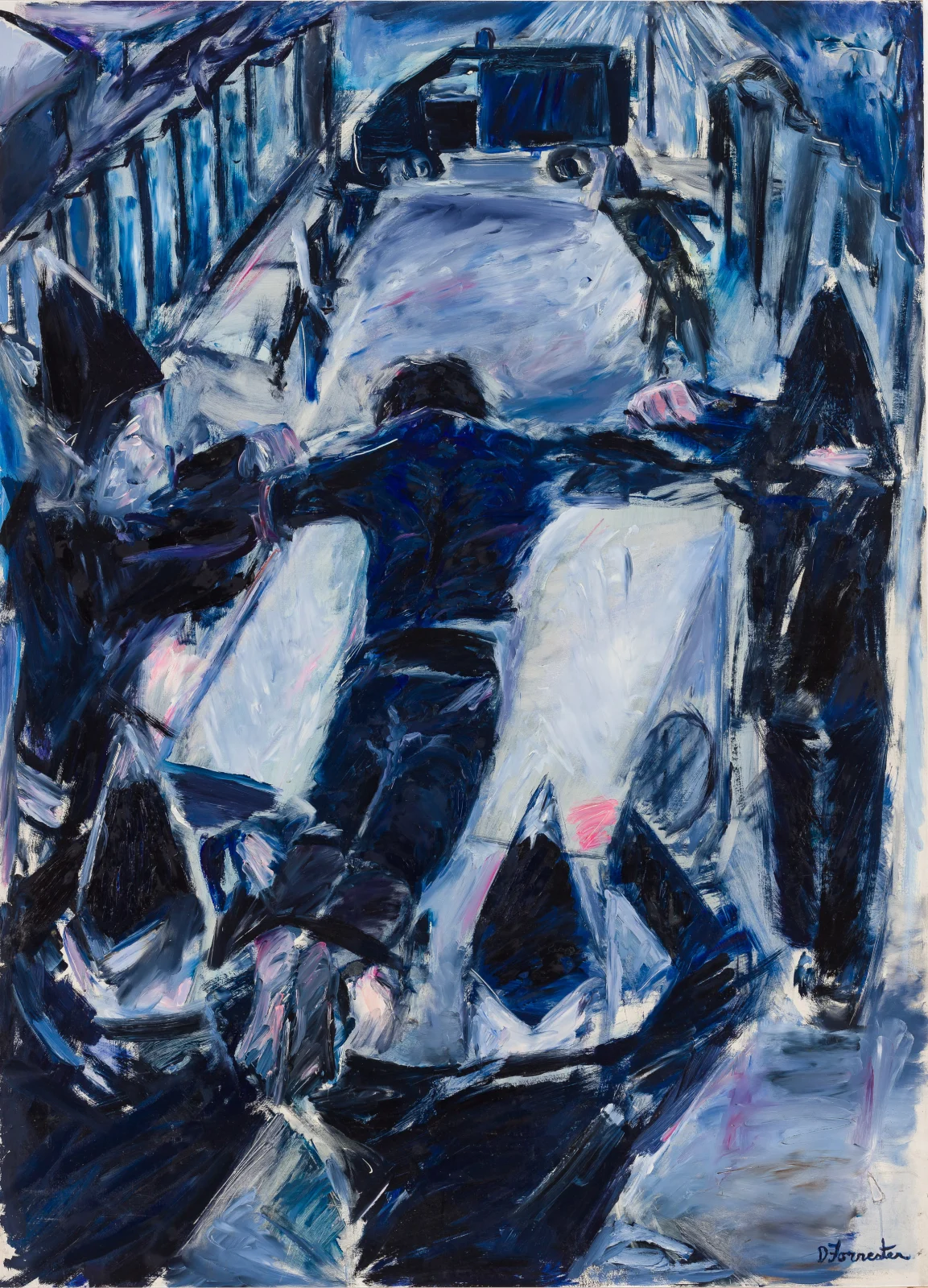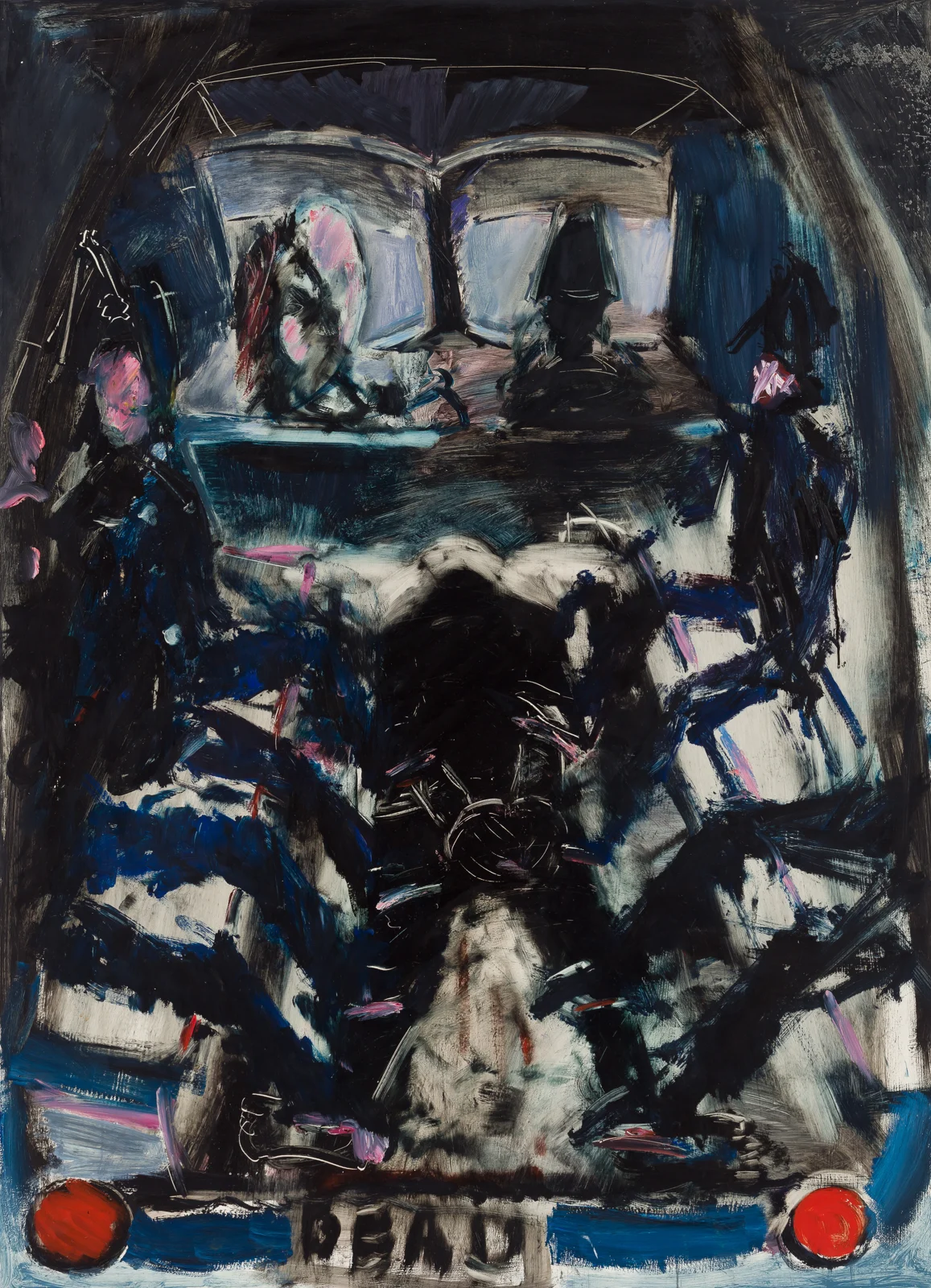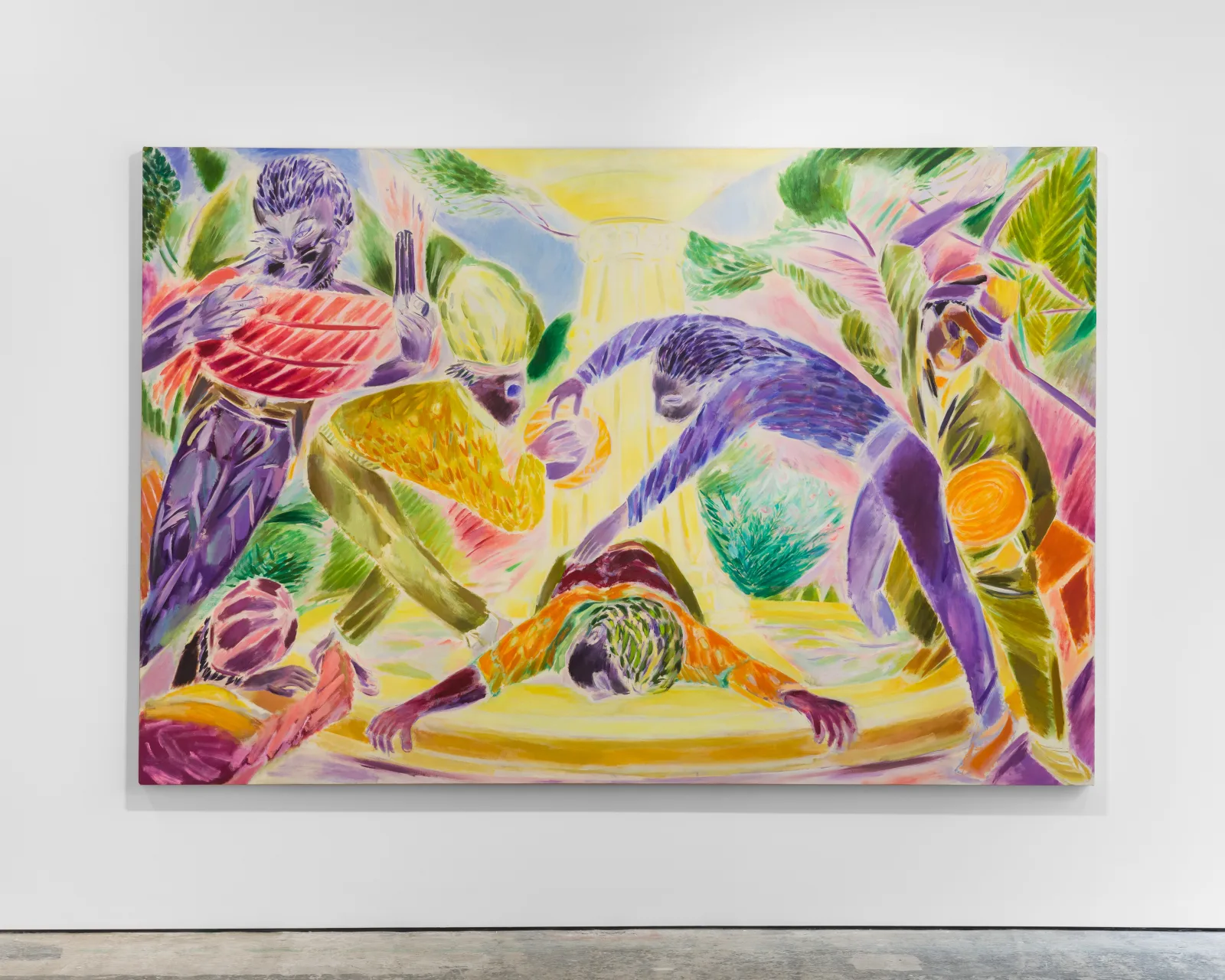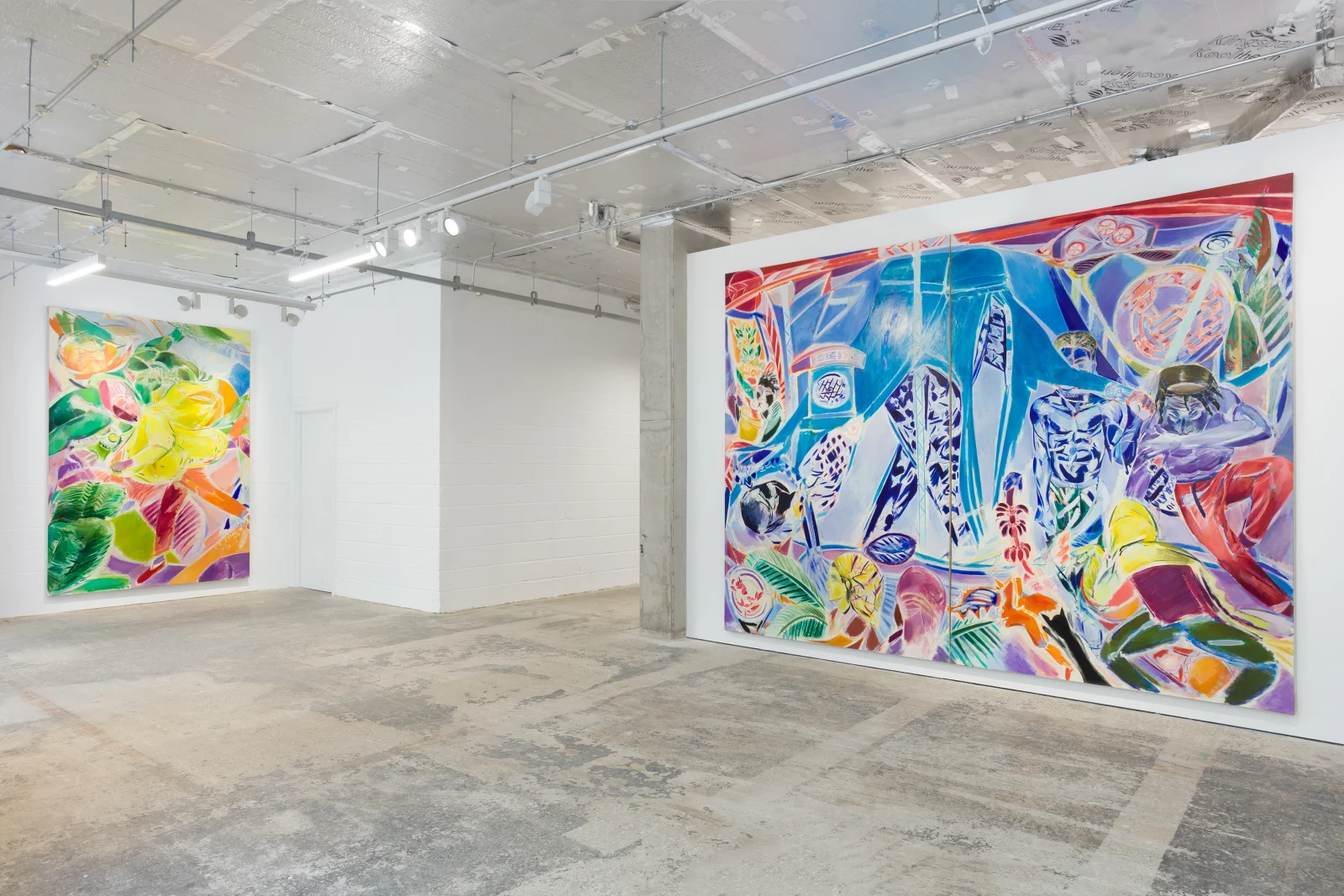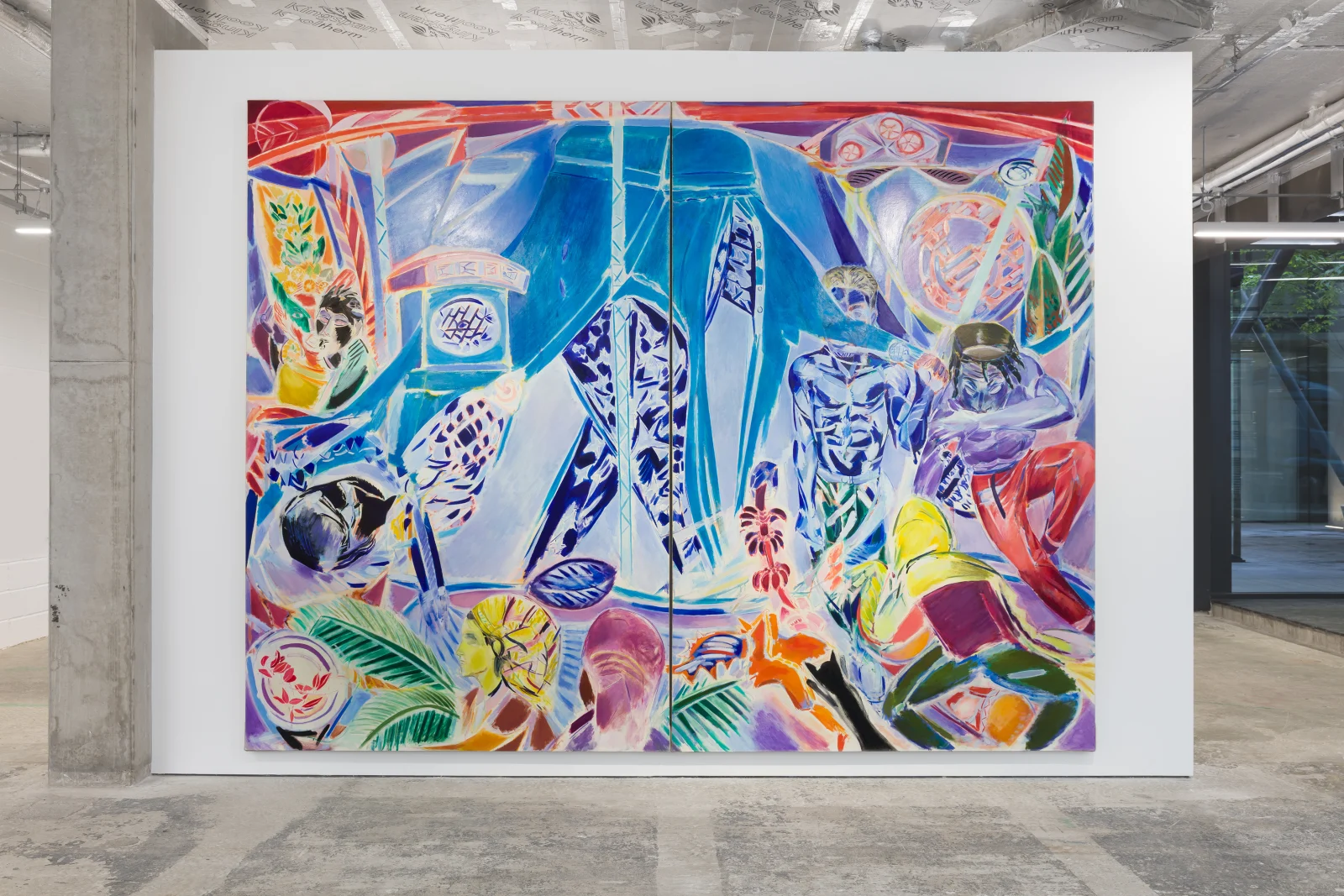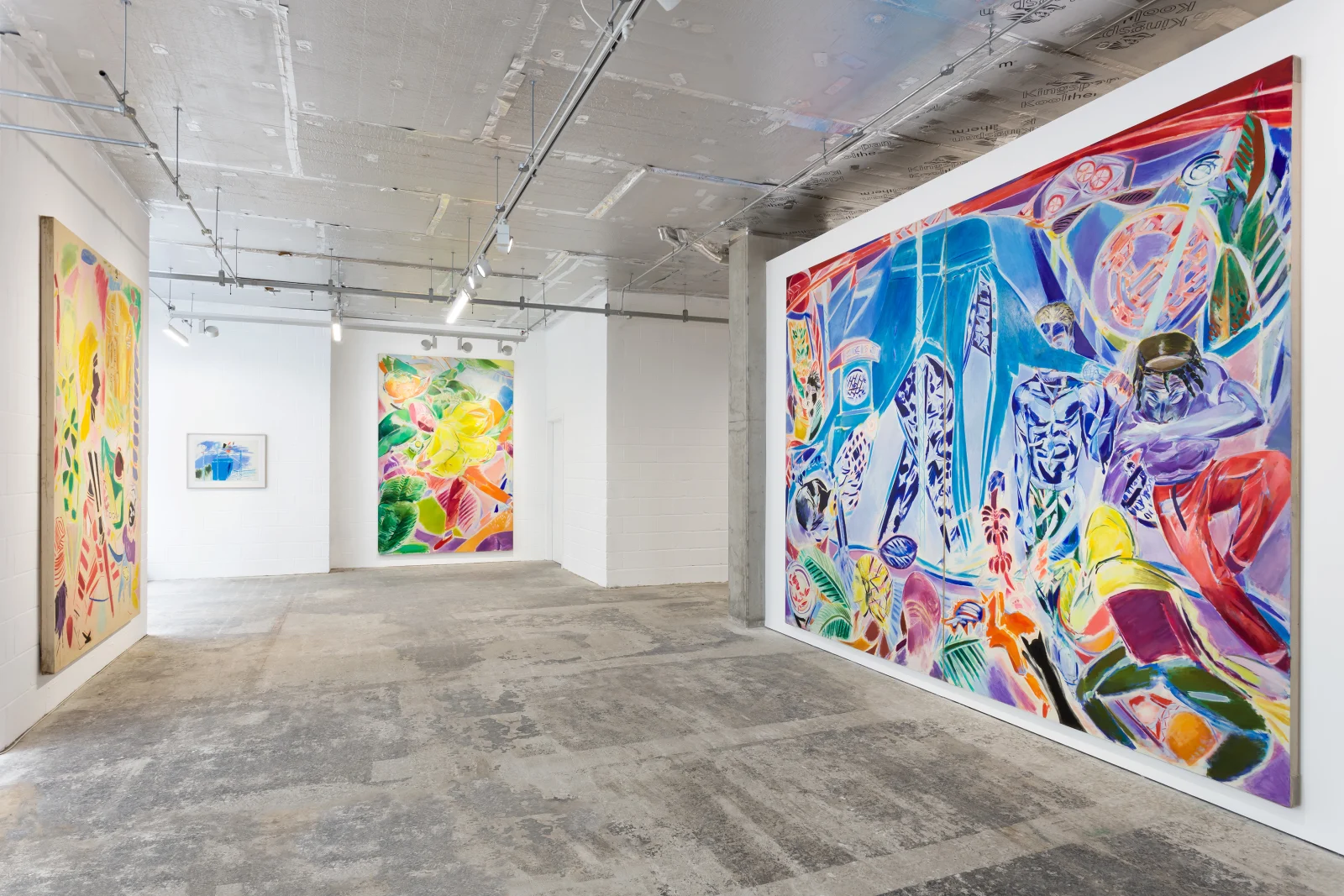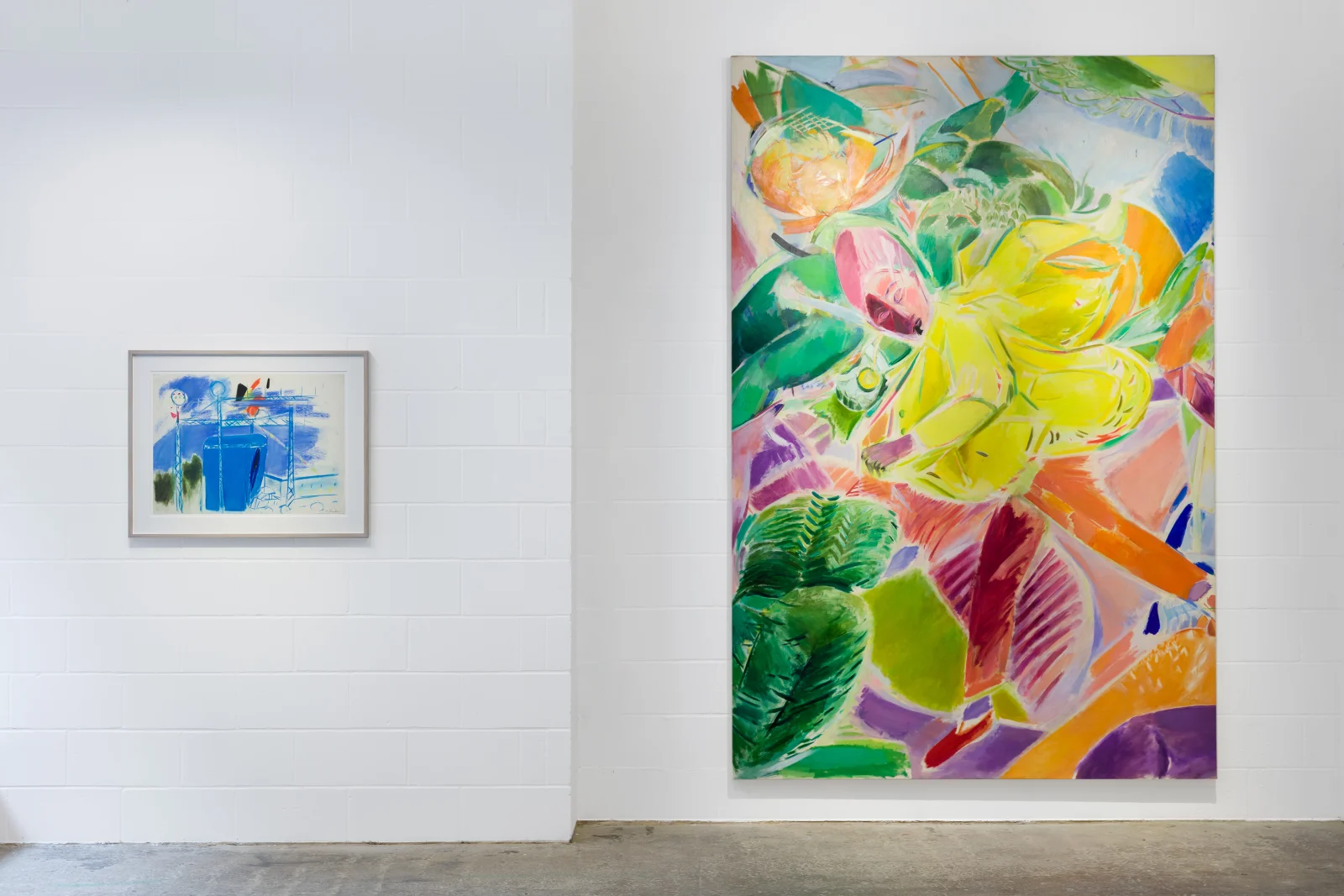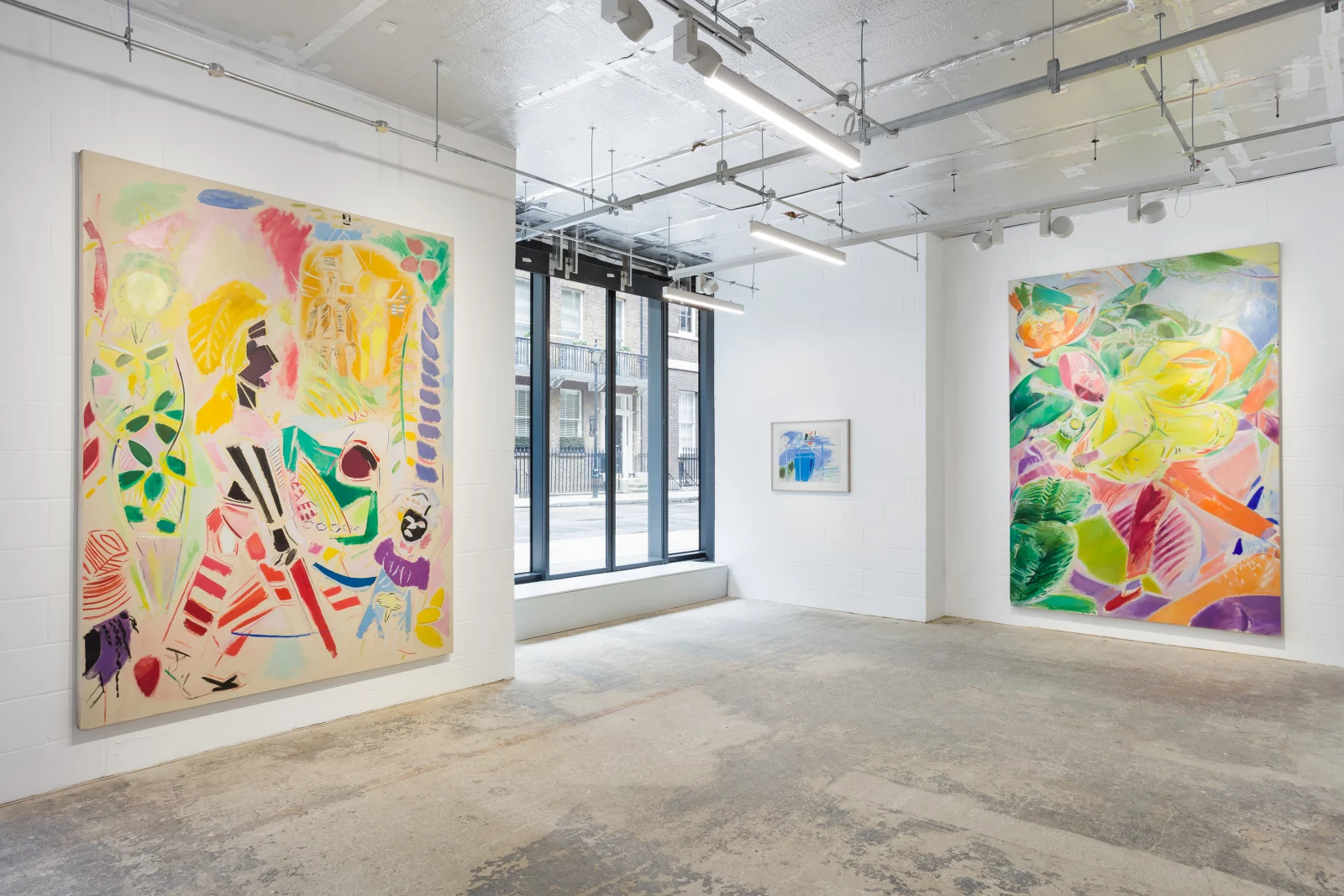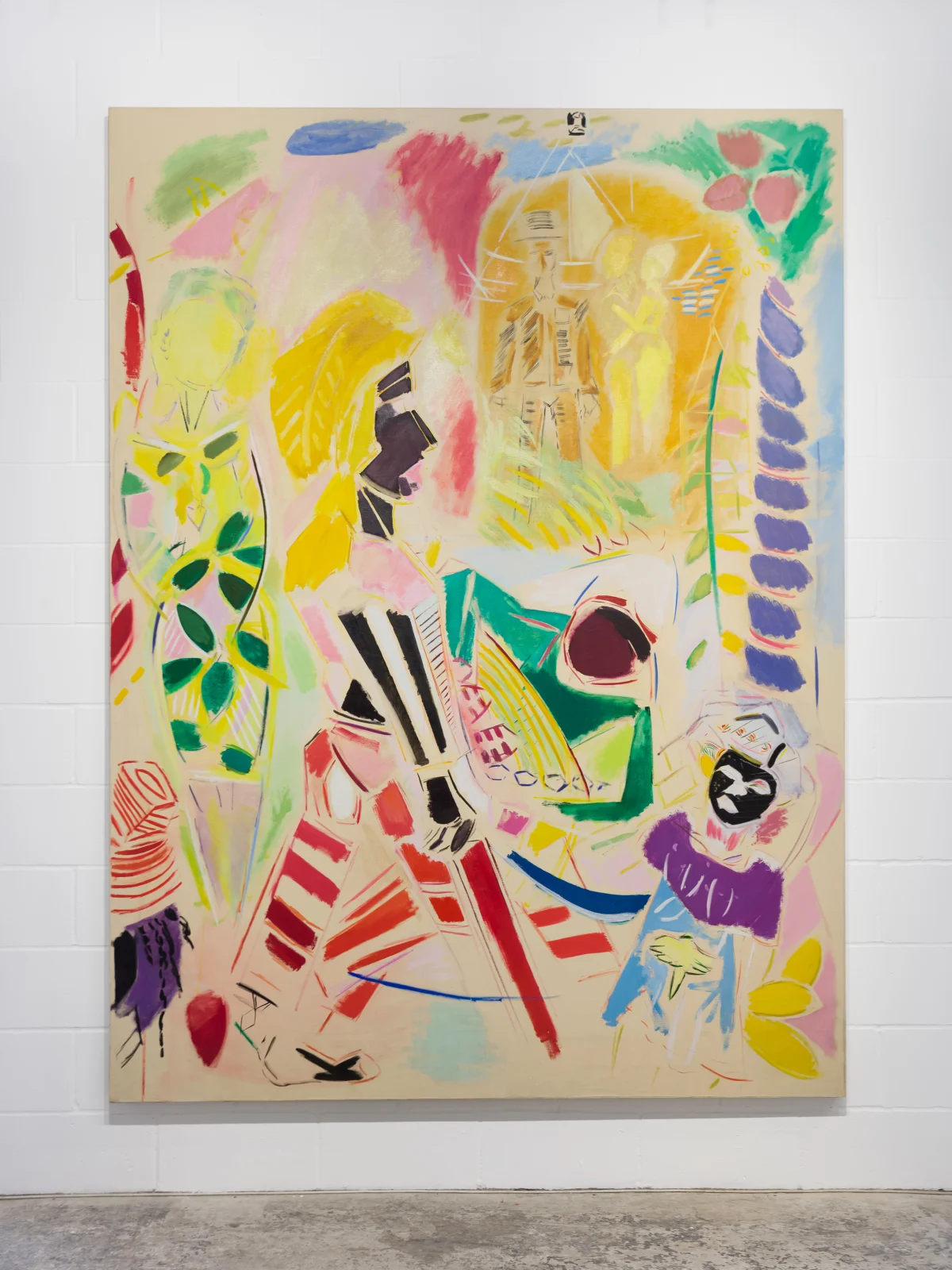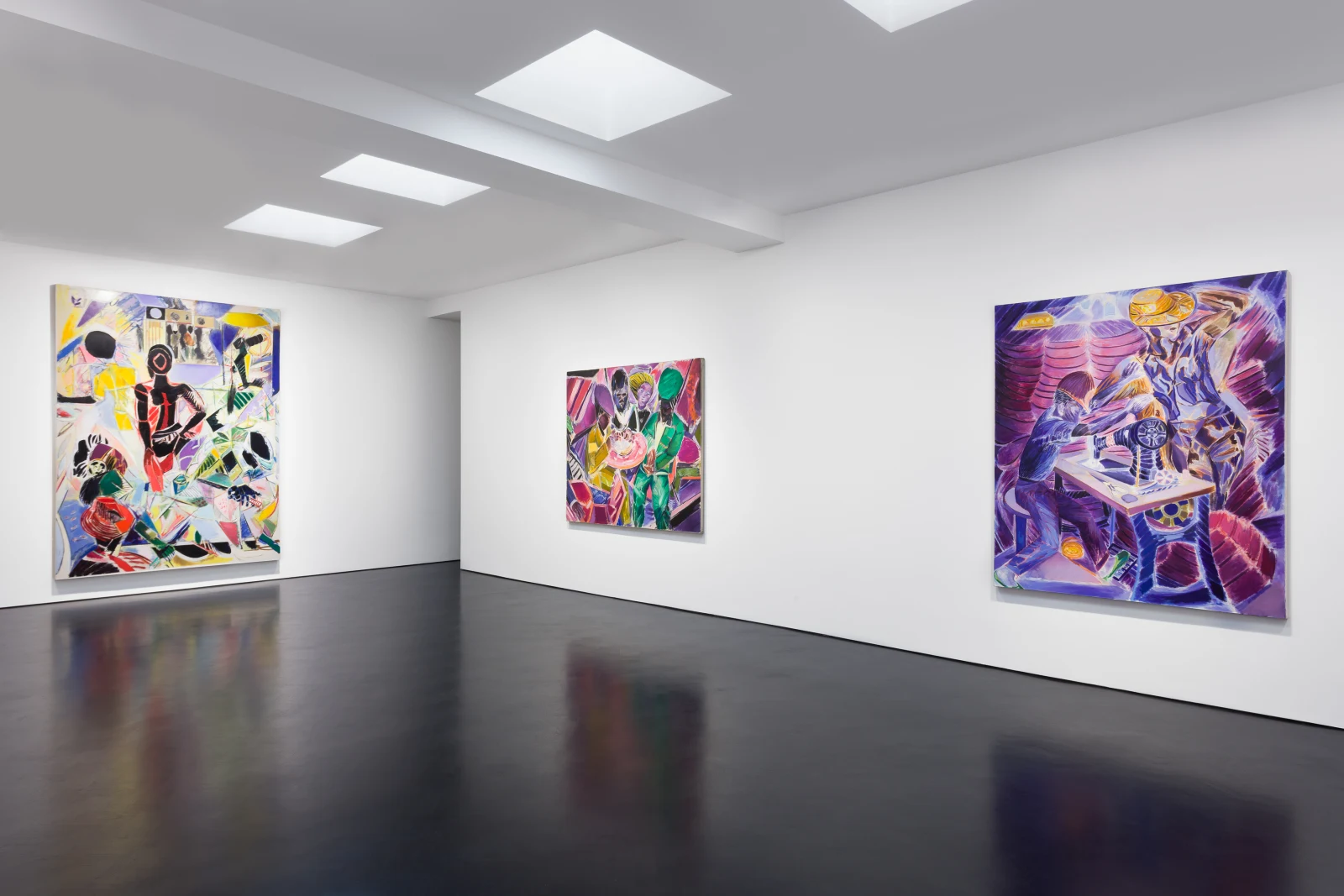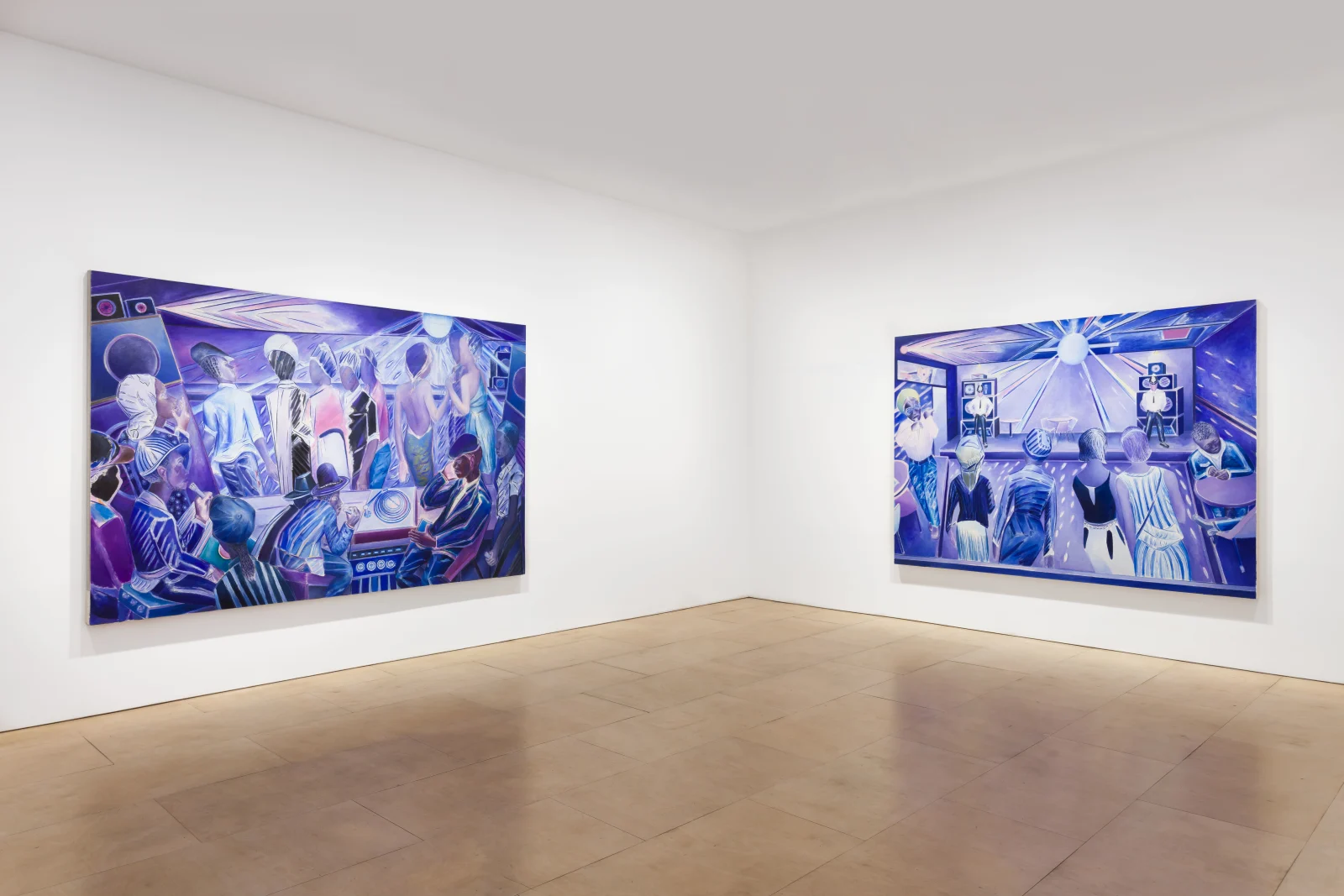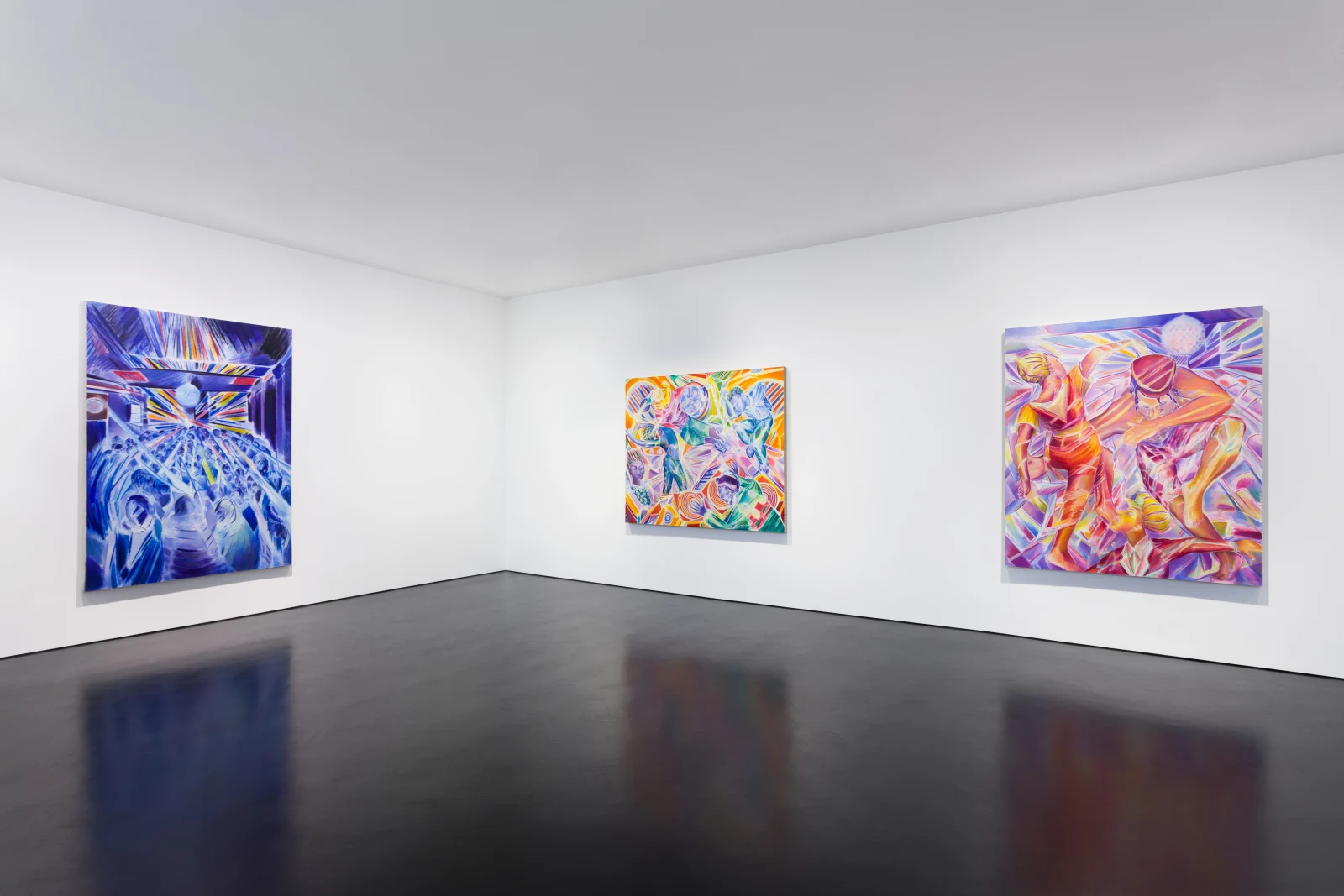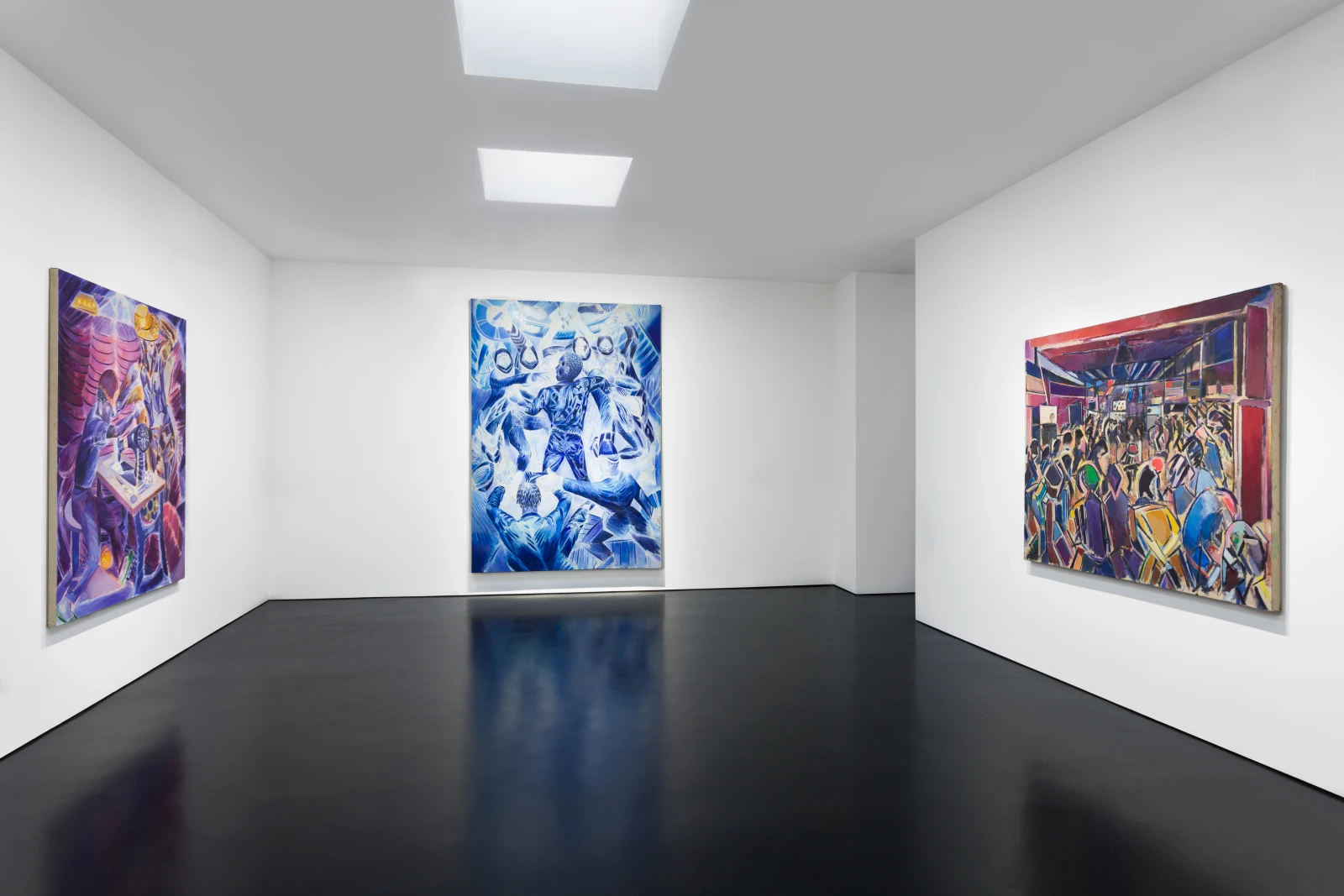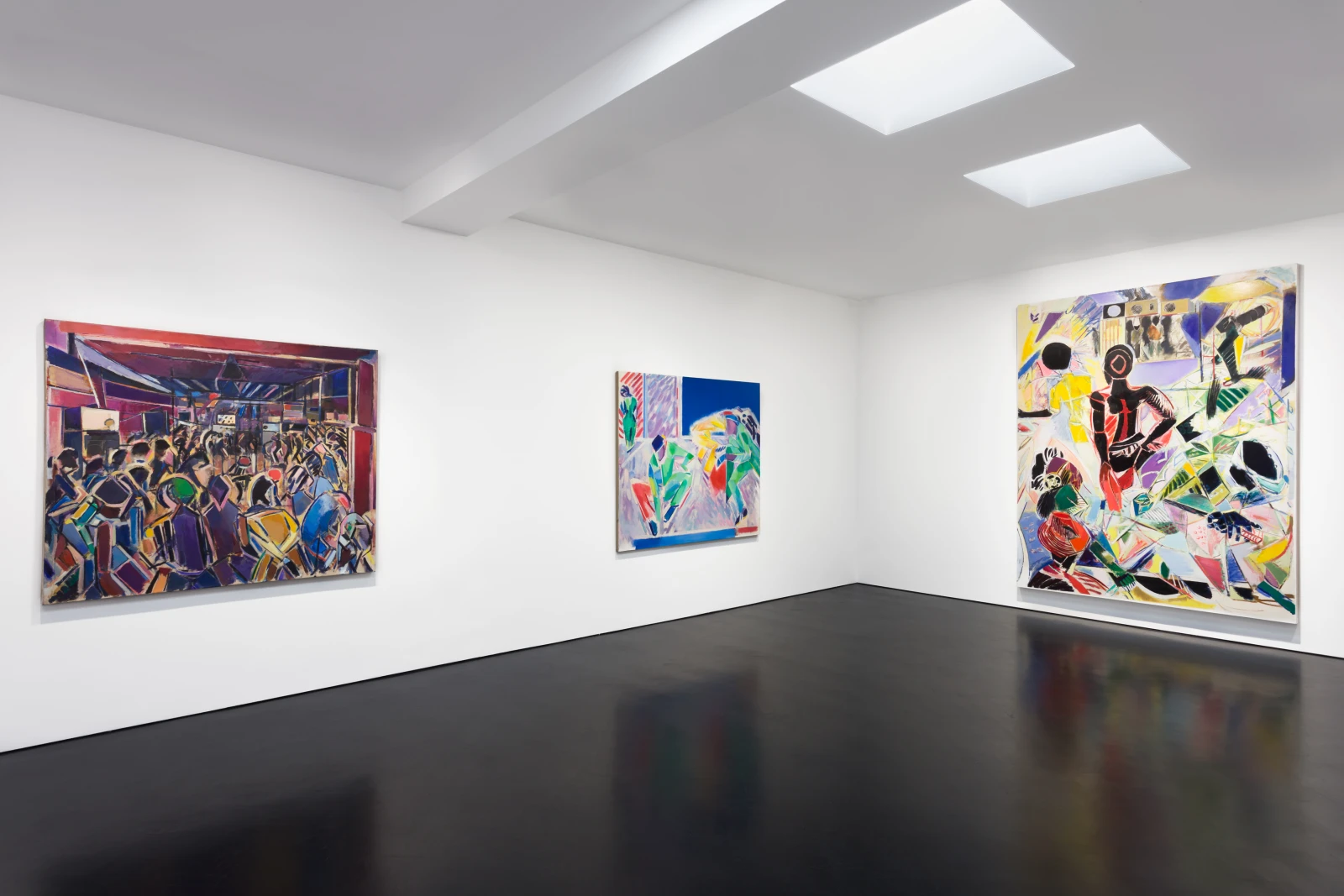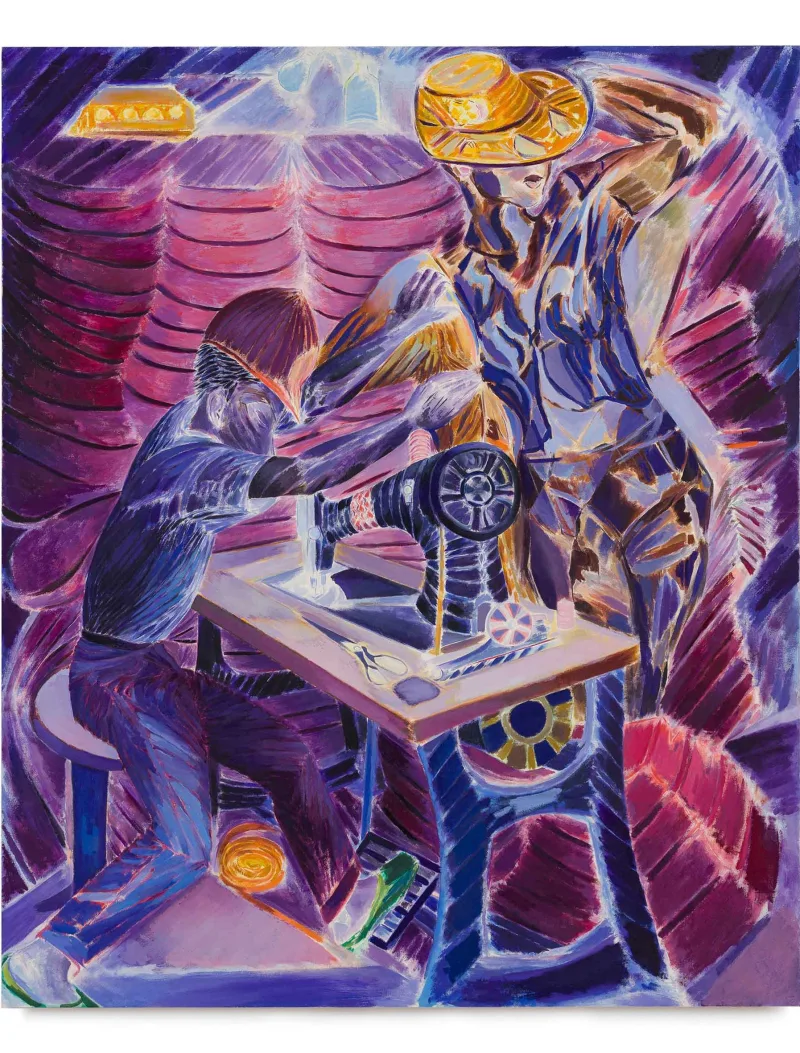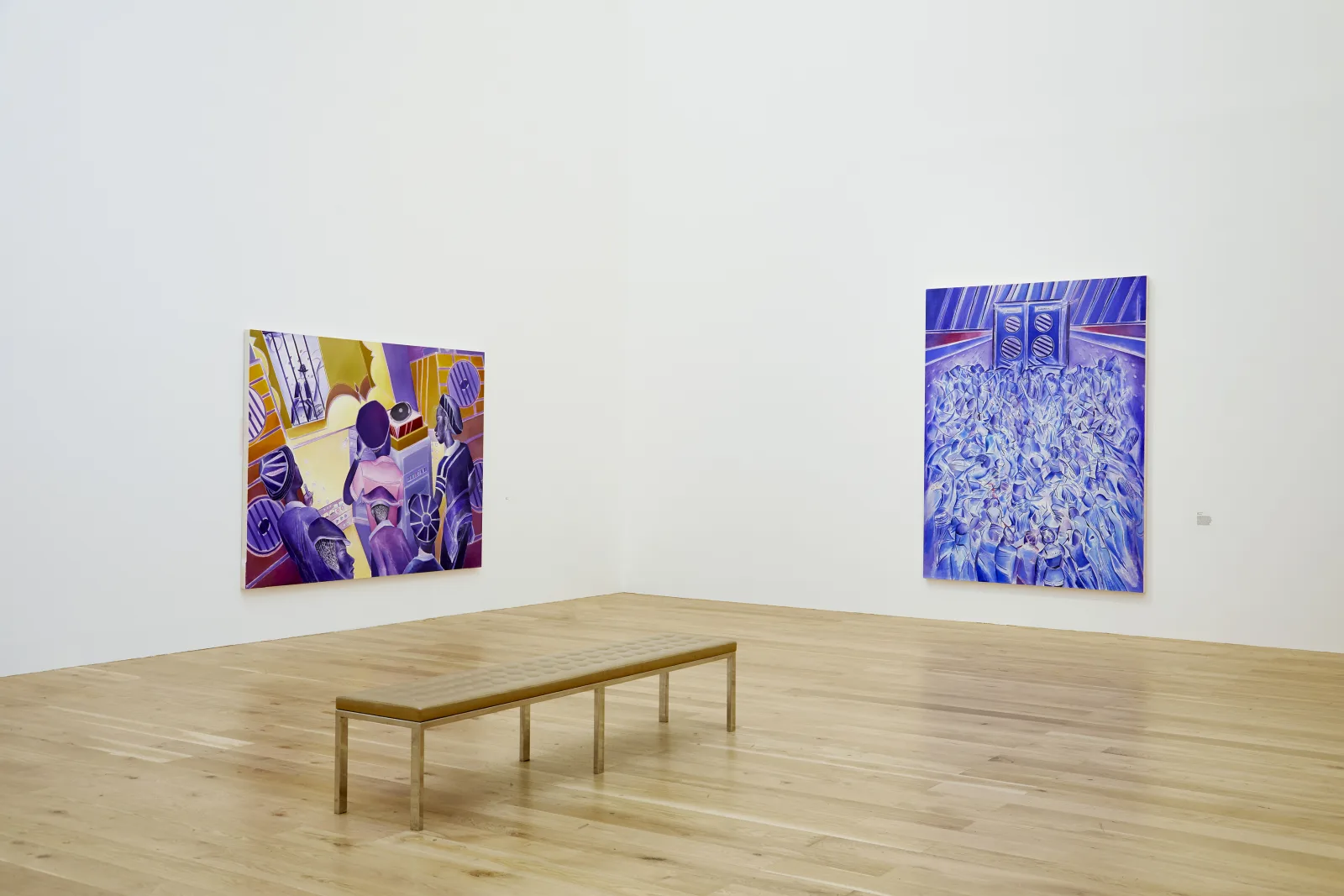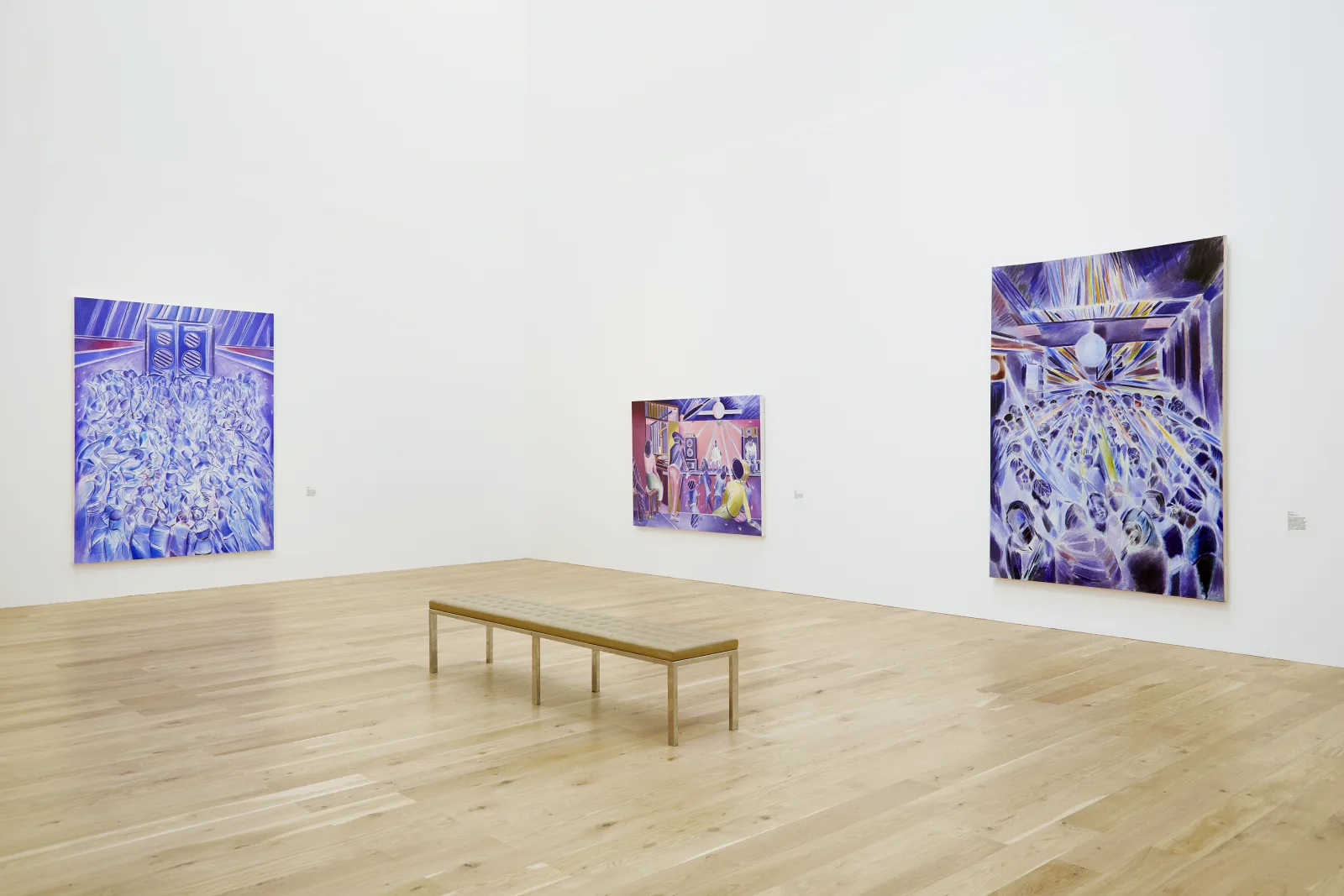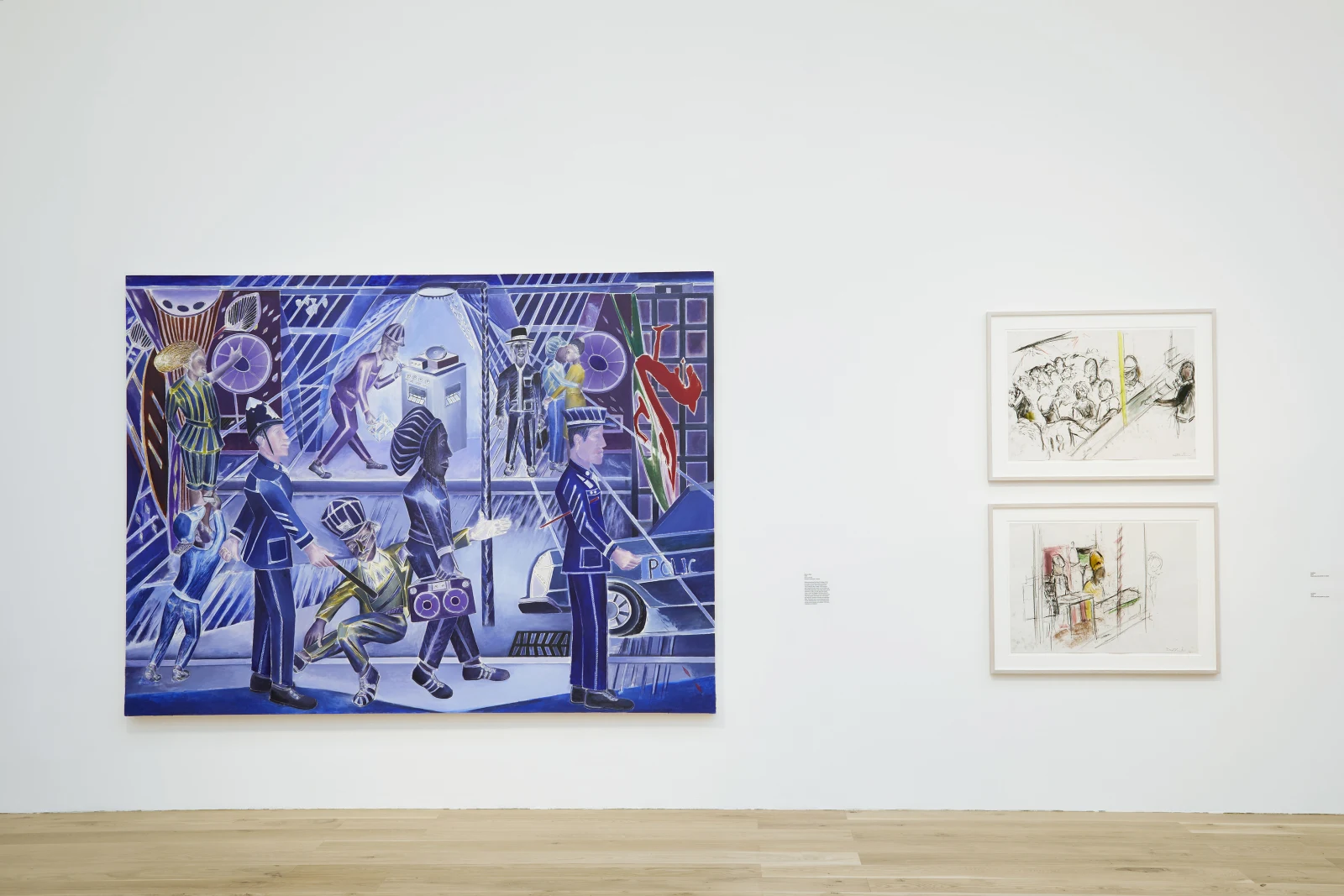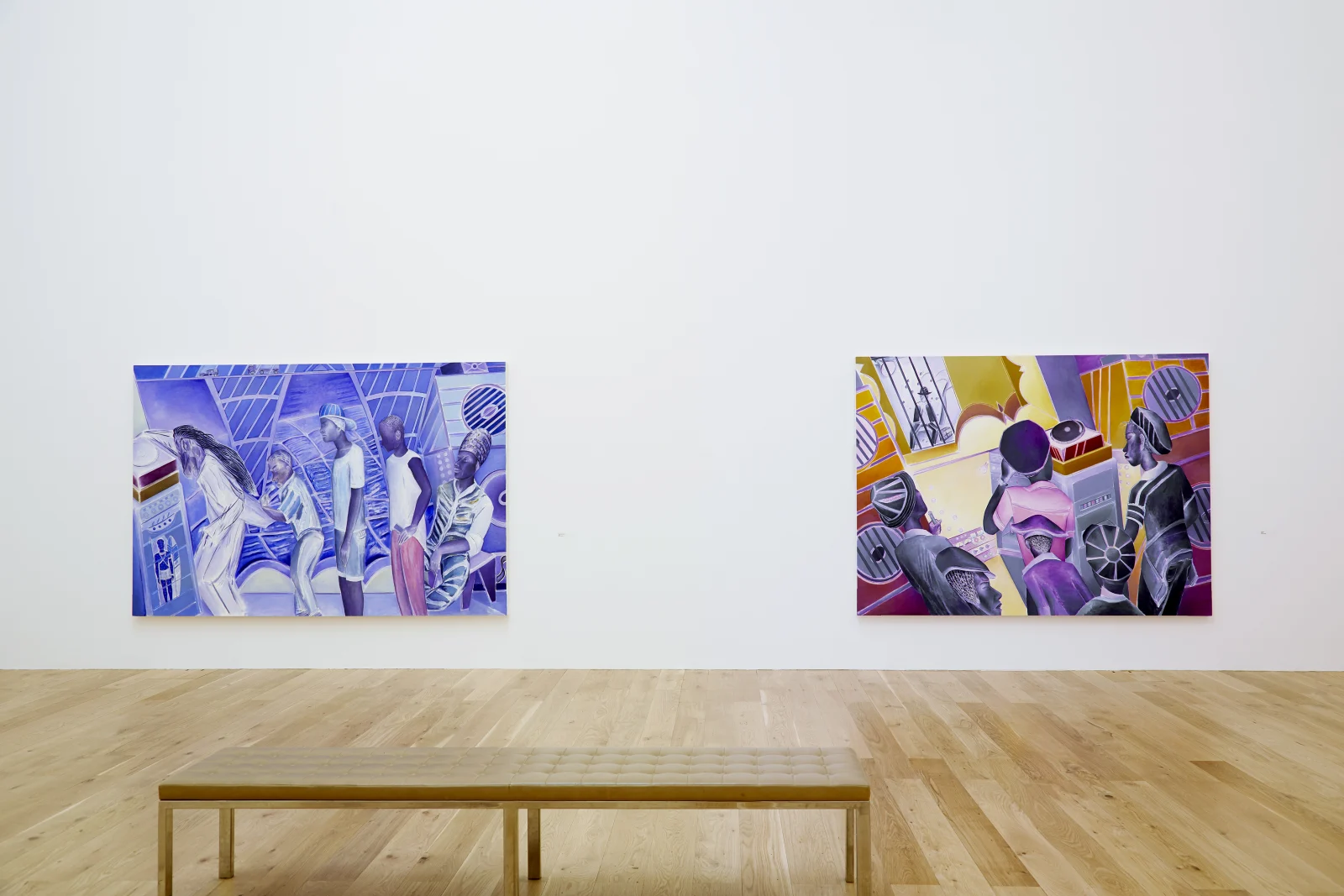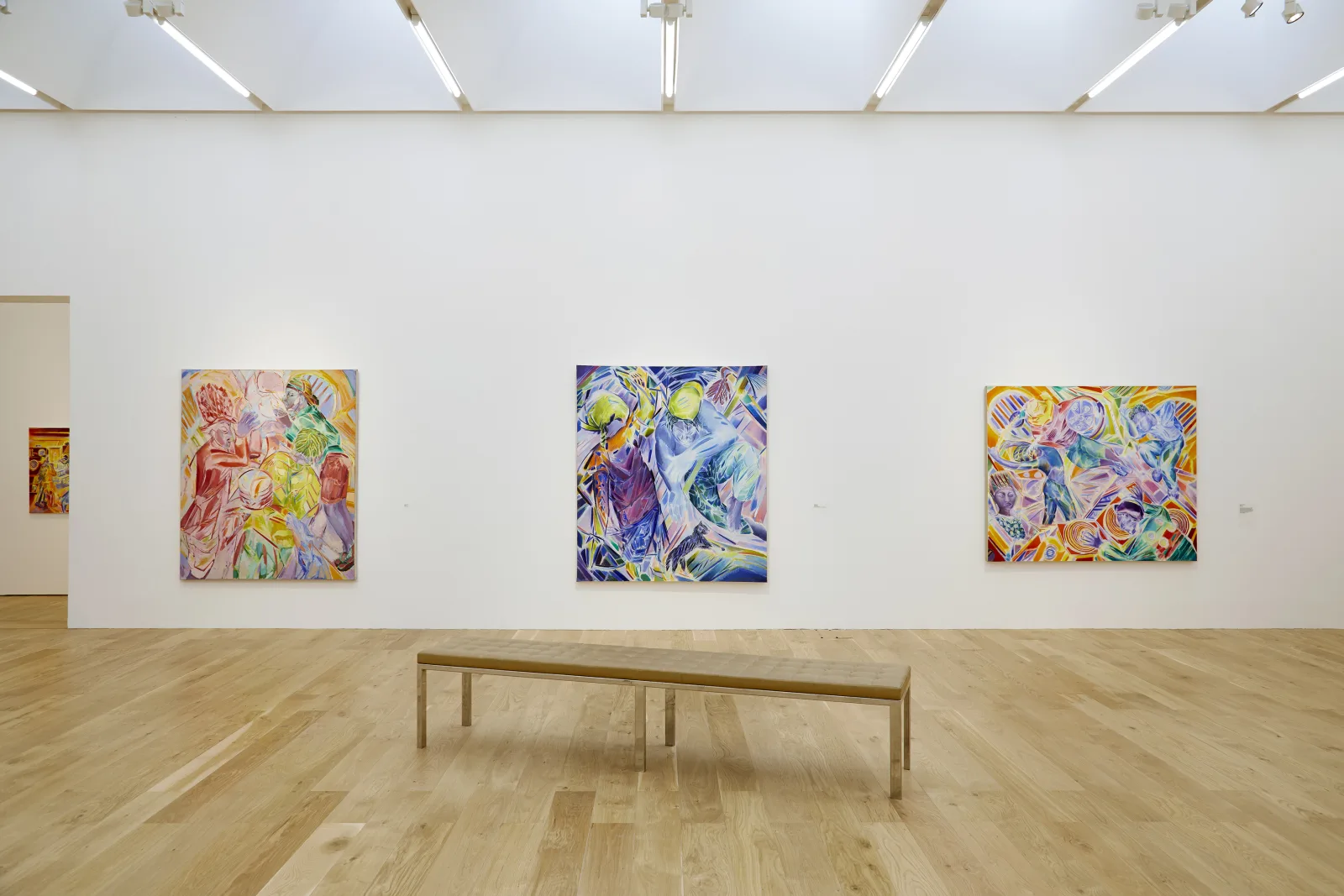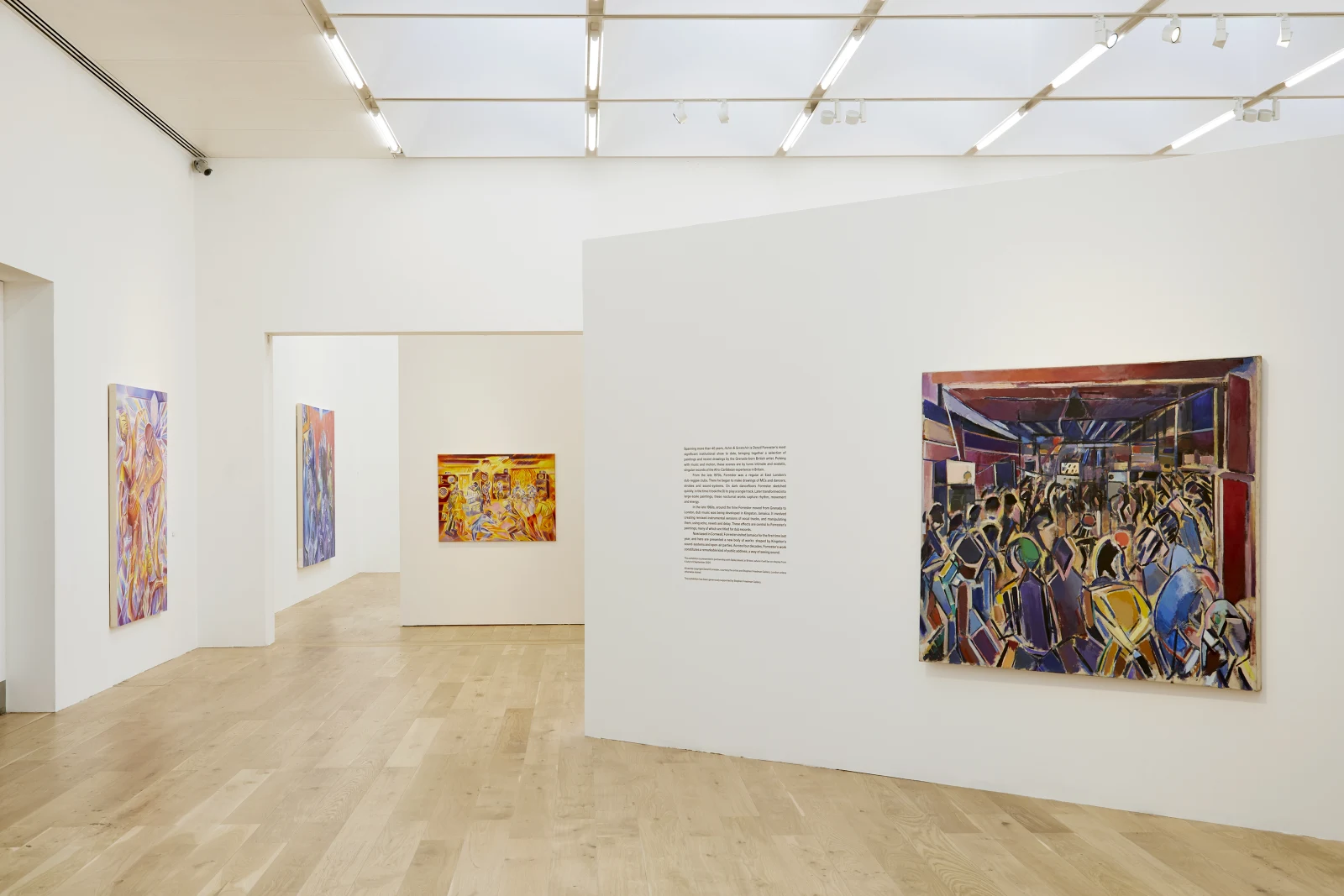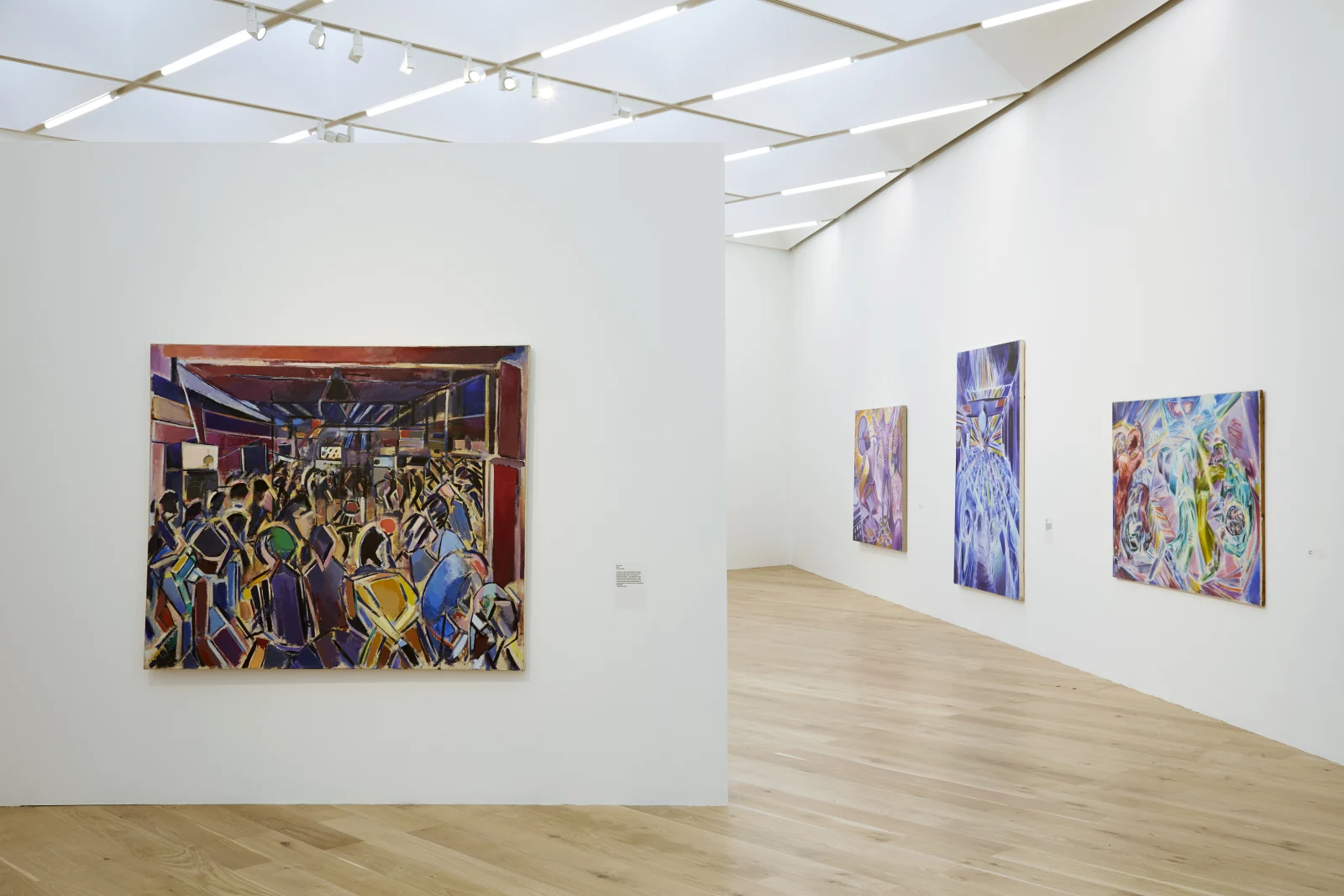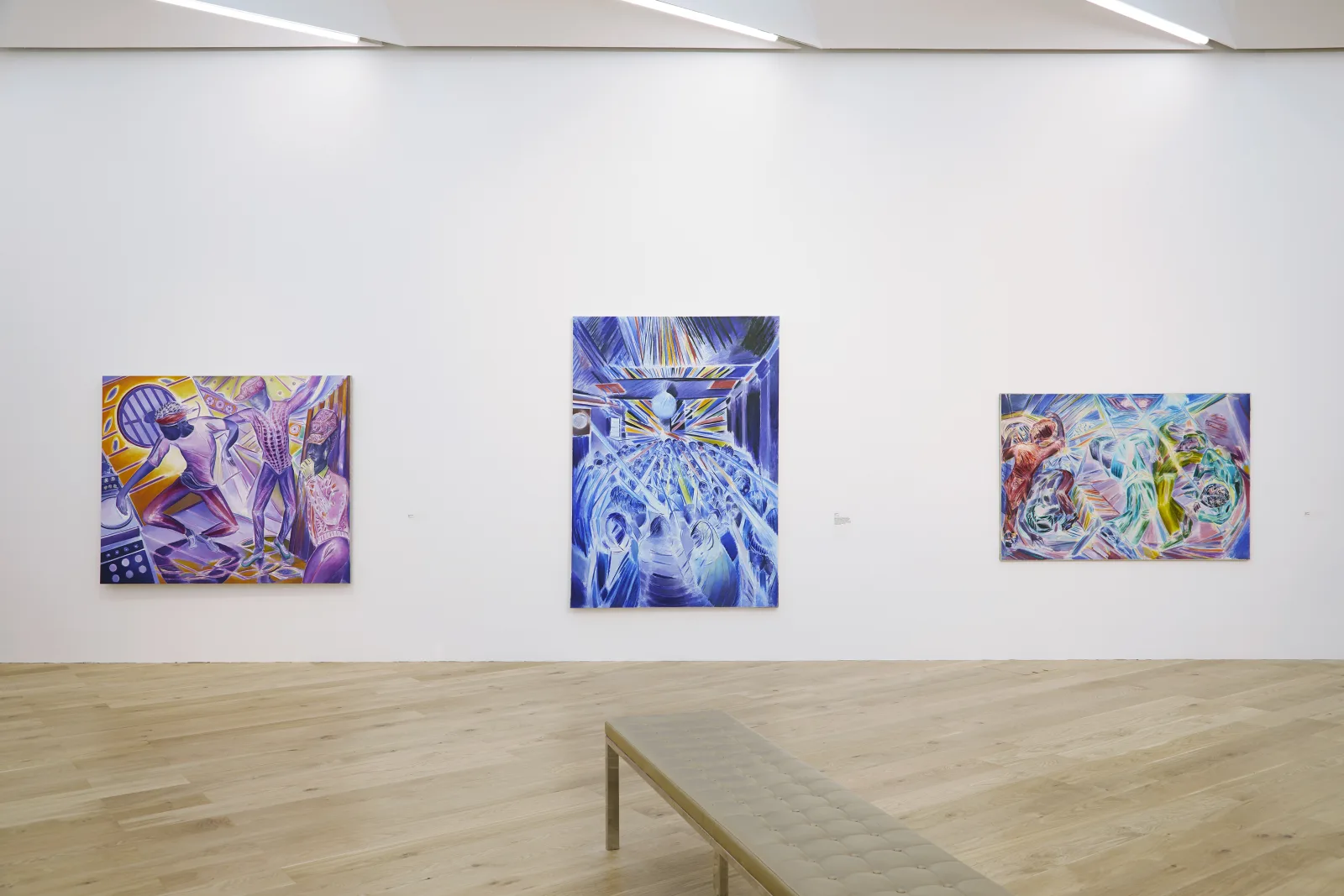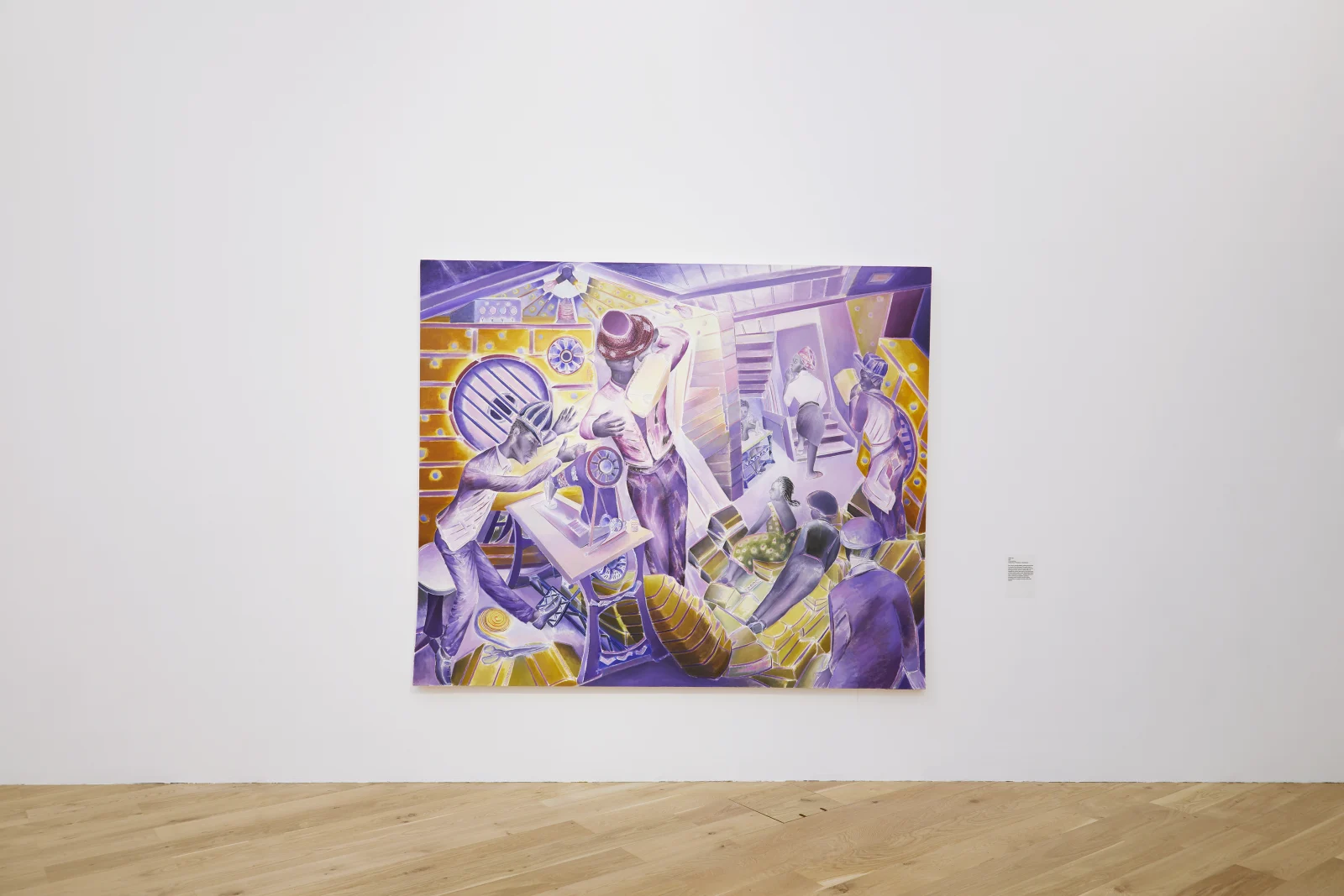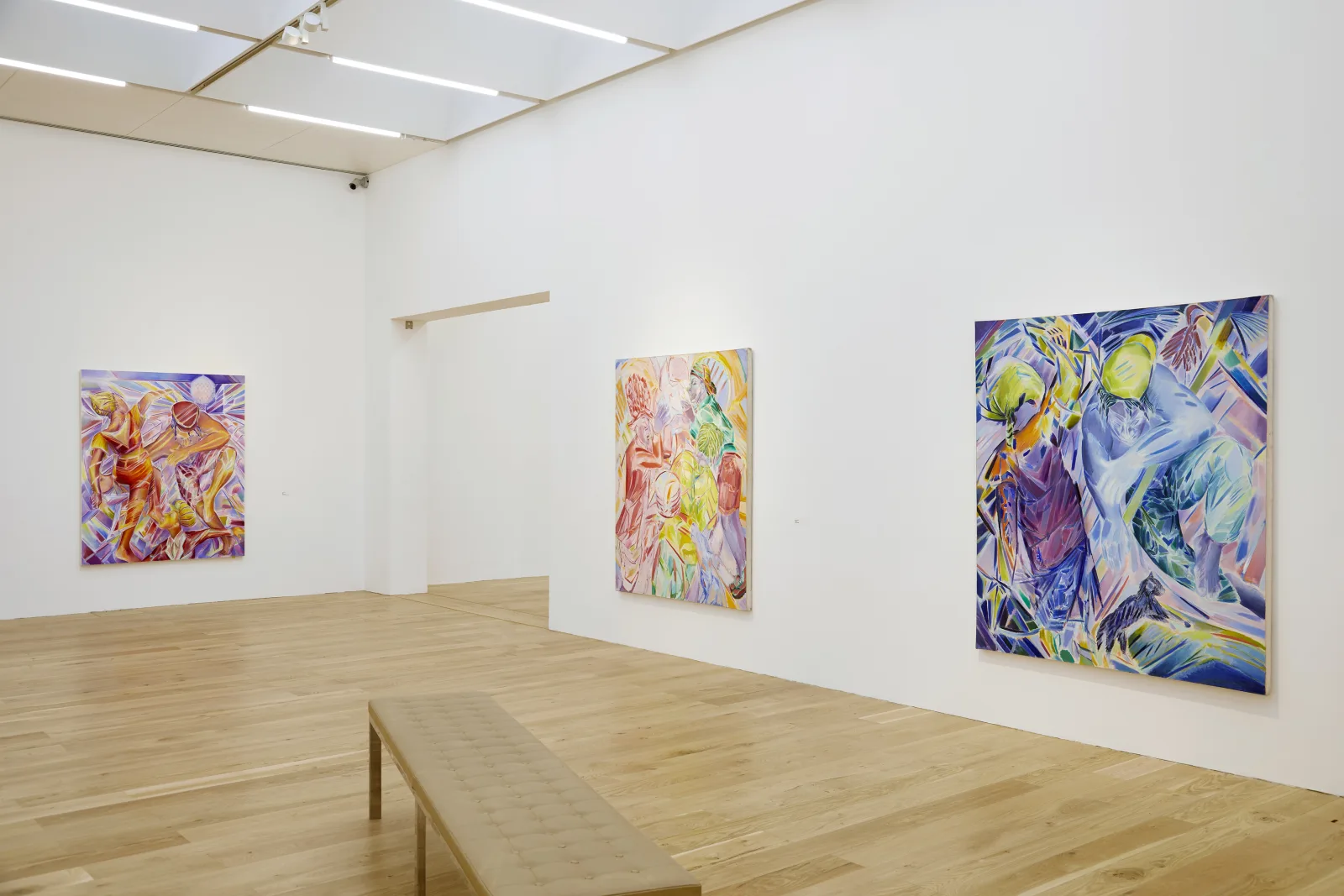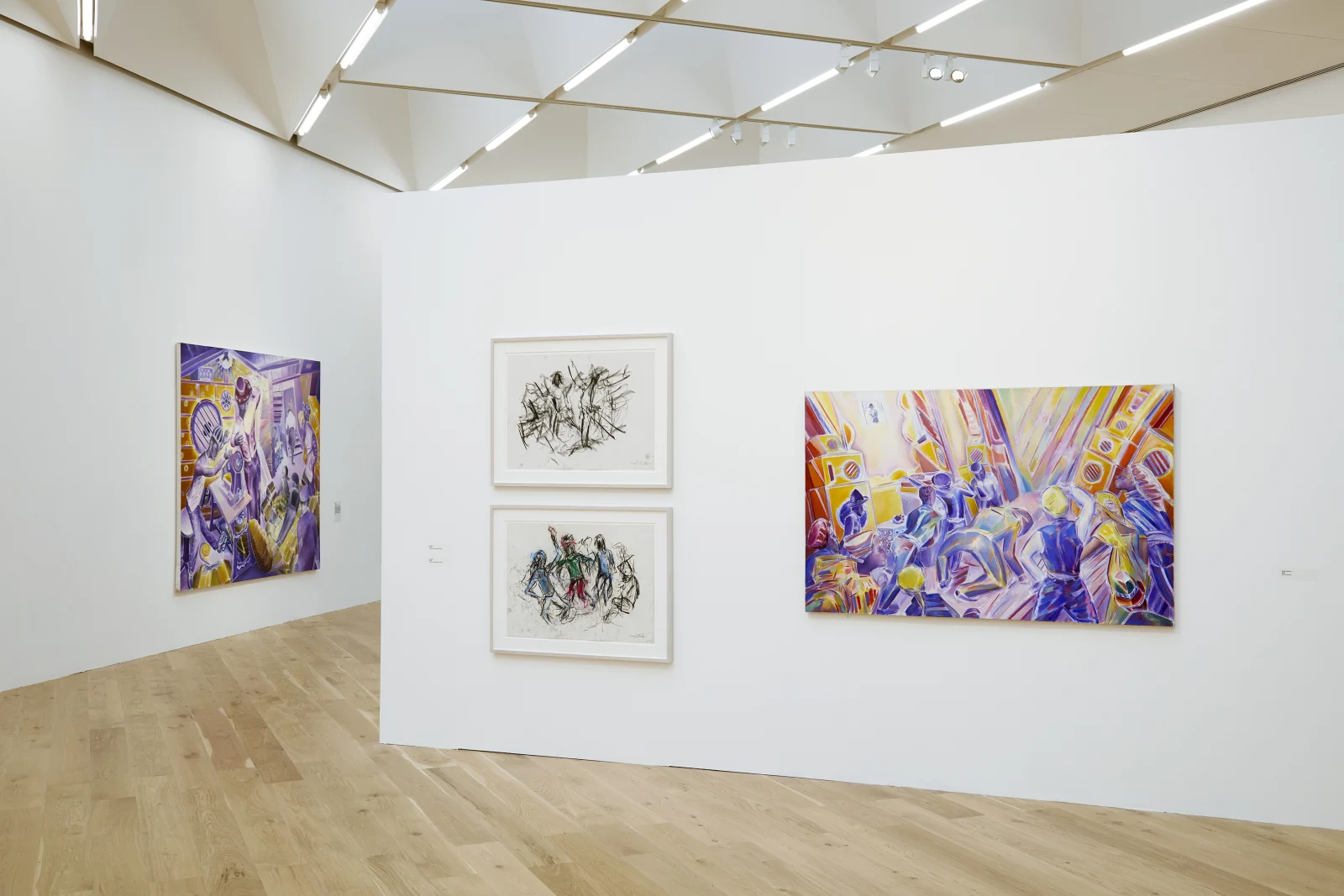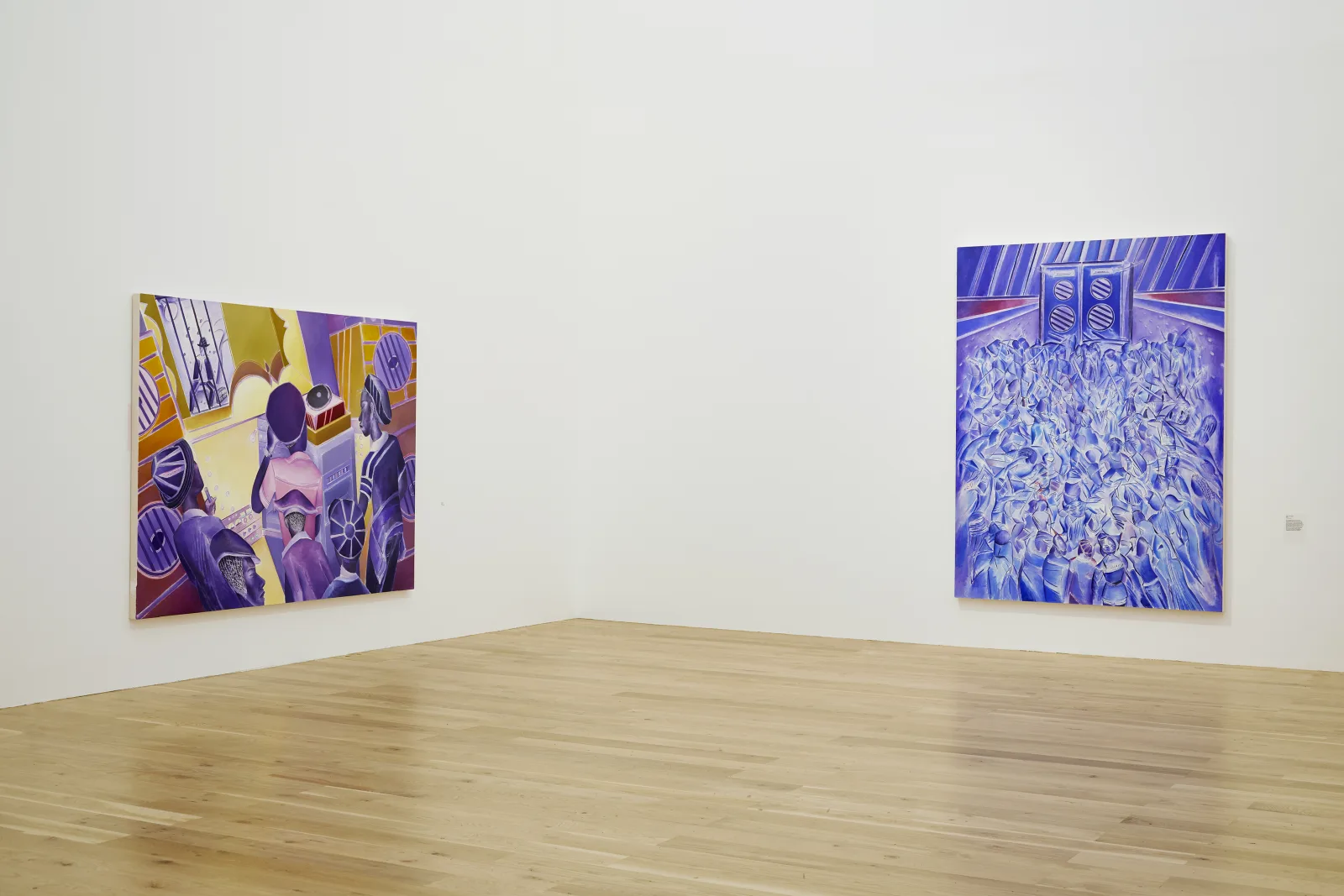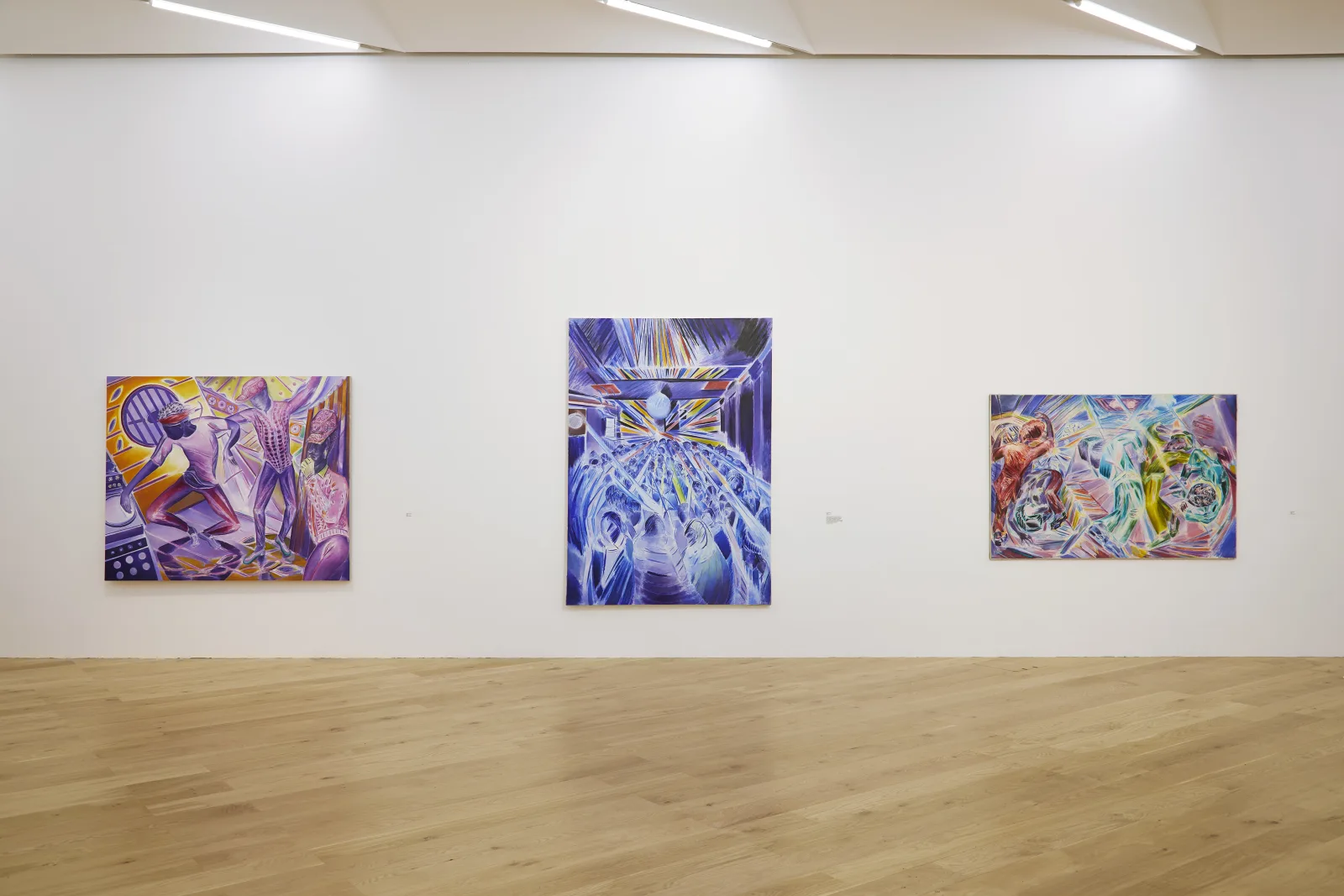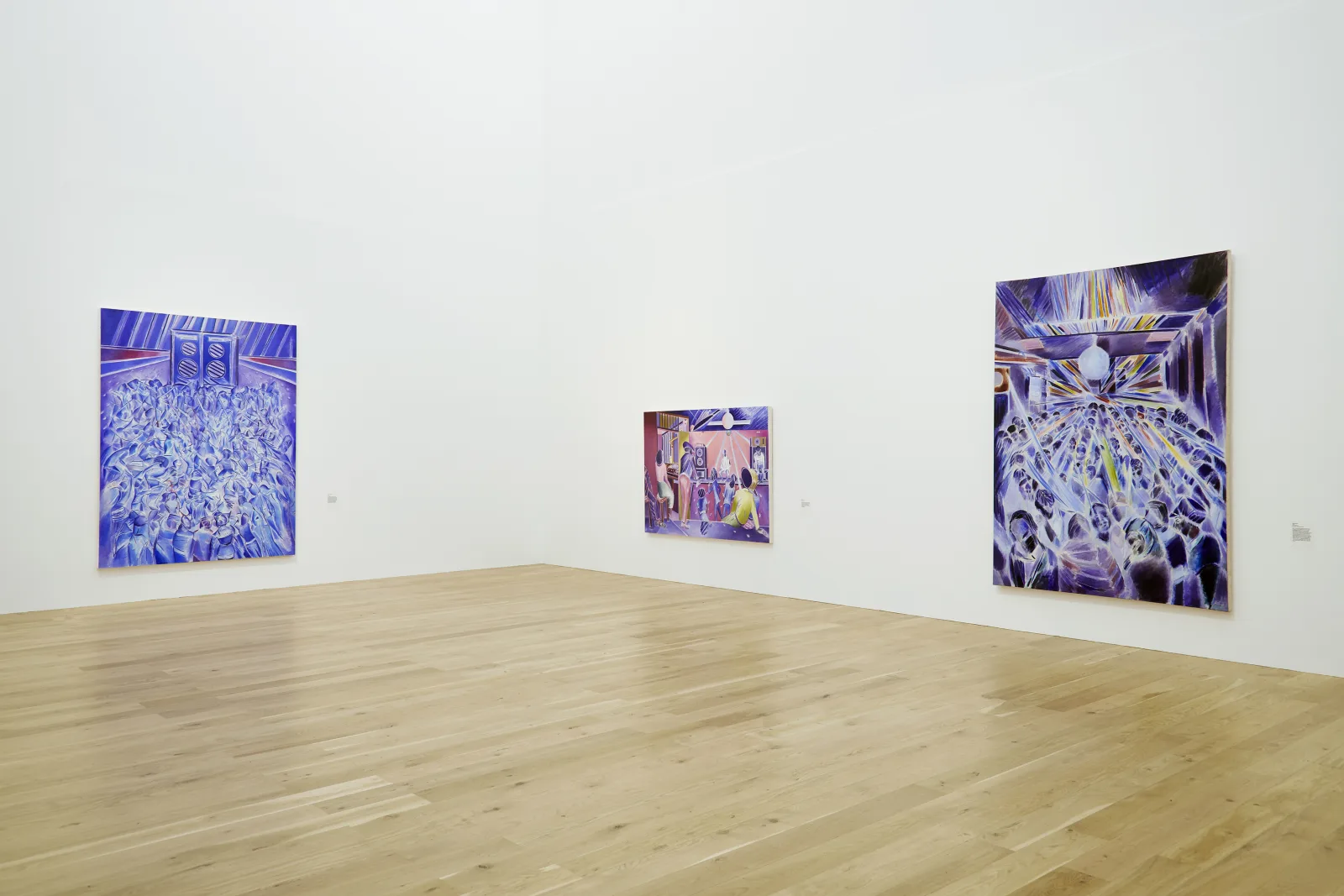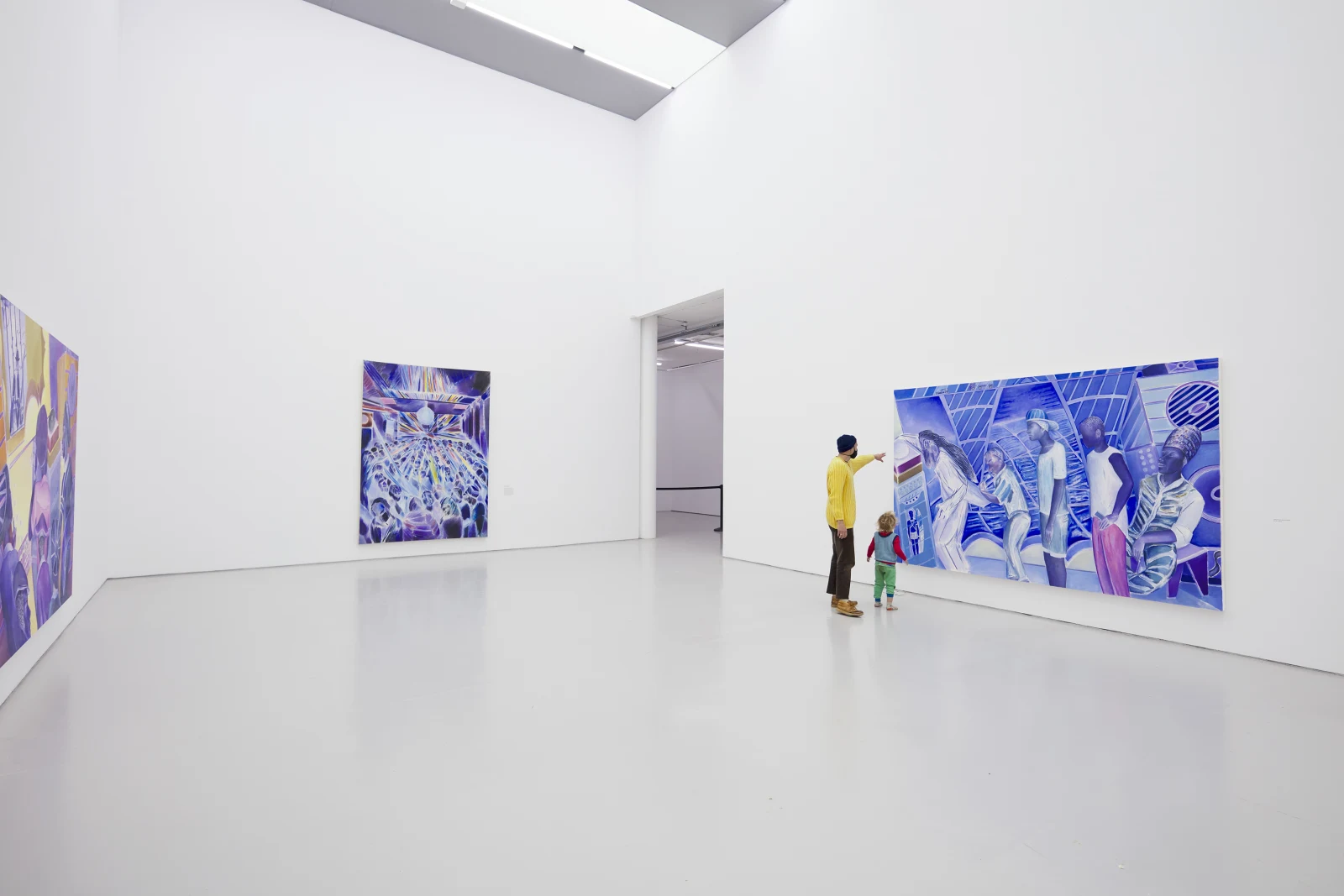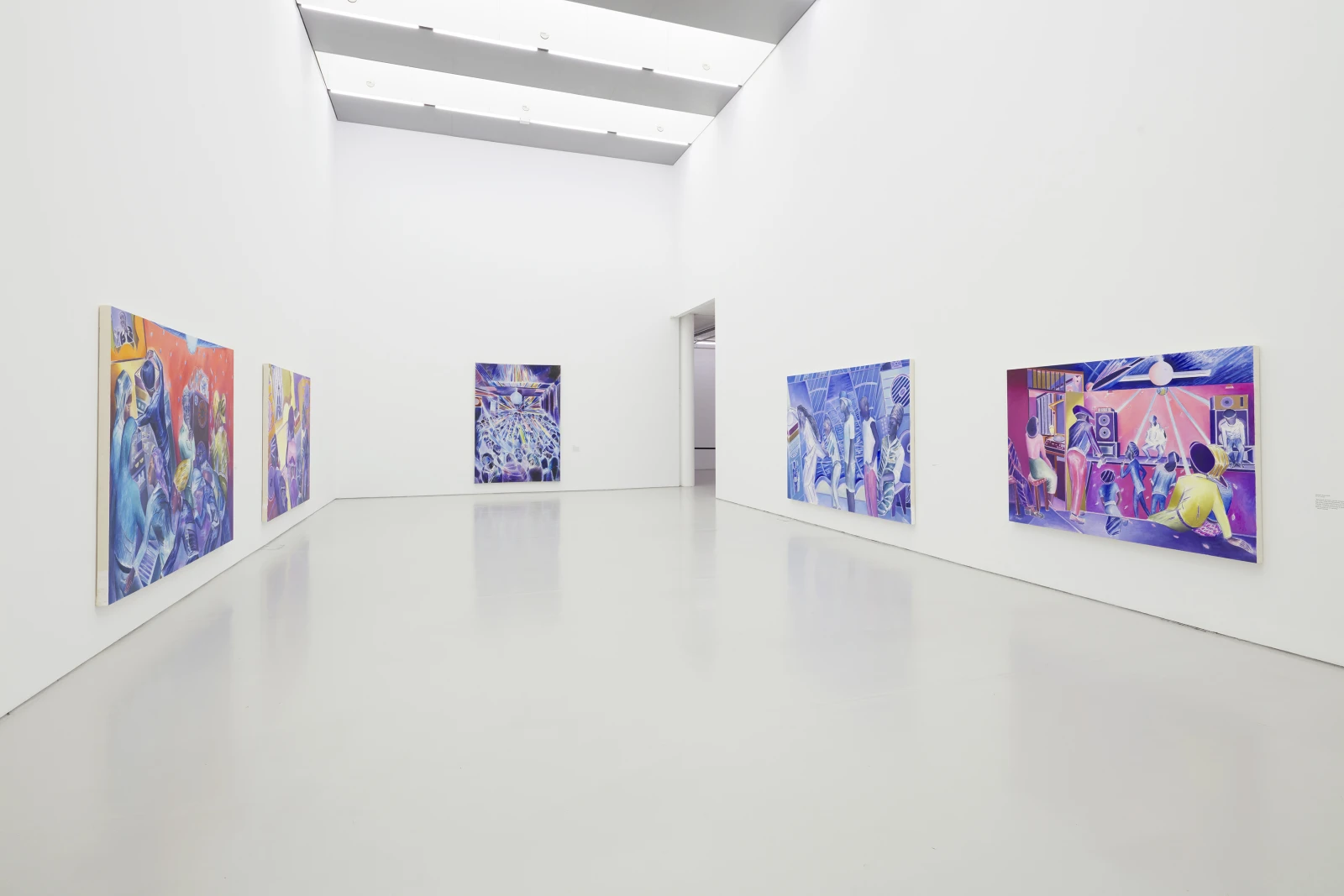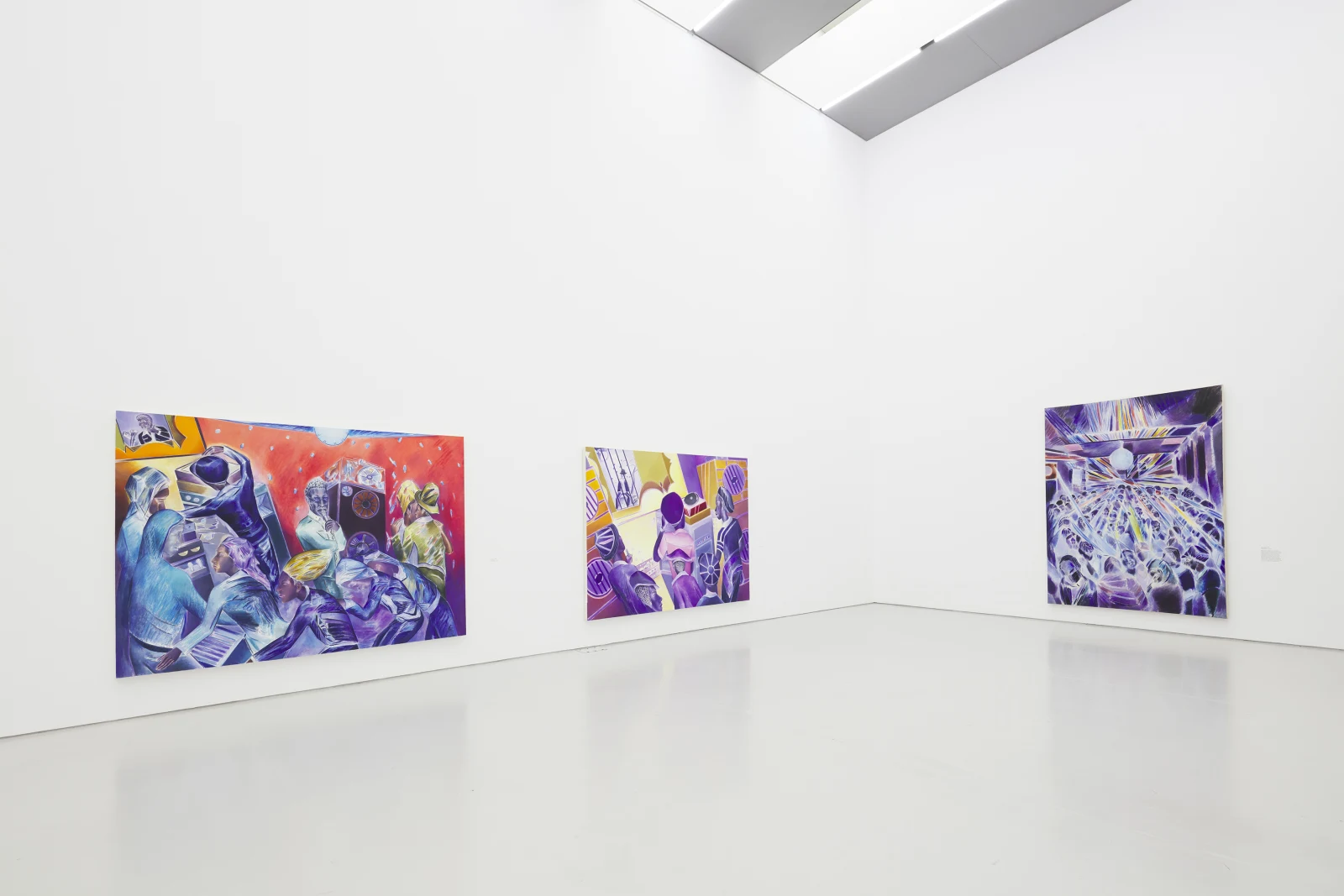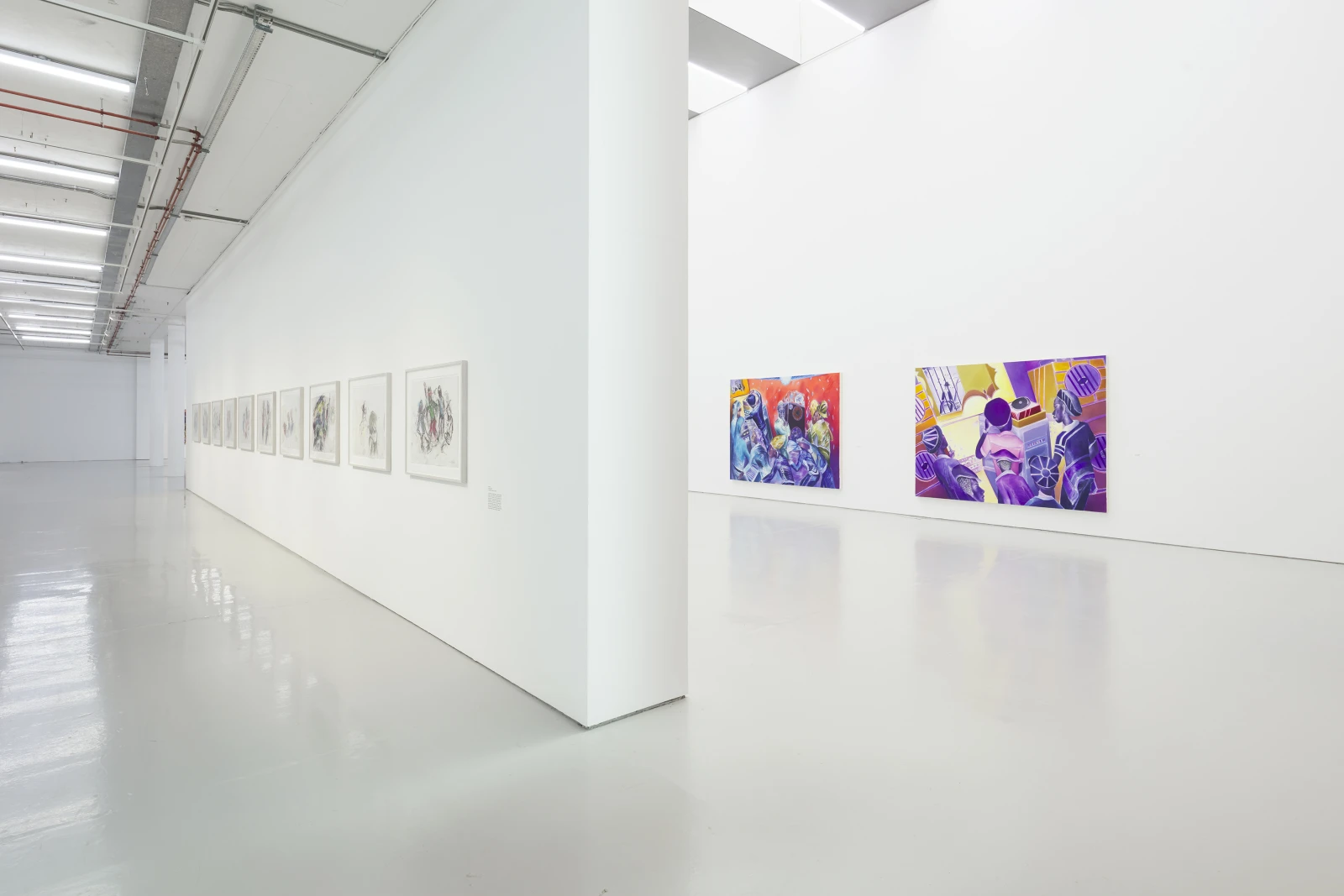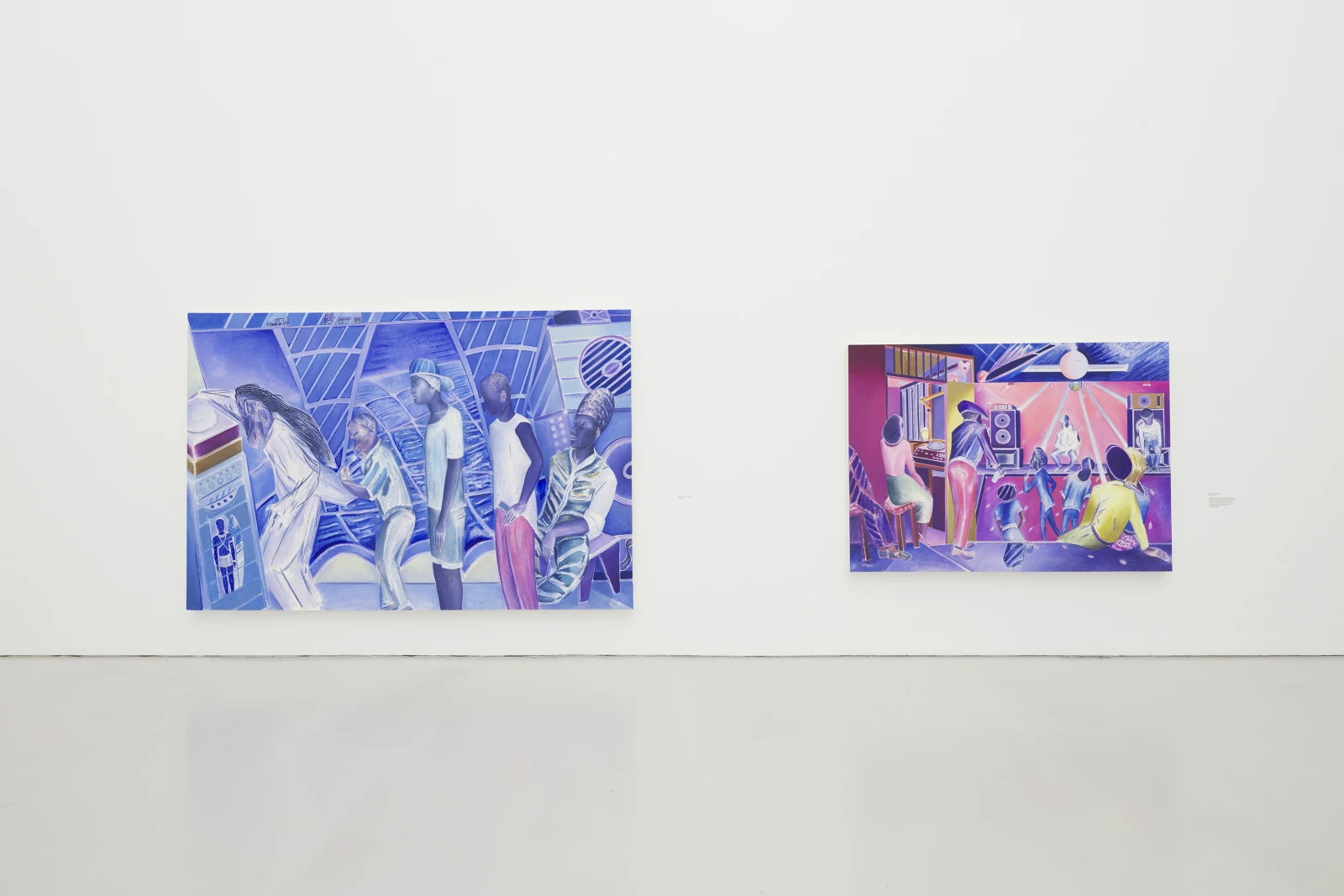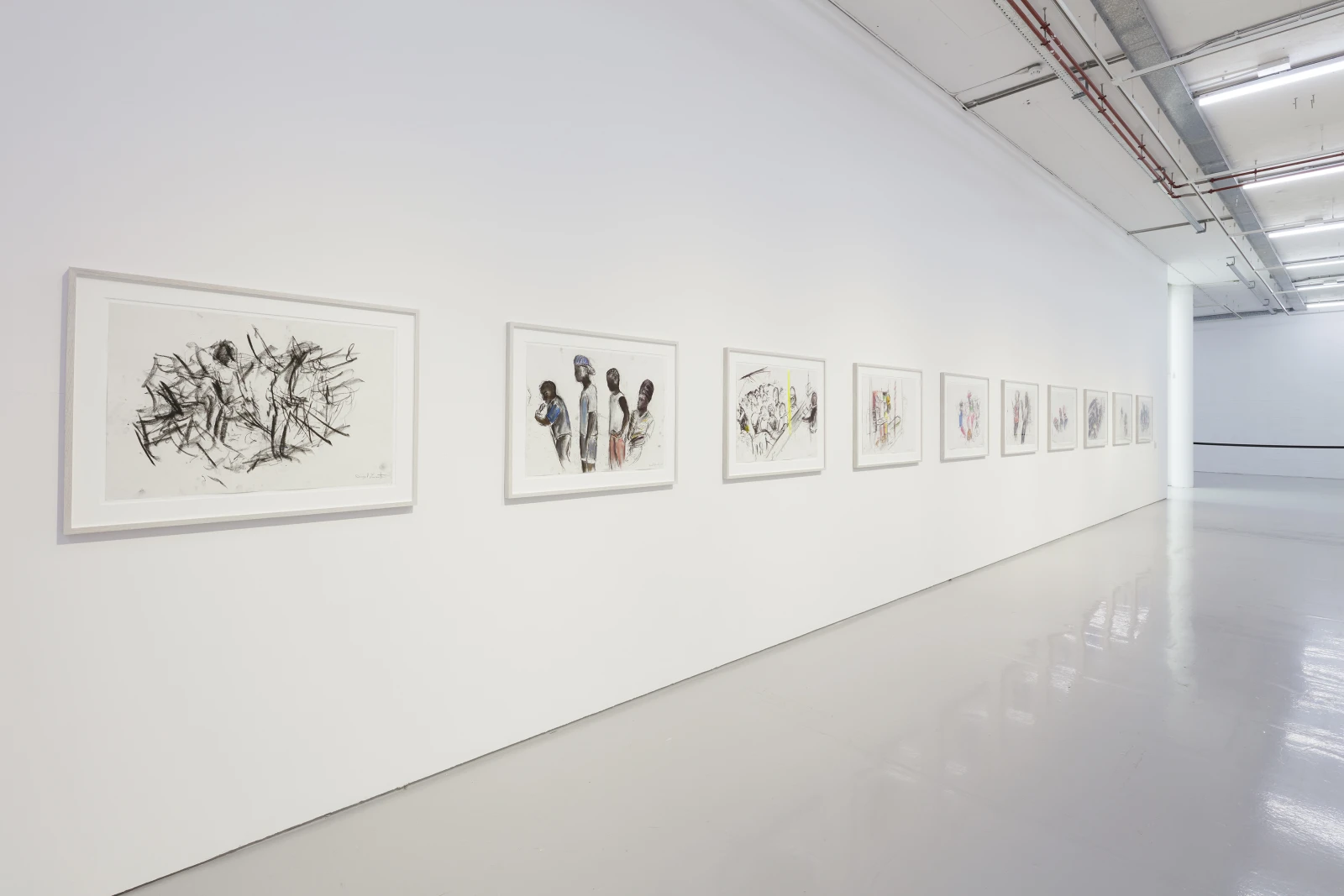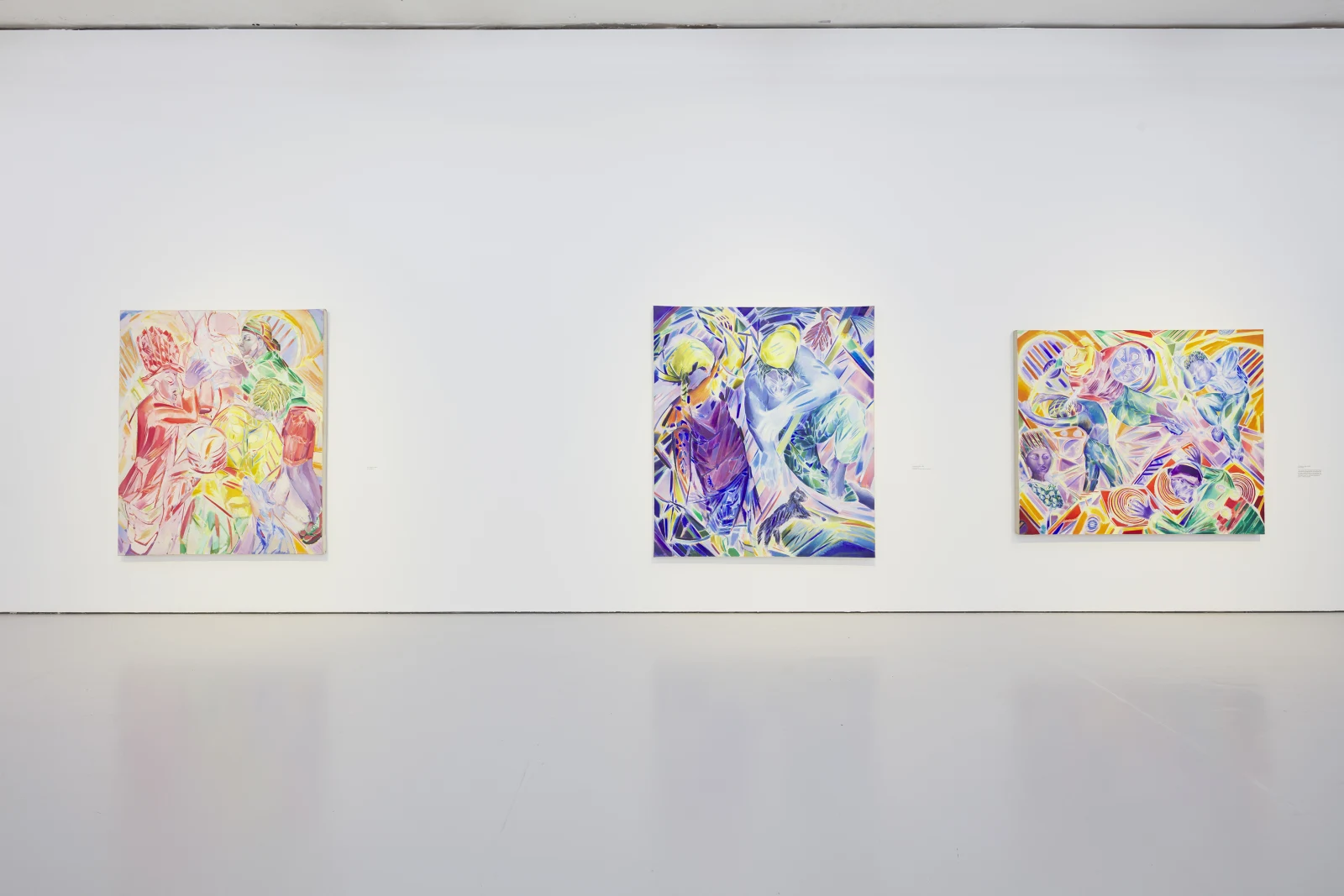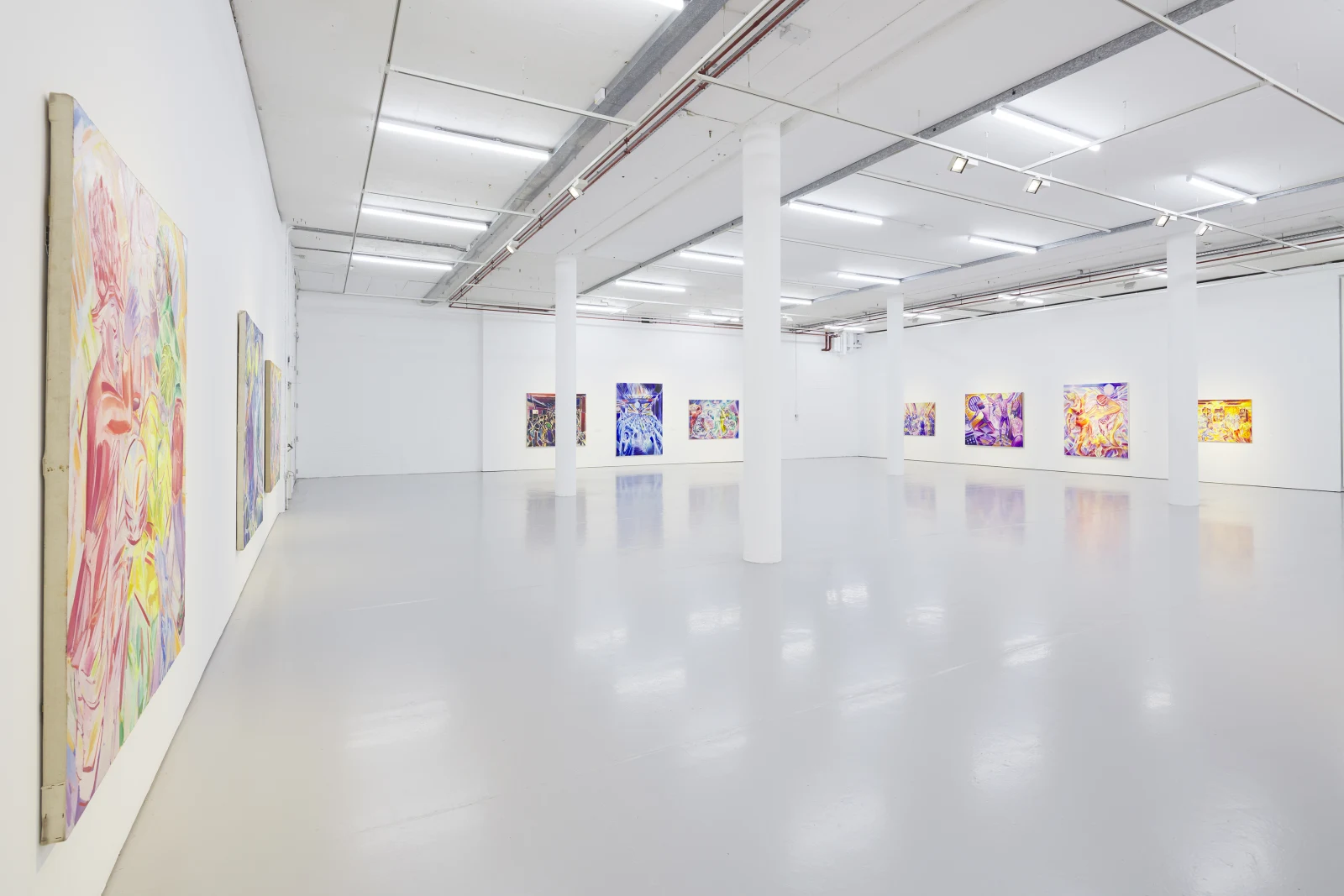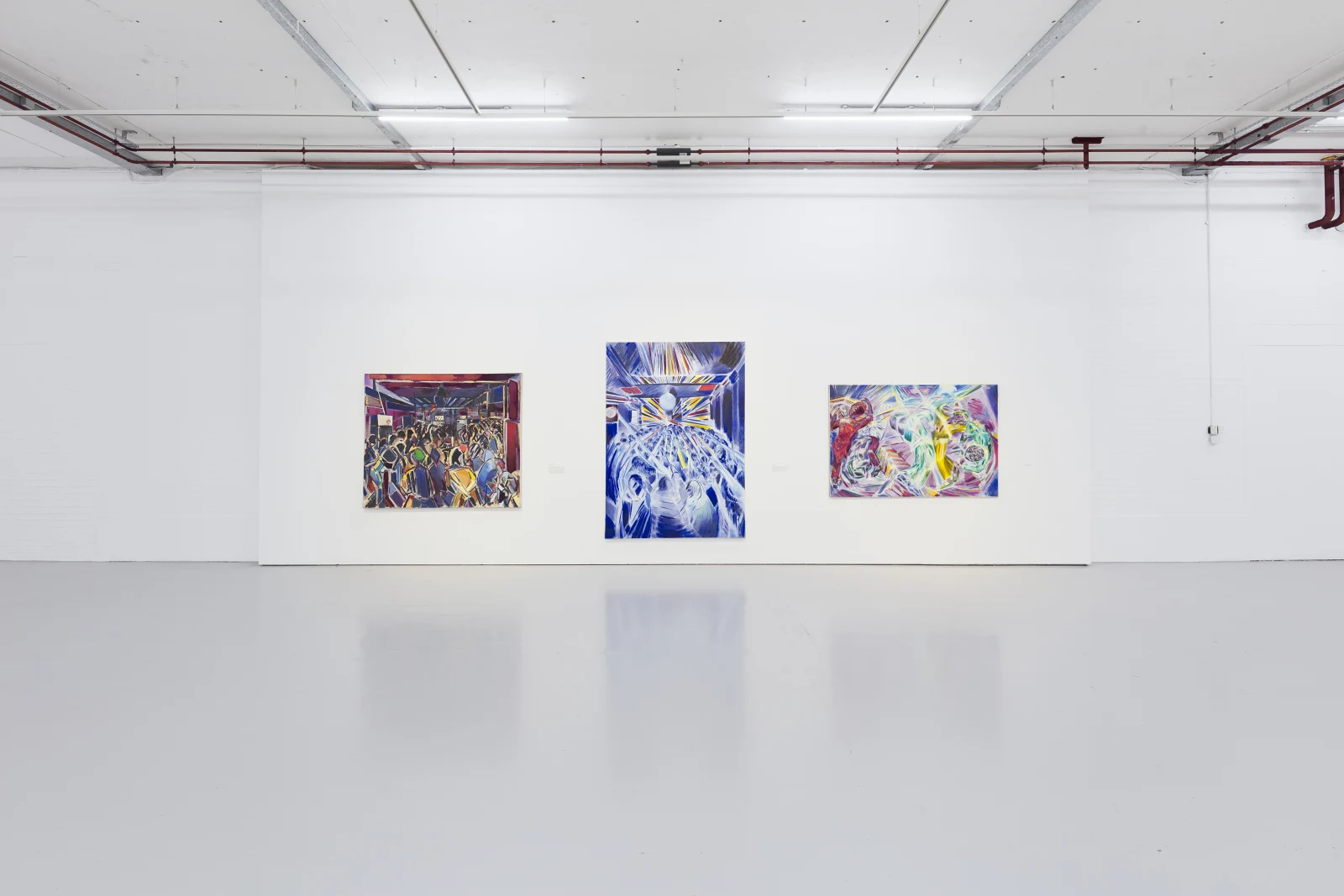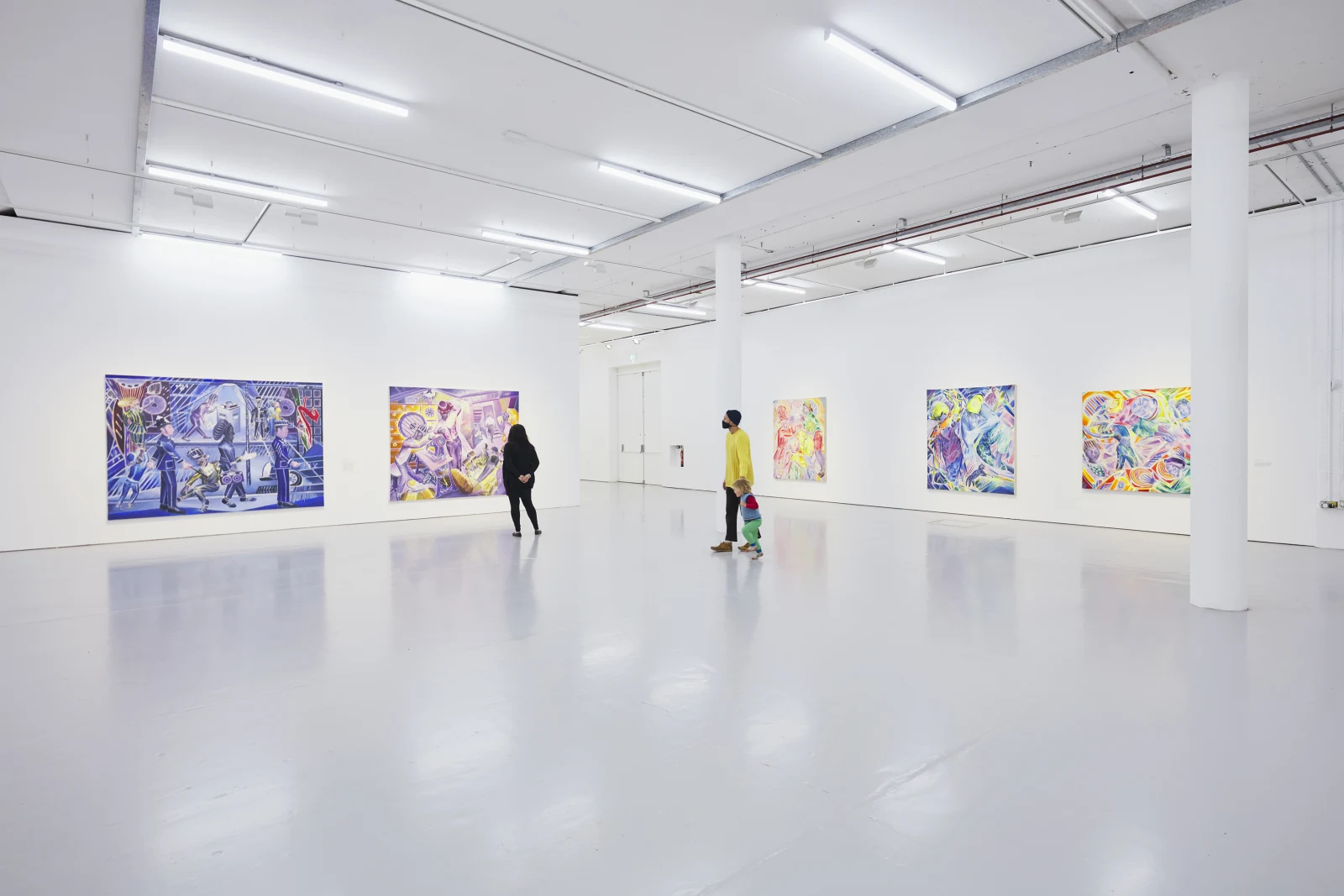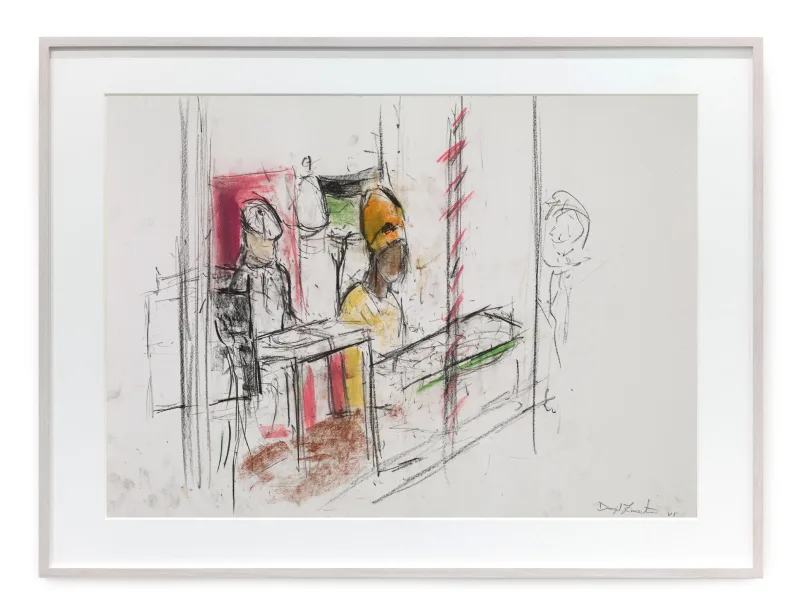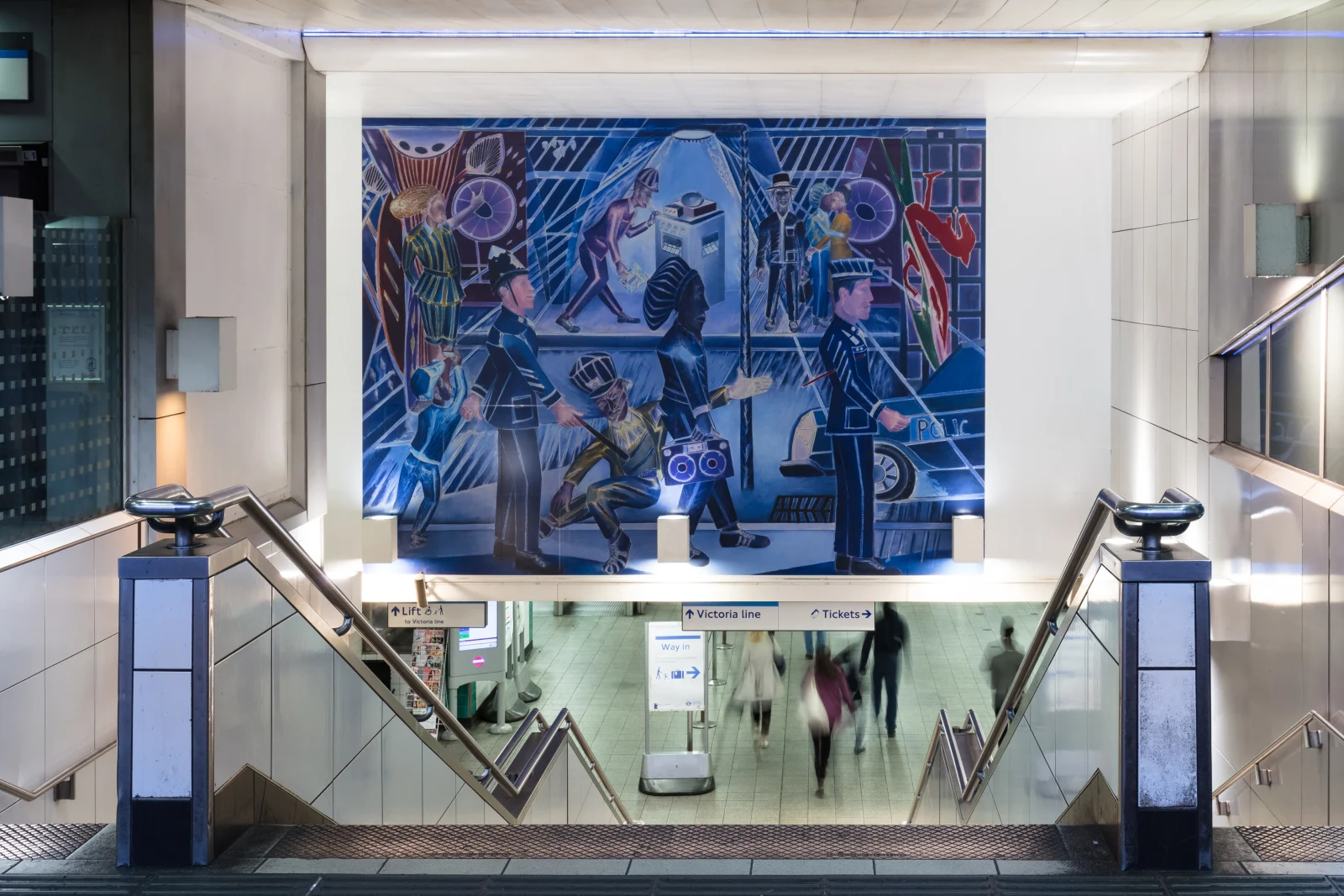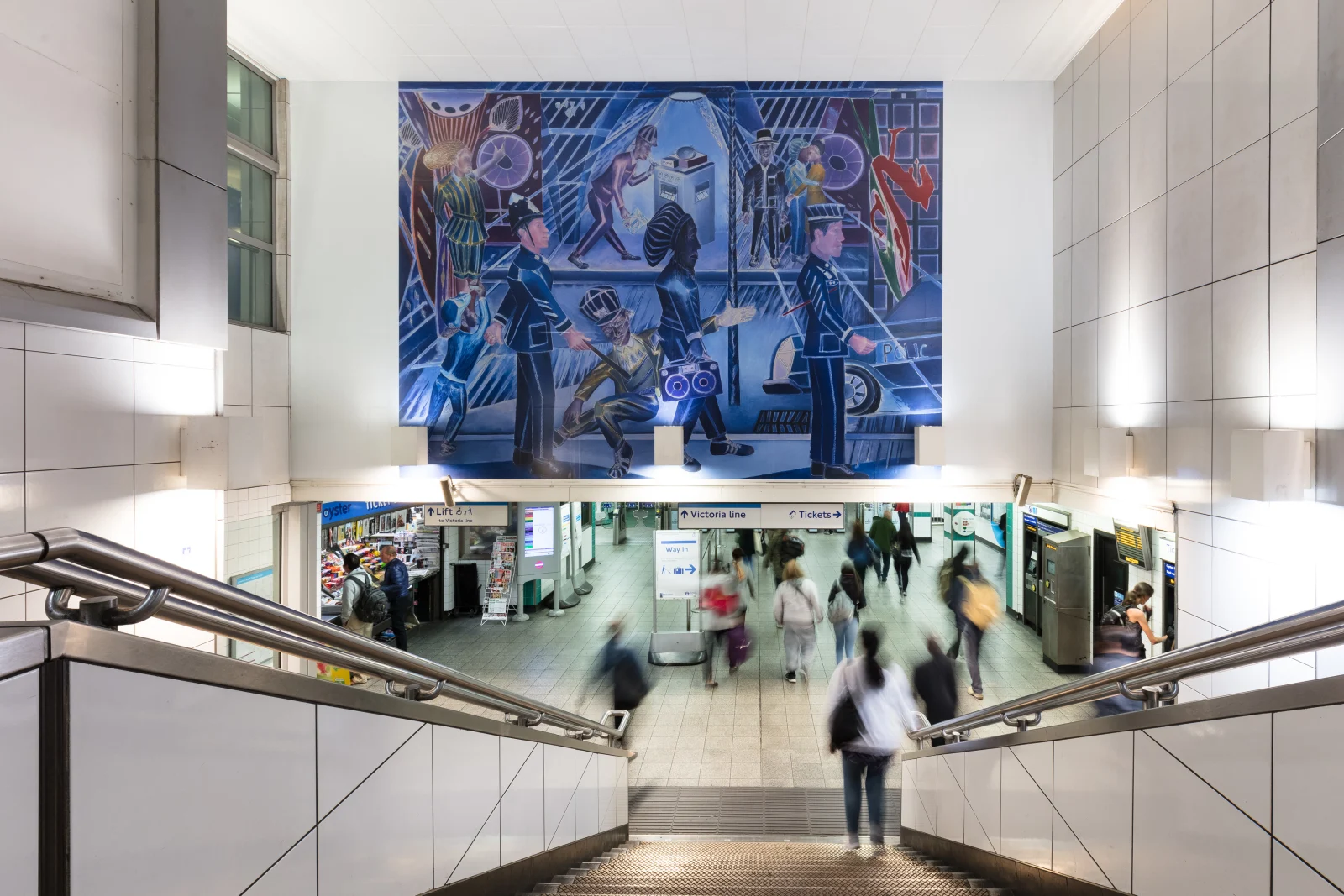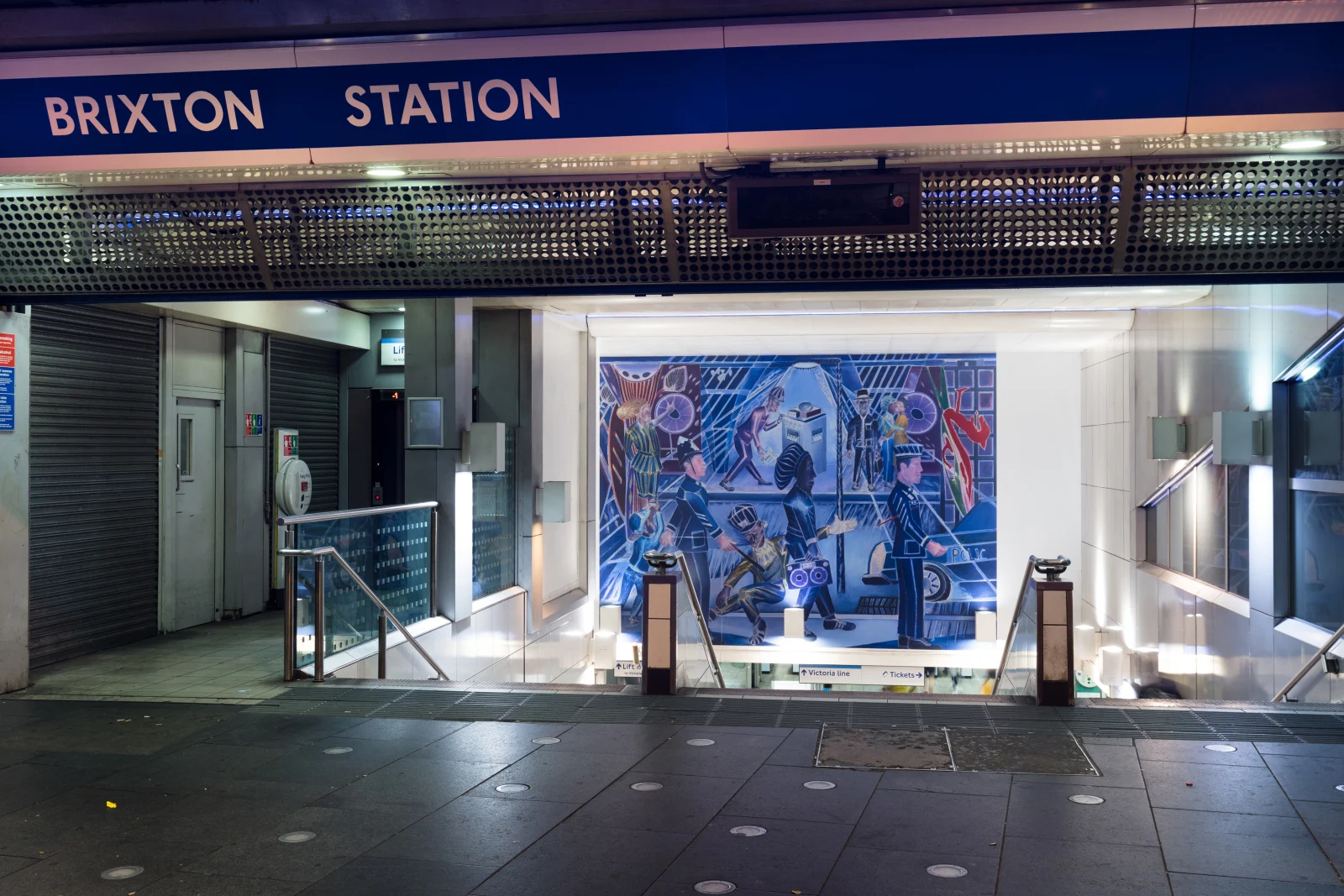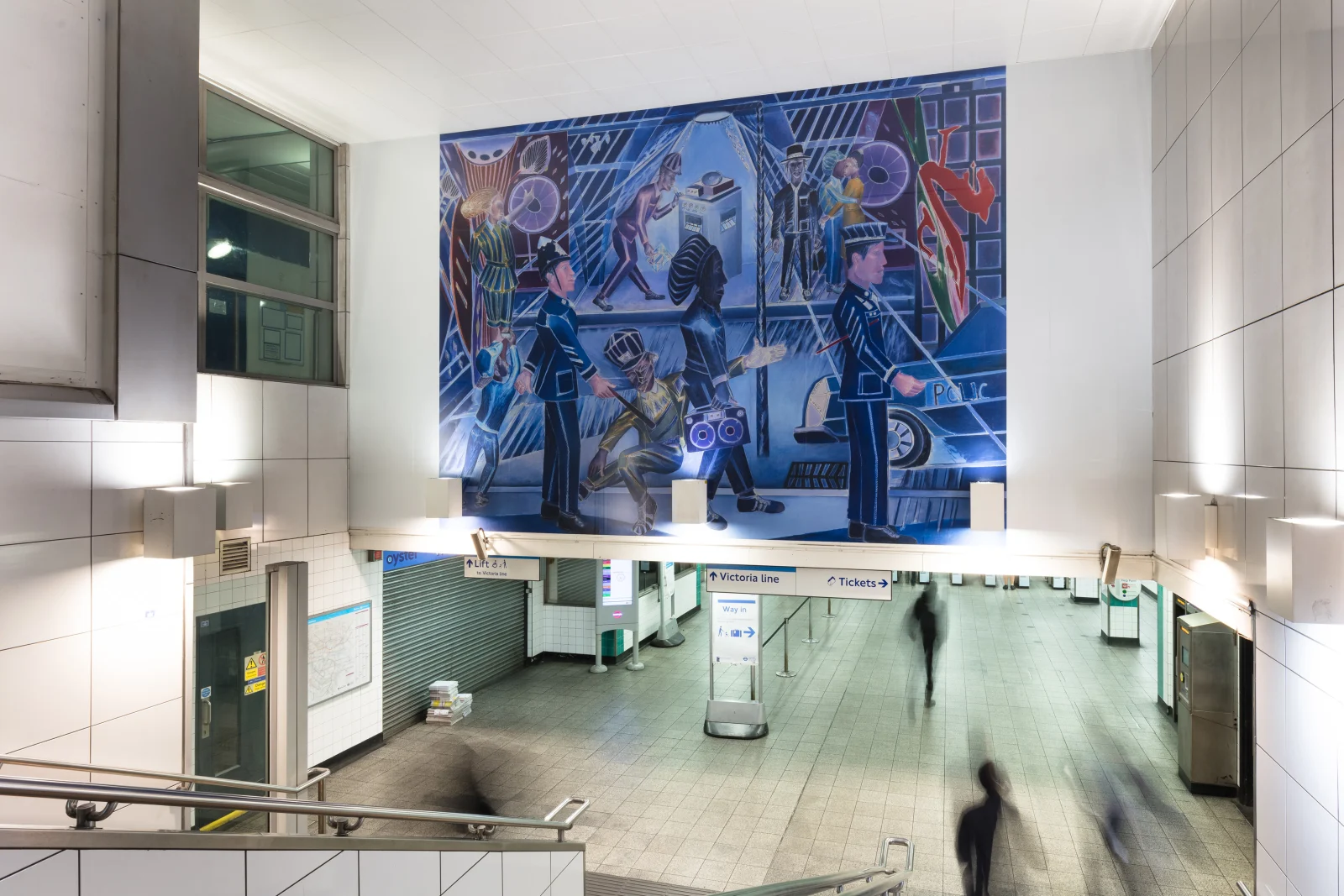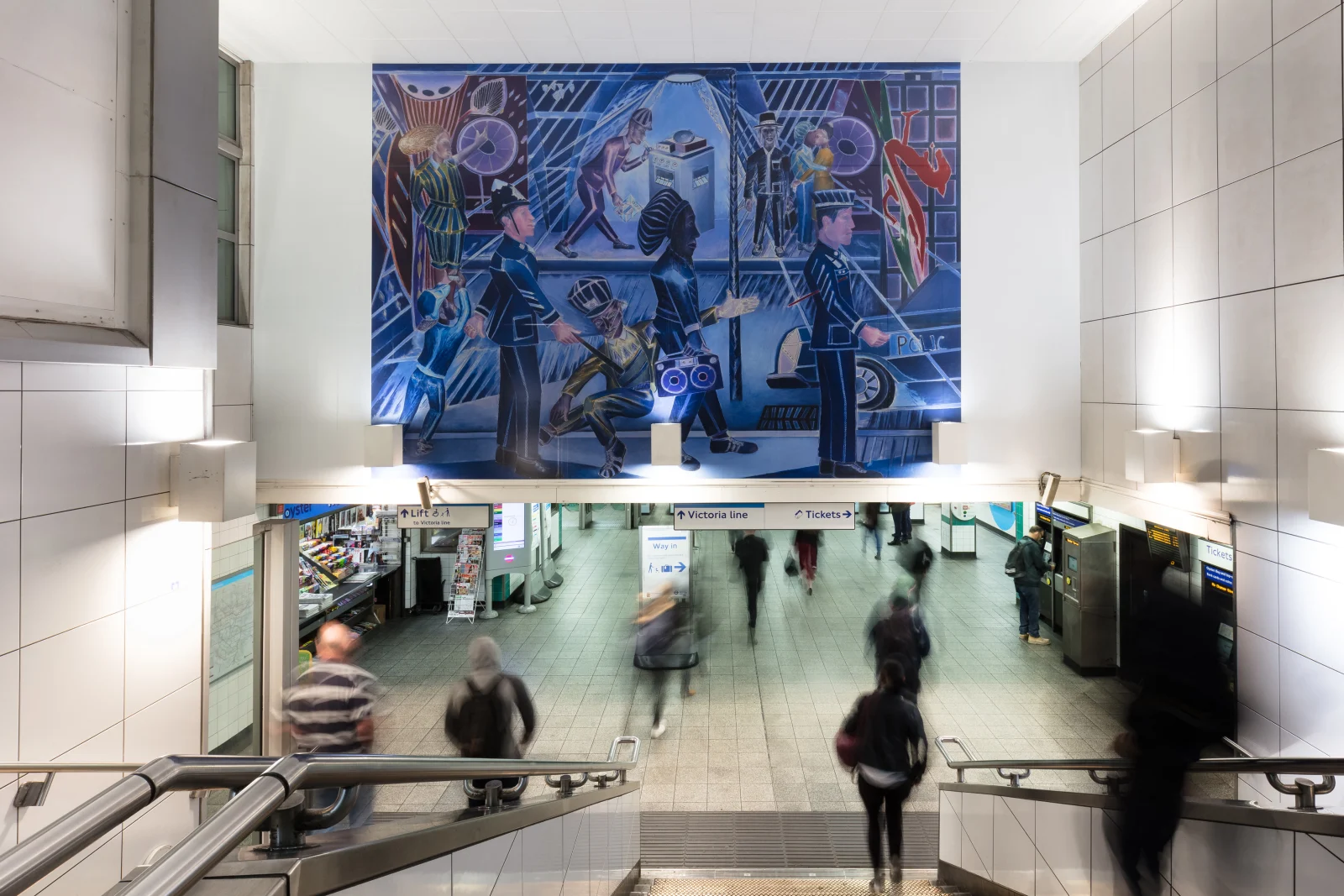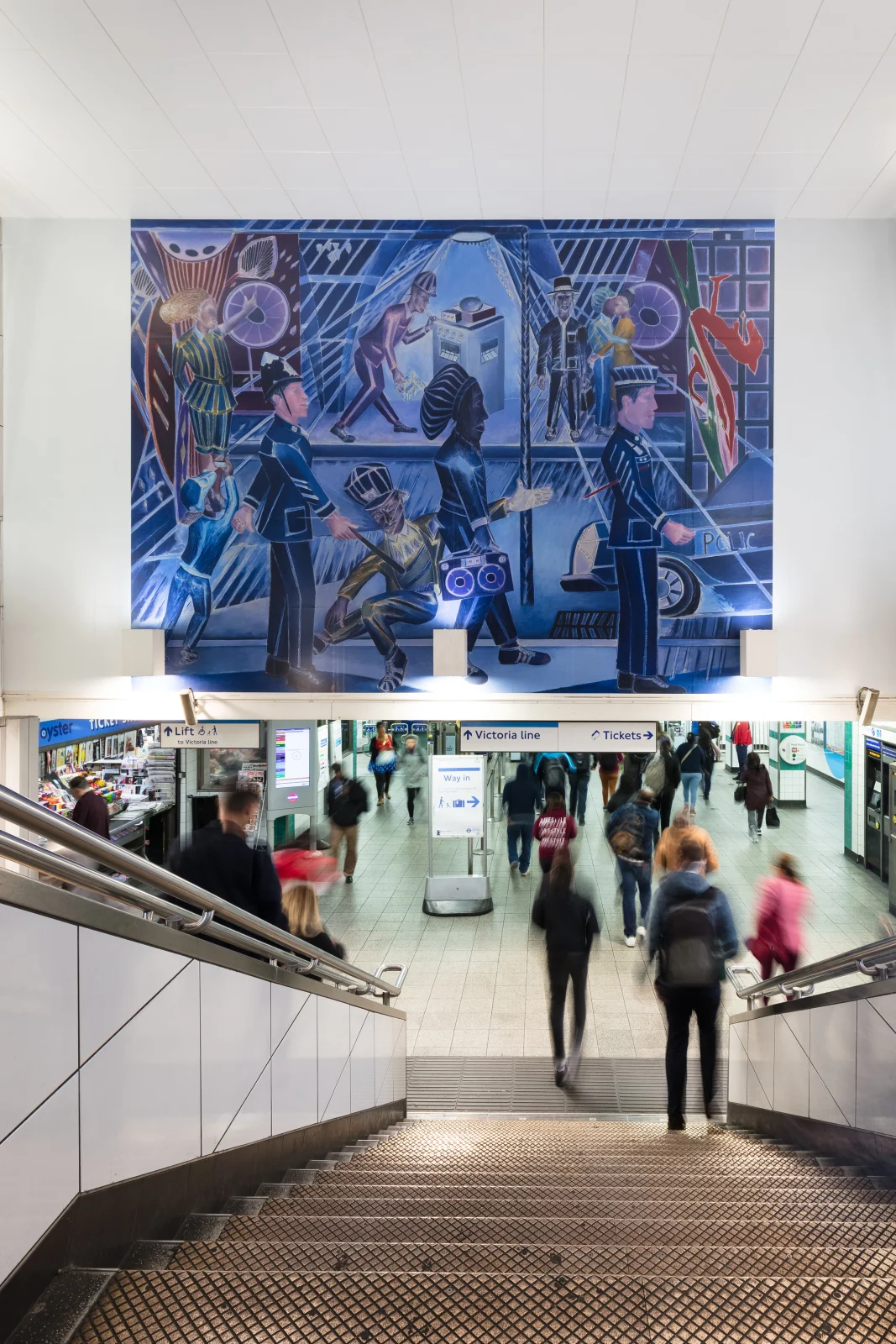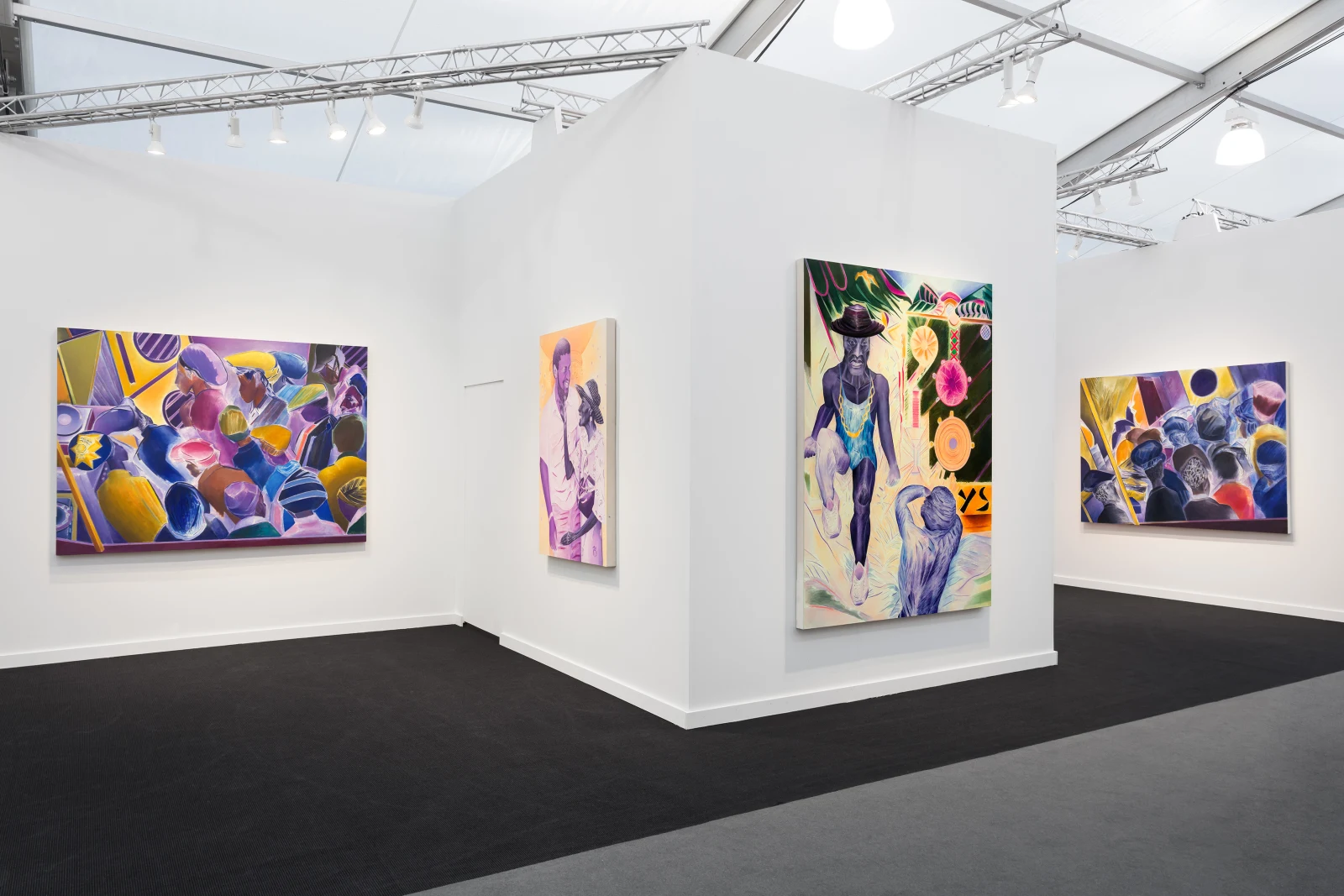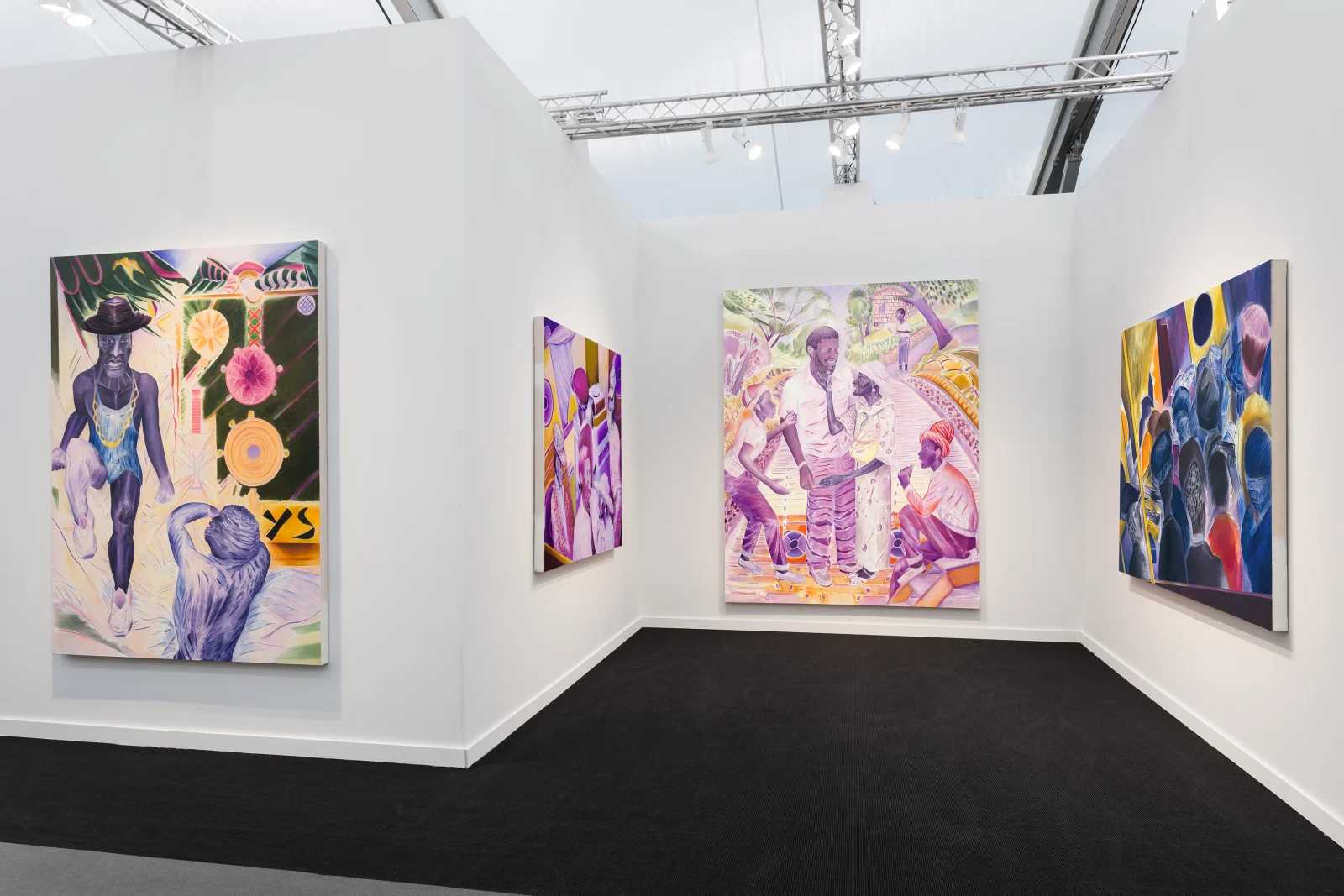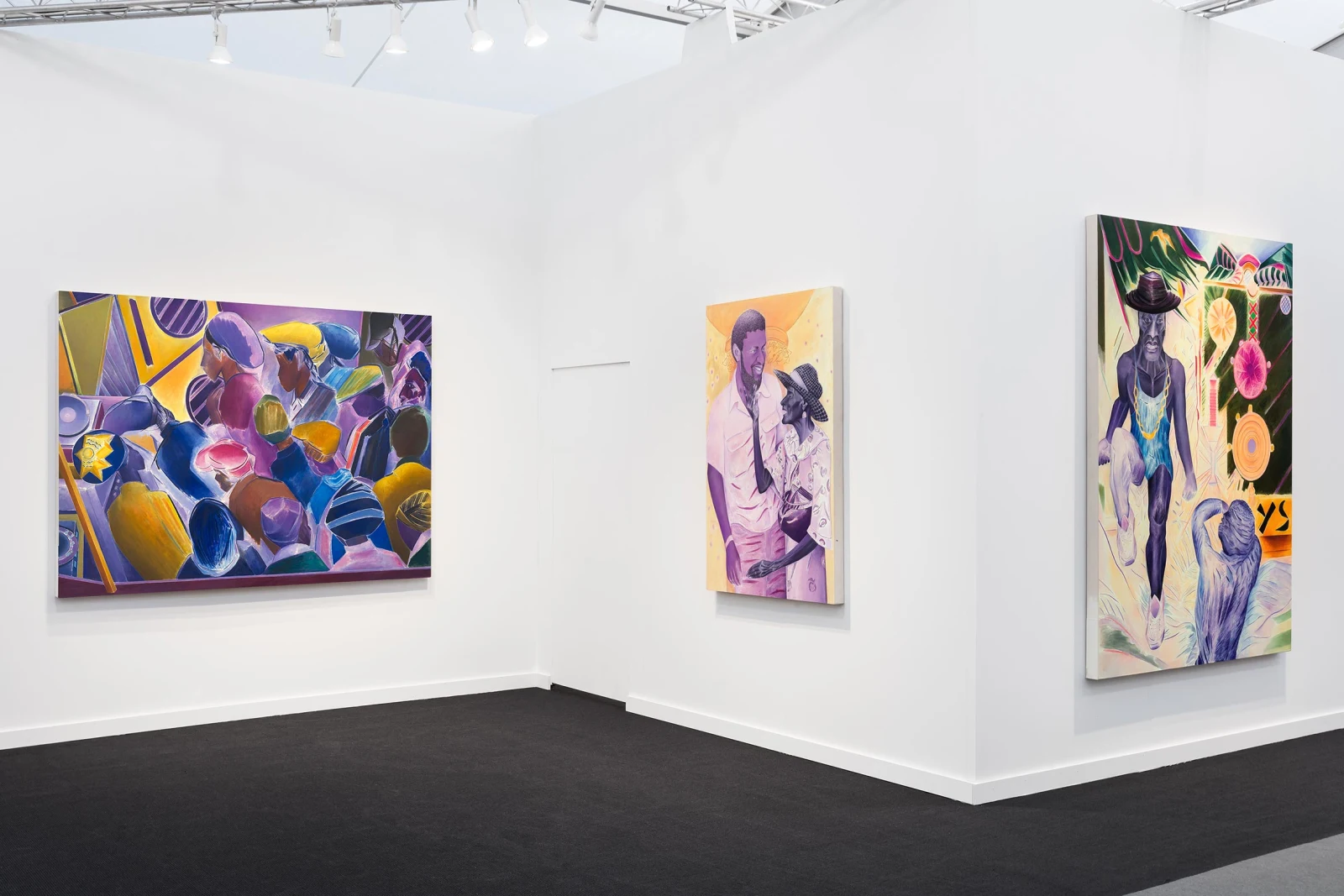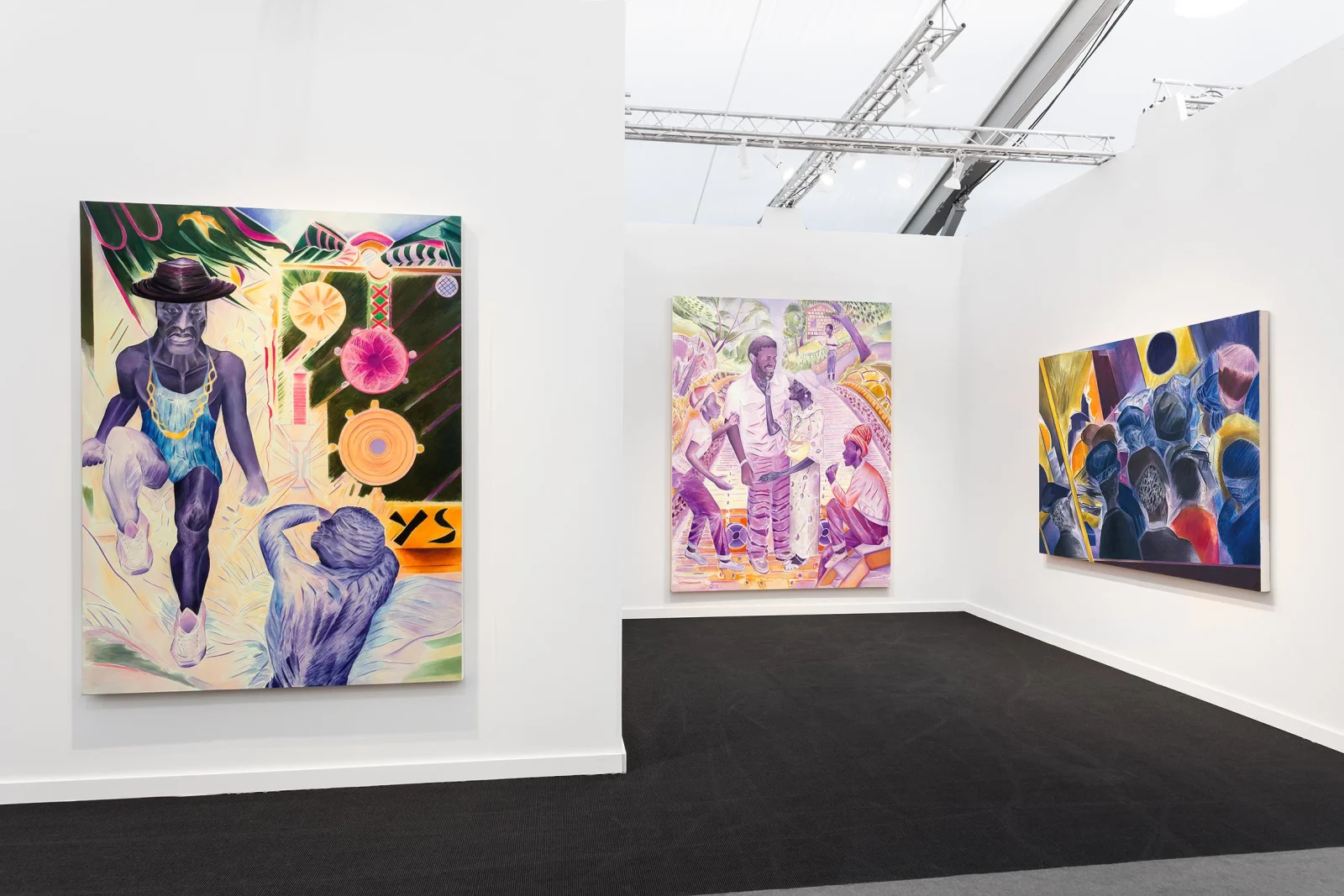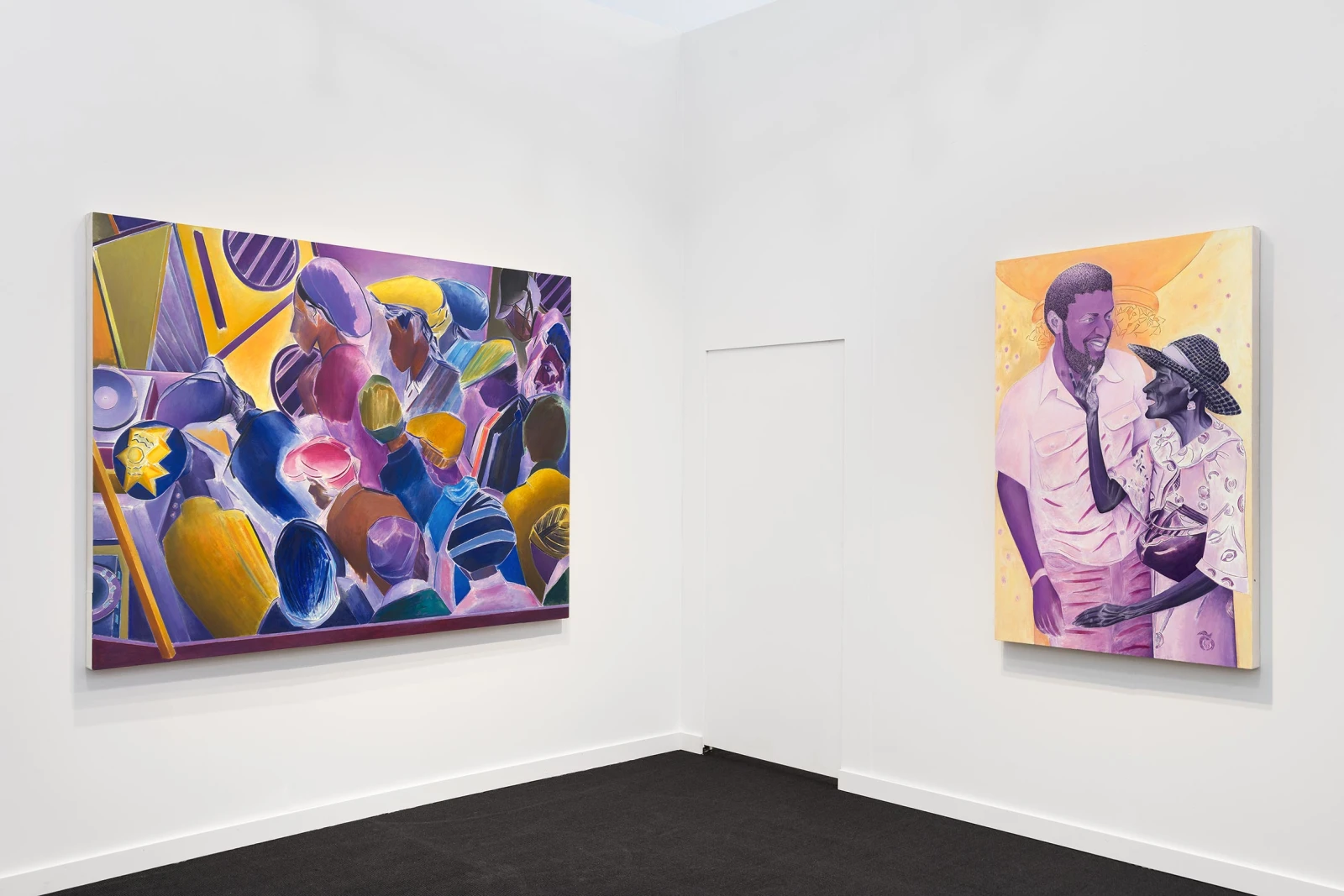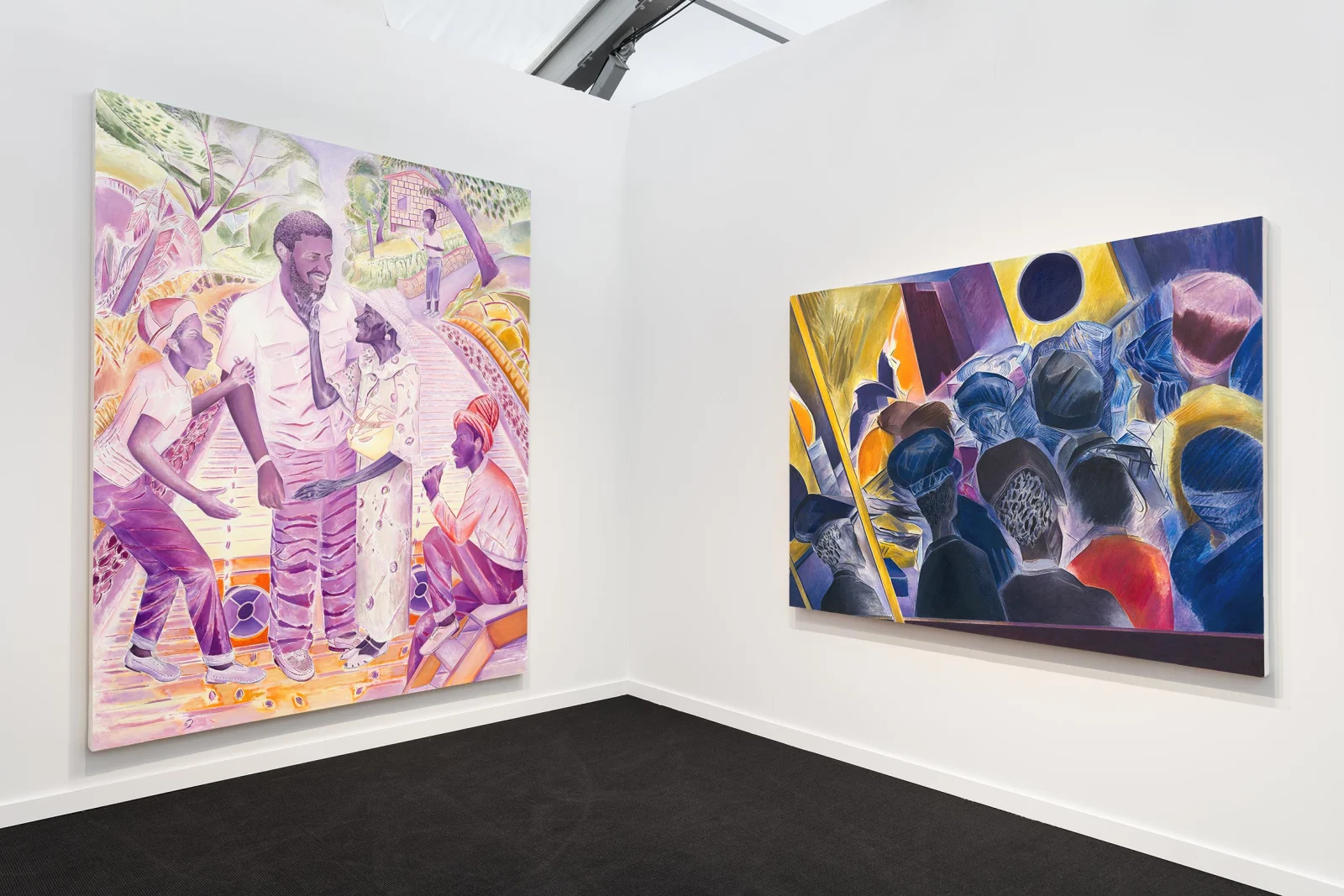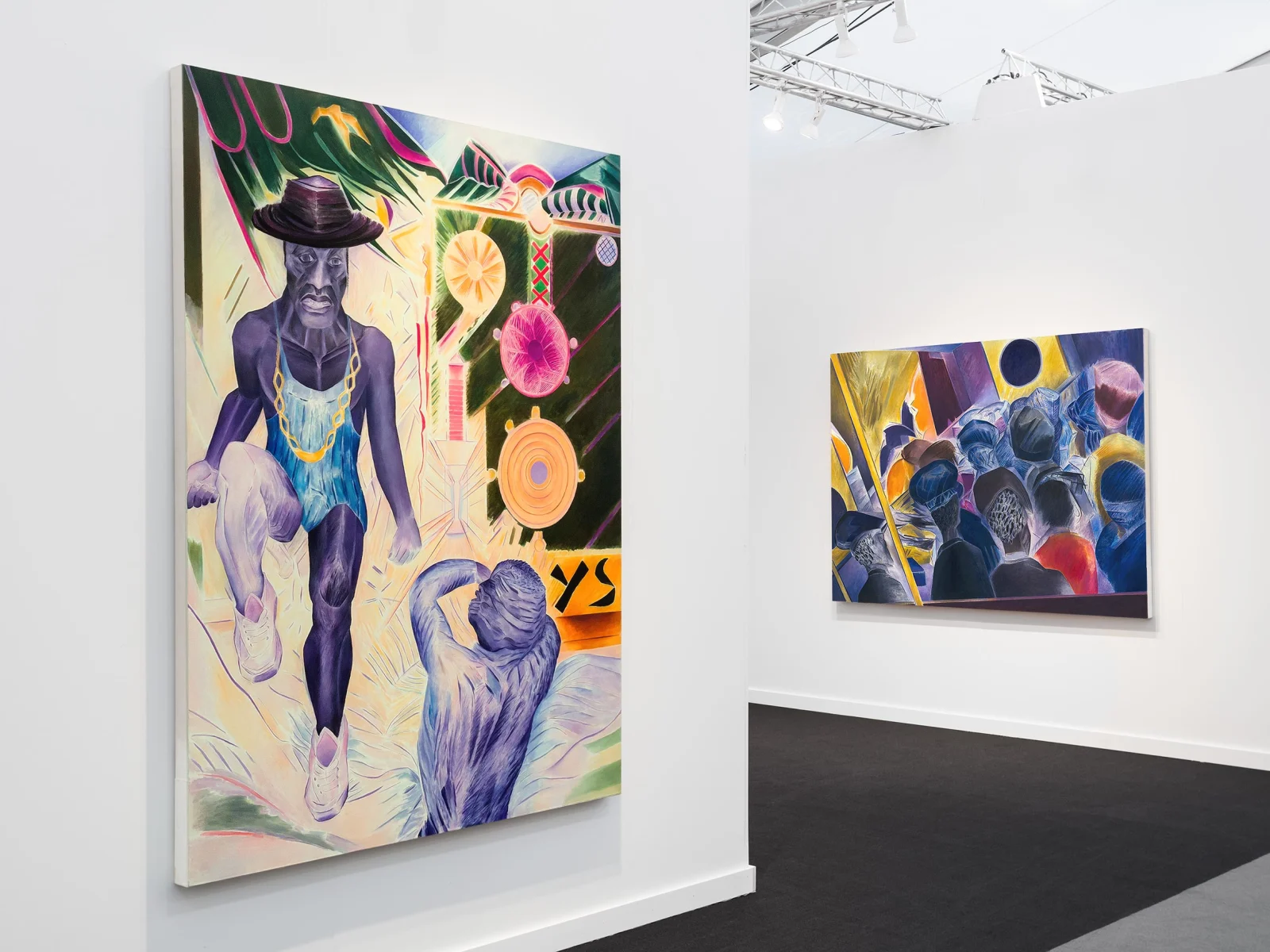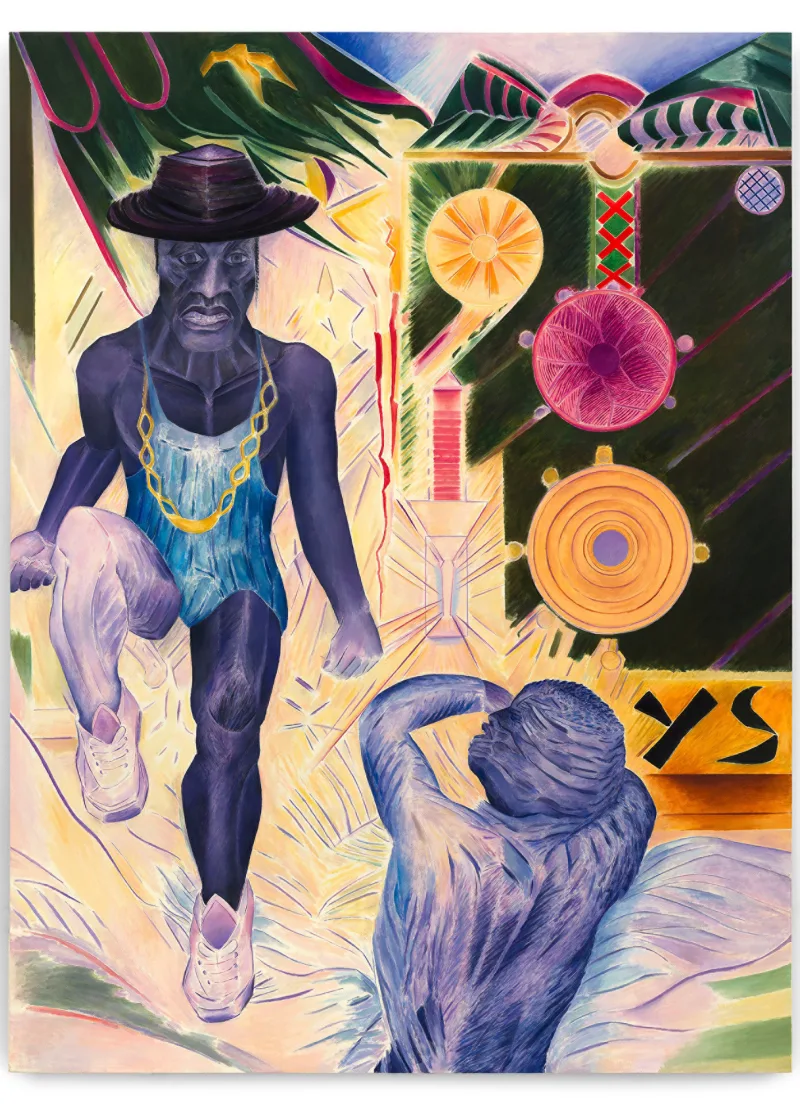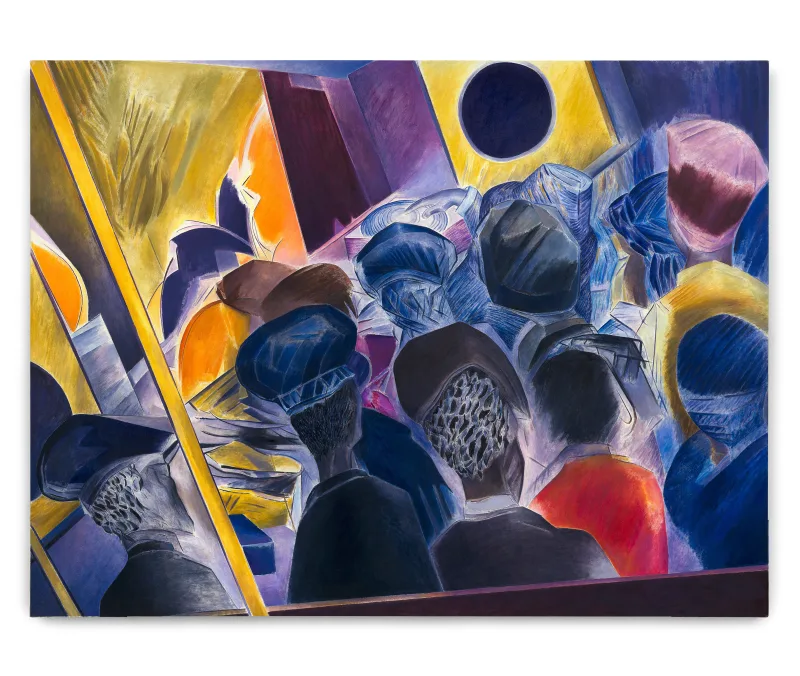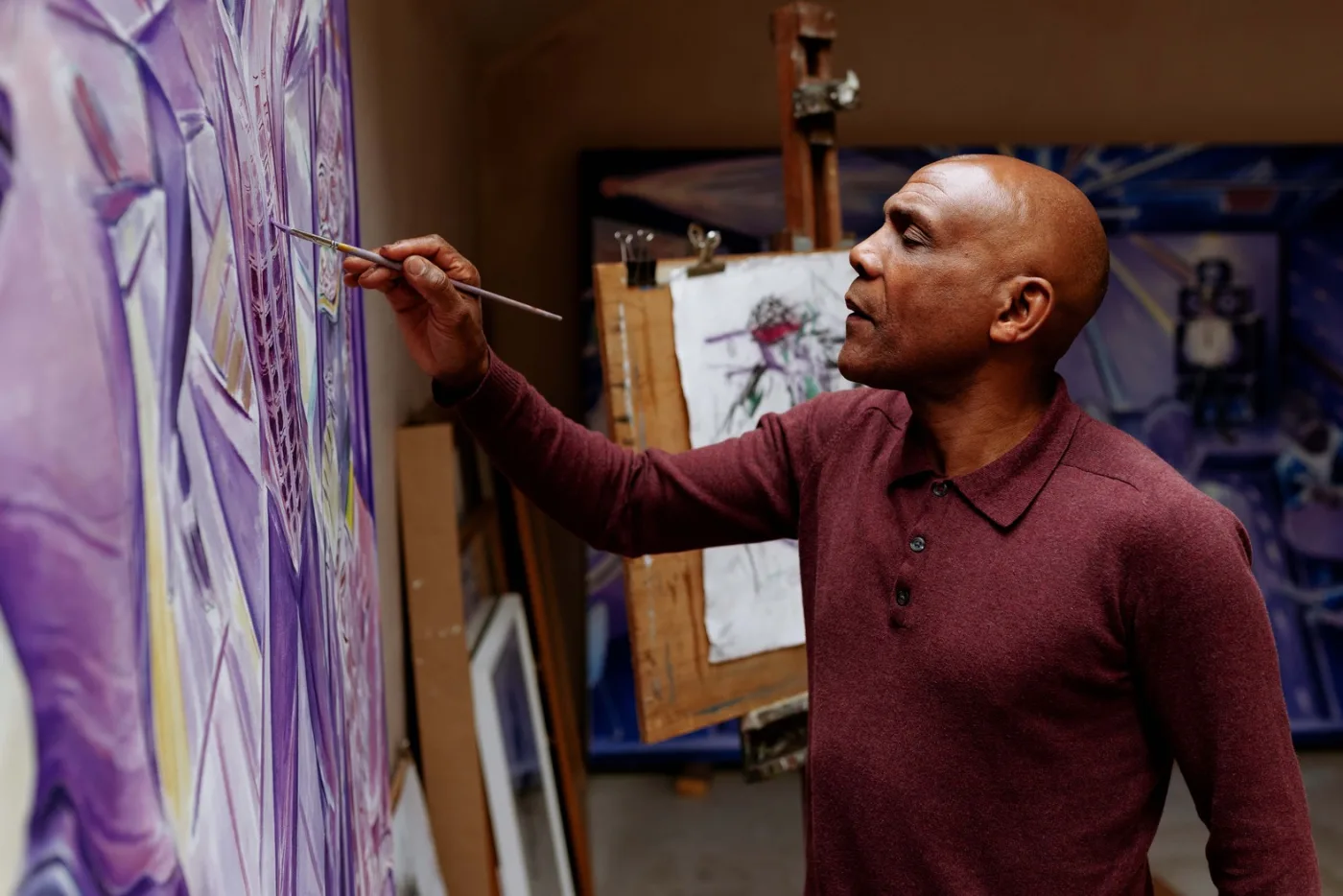
Denzil Forrester's vibrant, colourful works immortalise the dynamic energy of the London reggae and dub nightclub scene during the early 1980s.
Born in Grenada in 1956, Denzil Forrester moved to London in 1967. He now lives and works in Cornwall, UK. Forrester received a BA in Fine Art from the Central School of Art, London in 1979 and an MA in Fine Art from the Royal College of Art, London in 1983. He received the decoration of Member of the Most Excellent Order of the British Empire or MBE in December 2020. Forrester was awarded the Morley Fellowship from Morley College, London in 2019; a Harkness Fellowship in New York in 1986-88; and a scholarship by the British School at Rome in 1983-85.
Pulsating with rhythm, the artist's expressive depictions of dance halls and clubs capture crowds of people moving in unison with the beat of the music. Flashes of vivid colour, gestural brushstrokes and frenetic compositions characterise his work.
Forrester will have solo exhibitions at Kemper Museum of Contemporary Art, Kansas City, Missouri and Institute of Contemporary Art, Miami, Florida in 2023. He was awarded the 2021 South Bank Sky Arts Award for his solo show ‘Itchin & Scratchin’, presented at Nottingham Contemporary and Spike Island, Bristol (2020–2021). A large-scale public artwork by Forrester for Brixton Underground Station was unveiled by Transport for London in September 2019. Forrester's first solo exhibition at Stephen Friedman Gallery opened in April 2019, accompanied by a monograph with texts by Peter Doig, Matthew Higgs and Sam Thorne.
“I first saw Denzil’s paintings at his Royal College of Art degree show in 1983. It was thrilling and unusual to see depictions of East London’s Blues and Dub clubs painted in such a dynamic way. I was humbled and in awe of the ambition and realness of these vital, imposing works. [….] Denzil’s work stood out because it portrayed a world that was scarcely pictured in the fine arts, one that was known to me through music, and one that captured the impact that artists and dub poets such as Linton Kwesi Johnson were having at the time.”
– Peter Doig (artist) commissioned for the catalogue published to accompany 'Denzil Forrester: A Survey', solo exhibition, Stephen Friedman Gallery, London (2019).
Read essay
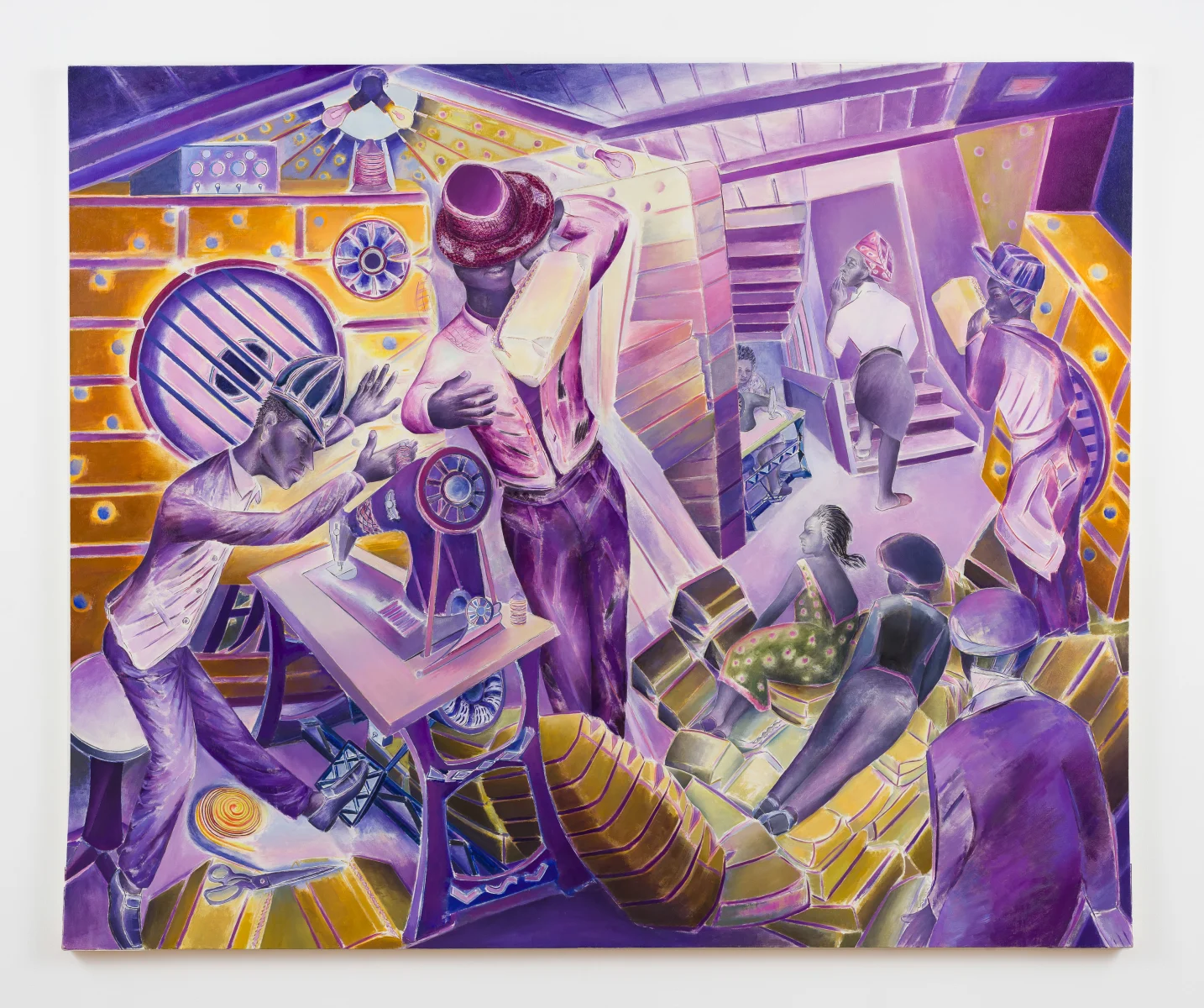
“[O]ne of the most important features of Forrester’s work from the 1980s is the way in which, inadvertently perhaps, it has created a series of historical documents related to the making of Black Britain. The late 1970s and early 1980s saw the burgeoning of the British sound system: mobile, countercultural reggae enterprises characterised by dub music, MCs, DJs, and fiercely partisan followings of young Black people, primarily males. The clubs and other venues in which sound systems operated are graphically depicted in Forrester’s paintings, and it was these spaces he haunted as an artist, seeking to capture the sights, sounds, personalities and carryings on of revellers and night owls.”
– Eddie Chambers (Curator and Professor of Art History at the University of Texas, Austin), commissioned for the catalogue published to accompany 'Denzil Forrester: A Survey', solo exhibition, Stephen Friedman Gallery, London (2019).
Read essay
"Around dawn Forrester would get home. By noon, he would be in his studio, taking a look at his drawings, sometimes for the first time, while the feeling from the night before hadn’t yet dimmed. As he once remarked to Benjamin Zephaniah: "I go drawing at night and during the day I paint at home." From night to day, from the club to the home, from drawing to painting, from fast to slow. These are the transpositions that structure all Forrester's works. ‘When I came to make the paintings, I had the physical experience of having been there in the club. The main thing was being there."
– Sam Thorne (Director of Nottingham Contemporary and Contributing Editor of Frieze) commissioned for the catalogue published to accompany 'Denzil Forrester: A Survey', solo exhibition, Stephen Friedman Gallery, London (2019).
Read essay
"Beneath the high-spirited jubilance of these early works hums the sombre reality of life for the Windrush generation (migrants who arrived in Britain after 1948 from the Caribbean on the SS Empire Windrush). Forrester’s celebration of the vibrancy of Caribbean culture is inseparable from the struggles of assimilation and institutional racism. Shaken by the brutal death in police custody of his friend Winston Rose in 1981, for some years, the artist focused almost exclusively on ‘police paintings’ that portray a community under the constant threat of violence and persecution. A masterful synthesizer of pictorial languages and art-historical references, Forrester creates paintings that are as much documents of our times as they are experiments in gesture, light and colour set to the rhythm of Black music."
– Osei Bonsu (Curator of International Art - Africa, Tate Modern, London) for Frieze Magazine (June–August 2019)
Read article
"I believe Denzil is one of the most important painters to come out of London in the early 1980s and his early works remain as relevant and vital today as when they were first made… However, a revelation for me has been seeing the recent work coming out of Denzil's studio. It has a subtlety and form that has perhaps come about because he is reflecting upon his past. These new paintings are dreamlike and emerge as much from his imagination as from his studies of real life."
– Peter Doig (artist) commissioned for the catalogue published to accompany 'Denzil Forrester: A Survey', solo exhibition, Stephen Friedman Gallery, London (2019).
Read essay
“Forrester’s pictorial language can be described as a kind of sonic dub cubism [...] Influenced by his long-term subject Jah Shaka, who has run a roots-reggae Jamaican sound system in the British capital since the ’70s, Forrester uses his own idiom of pictorial echo, reverb, and delay, through a deep gestural rhythm that emanates and shudders through the body. His citations of Max Beckmann, Jörg Immendorff, Henri Matisse, Pablo Picasso, and Stanley Spencer embody a simultaneous homage to and liberation from tradition.”
– Andrew Hunt (critic) reviews 'Itchin & Scratchin' for Artforum (July–August 2020)
Read review
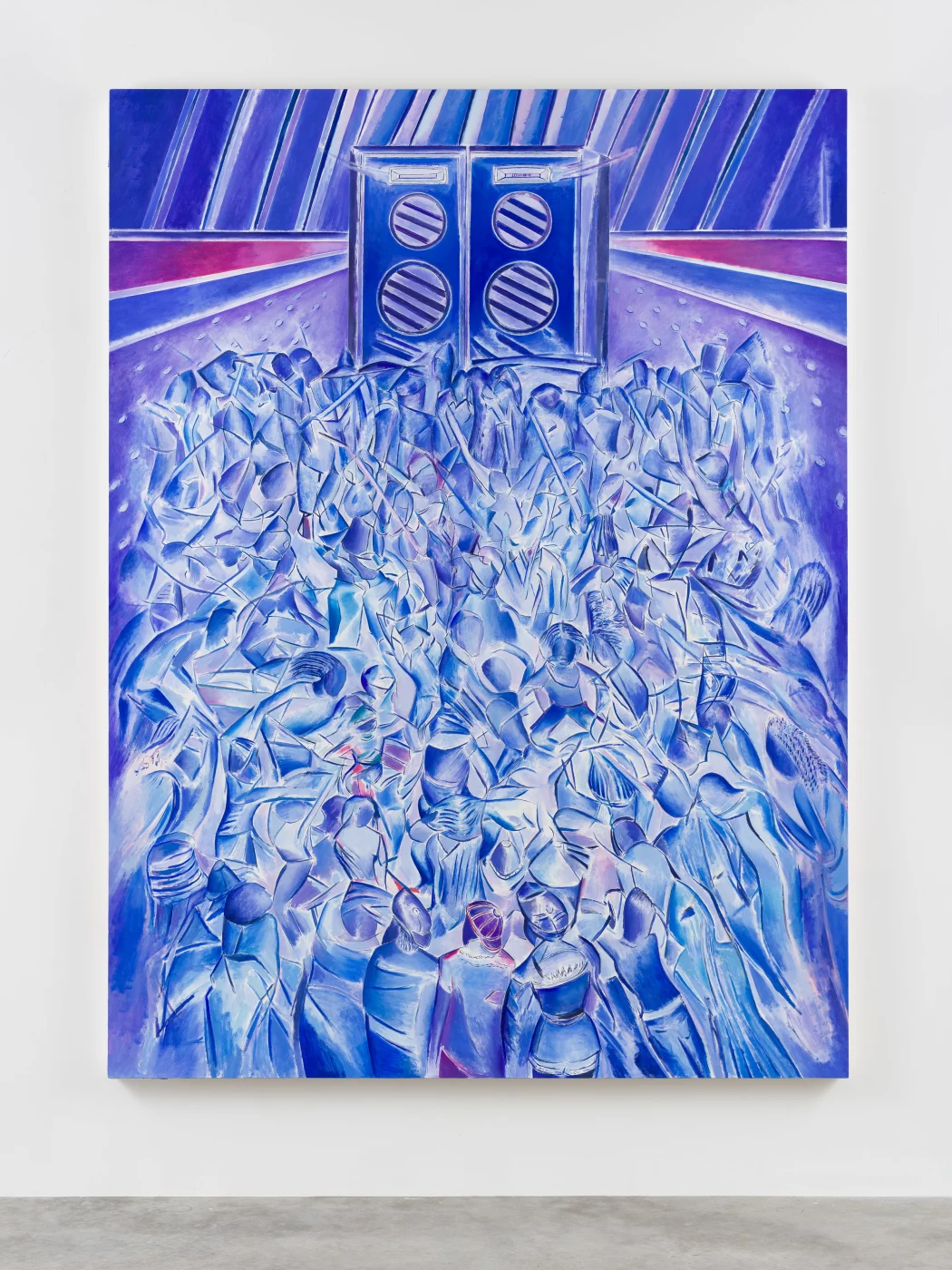
Forrester's paintings for 'Itchin & Scratchin' began in Kingston, Jamaica, where the artist spent a two-week residency in the spring of 2019. Dub originated in Kingston at about the time the artist moved from Grenada to East London in 1967 and the music became intrinsic to Forrester's experience as a member of the West Indian community in London. Forrester explains, "you probably wouldn't see a lot of your friends or family living in London", so it was dub that "rekindled our community spirit". Visiting Kingston for the first time in 2019, Forrester discovered that the dub scene was still flourishing and engaged in sketching the city's nightclubs. On returning to his studio in Cornwall Forrester transposed these frenetic sketches into paintings, using rapid, angular brushstrokes that pulse with the rhythm of the music.

For his first major UK public commission by Transport for London (TFL), Forrester reinterpreted his seminal work 'Three Wicked Men' (1982) to create an immersive, large-scale painting. Now in the Collection of Tate Gallery, 'Three Wicked Men' was made during Forrester's time at the Royal College of Art and the artist has returned to the work several times over the decades. The title is borrowed from a track by Reggae George from which Forrester takes the figures of the policeman, politician and businessman, replacing the latter with a Rasta. 'Brixton Blue' is reflective of the contemporary Black experience and the racial tensions of the time and also features Winston Rose; a friend of Forrester's who died whilst under police restraint in 1981.
"Forrester’s work beautifully pictorializes an unpalatable story of injustice and how a community had no choice but to dance in spite of political angst and discomfort. As many defining stories are slowly fading out of memory and existence due to rapid property development, it’s crucial to find ways to add back in lost colours, characters and context; something 'Brixton Blue' does without hesitation and before the eyes of the many commuters who will enter the station."
– Kadish Morris (Commissioning editor for the Observer New Review) for Frieze Magazine (October 2019)
Read article
